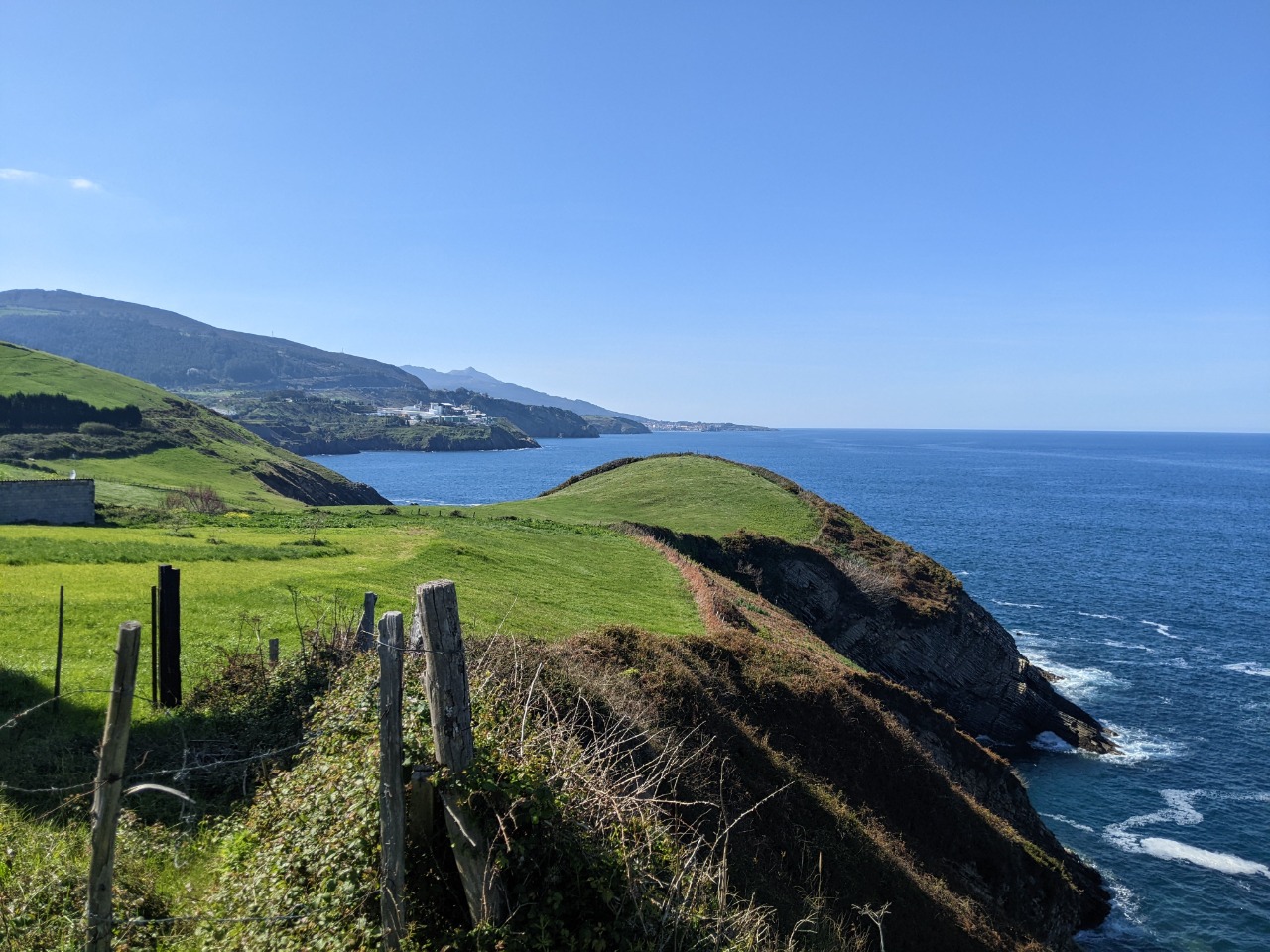Camino Norte and Primitivo
460-ish miles from Bilbao to Santiago
April 5 - 24, 2023 -- compiled by Jeff DePree
featured on jeffdepree.com
}
460-ish miles from Bilbao to Santiago
April 5 - 24, 2023 -- compiled by Jeff DePree
featured on jeffdepree.com
Inexplicably, Delta gave me a full refund on the roundtrip Zurich-NYC flight I had begun in December, and I was able to apply the credit to a new roundtrip from DC to Porto. Since I arrived on the Wednesday of Holy Week, all the buses to the French border were full, so I just started walking from Bilbao.
The Camino del Norte had many beautiful stretches along rugged coastlines, and relatively few urban sections. Since I had only seen like two other pilgrims when I did the Portugues last January, it was a shock to run across other people this time around, but I didn’t mind the opportunity to swap stories and share communal meals. The Primitivo wound through quiet countryside with plenty of semi-abandoned villages, but few inhabited towns. The Frances is an entirely different beast – where other caminos wind through the cracks of existing infrastructure, the Frances has completely transformed the landscape it passes through,
Lodging
Staying in albergues is a highlight of walking the caminos in-season. These cost between 5 and 20 euros, and are purpose-built to meet a pilgrim’s every need. They usually have a kitchen, but will often feed you considerable dinners and breakfasts. There’s almost always a laundry facility - at one $5 place, the owner took each pilgrim’s clothes upon arrival and returned them clean an hour later. While you tend to get stuffed in a room with twenty other people, everyone inevitably goes to sleep at ten and sleeps soundly till seven.
Food
Most restaurants had a Menu del Dia, more often for weekday lunches, but sometimes for dinners and weekends as well. For 10-18 euros, you would get a massive first course of beans, soup, rice, or pasta, then a slab of meat or fish with some form of potatoes, then a dessert you select at random from a rapidly spoken list of every dessert that exists in Spain. The default beverage is an entire bottle of wine, but as long as my blisters weren’t too bad, I would usually opt for a 0.0 beer or sparkling water. Sometimes you get a free coffee afterwards, but more often than not, I would just sit there, awkwardly waiting for the waiter to make the next move, before finally giving up and walking to the cash register.
On the days when no restaurants materialized, I could stop at one of an innumerable collection of village bars. These are open all day and will usually sell you a slice of potato omelet for 2 euros. You can also order any sort of coffee or drink for a buck or two.
Weather
The weather was sometimes terrible, but predictably so, and it was never particularly cold. For the two days with ten hours of sideways rain, I put on a full rain suit and pack cover first thing in the morning, and never took them off. On any clear day, it would get unbearably sunny around 2pm, and I would cower under my wide-brimmed hat and scurry from one patch of shade to the next. I might invest in a parasol before my next trip to northern Spain.
Crowds
On the Norte and Primitivo, I would only see a few people on the road each day, but then would end up grabbing one of the last few beds at a packed albergue. One famous albergue was hosting 77 people the night I arrived. But sleeping options were prolific enough that I rarely saw the need to call ahead. On the Frances, there was rarely a moment when I couldn’t see groups both ahead and behind; there were also tons of packless bikes and e-bikes sharing the way, though I’m not sure what they were up to.
Remote Work
Working from the albergues was surprisingly solid. There was usually a comfortable common area with outlets and perfect wifi. Sometimes I would get chased out for dinner, but I could work from my bunk until the kitchen cleared out. I had purchased a Vodafone sim with 50gb for 10 euros, so I could’ve gone the whole trip without wifi if needed (I ended up using 3gb).
www.strava.com/activities/8843372049
The Camino del Norte had many beautiful stretches along rugged coastlines, and relatively few urban sections. Since I had only seen like two other pilgrims when I did the Portugues last January, it was a shock to run across other people this time around, but I didn’t mind the opportunity to swap stories and share communal meals. The Primitivo wound through quiet countryside with plenty of semi-abandoned villages, but few inhabited towns. The Frances is an entirely different beast – where other caminos wind through the cracks of existing infrastructure, the Frances has completely transformed the landscape it passes through,
Lodging
Staying in albergues is a highlight of walking the caminos in-season. These cost between 5 and 20 euros, and are purpose-built to meet a pilgrim’s every need. They usually have a kitchen, but will often feed you considerable dinners and breakfasts. There’s almost always a laundry facility - at one $5 place, the owner took each pilgrim’s clothes upon arrival and returned them clean an hour later. While you tend to get stuffed in a room with twenty other people, everyone inevitably goes to sleep at ten and sleeps soundly till seven.
Food
Most restaurants had a Menu del Dia, more often for weekday lunches, but sometimes for dinners and weekends as well. For 10-18 euros, you would get a massive first course of beans, soup, rice, or pasta, then a slab of meat or fish with some form of potatoes, then a dessert you select at random from a rapidly spoken list of every dessert that exists in Spain. The default beverage is an entire bottle of wine, but as long as my blisters weren’t too bad, I would usually opt for a 0.0 beer or sparkling water. Sometimes you get a free coffee afterwards, but more often than not, I would just sit there, awkwardly waiting for the waiter to make the next move, before finally giving up and walking to the cash register.
On the days when no restaurants materialized, I could stop at one of an innumerable collection of village bars. These are open all day and will usually sell you a slice of potato omelet for 2 euros. You can also order any sort of coffee or drink for a buck or two.
Weather
The weather was sometimes terrible, but predictably so, and it was never particularly cold. For the two days with ten hours of sideways rain, I put on a full rain suit and pack cover first thing in the morning, and never took them off. On any clear day, it would get unbearably sunny around 2pm, and I would cower under my wide-brimmed hat and scurry from one patch of shade to the next. I might invest in a parasol before my next trip to northern Spain.
Crowds
On the Norte and Primitivo, I would only see a few people on the road each day, but then would end up grabbing one of the last few beds at a packed albergue. One famous albergue was hosting 77 people the night I arrived. But sleeping options were prolific enough that I rarely saw the need to call ahead. On the Frances, there was rarely a moment when I couldn’t see groups both ahead and behind; there were also tons of packless bikes and e-bikes sharing the way, though I’m not sure what they were up to.
Remote Work
Working from the albergues was surprisingly solid. There was usually a comfortable common area with outlets and perfect wifi. Sometimes I would get chased out for dinner, but I could work from my bunk until the kitchen cleared out. I had purchased a Vodafone sim with 50gb for 10 euros, so I could’ve gone the whole trip without wifi if needed (I ended up using 3gb).
www.strava.com/activities/8843372049
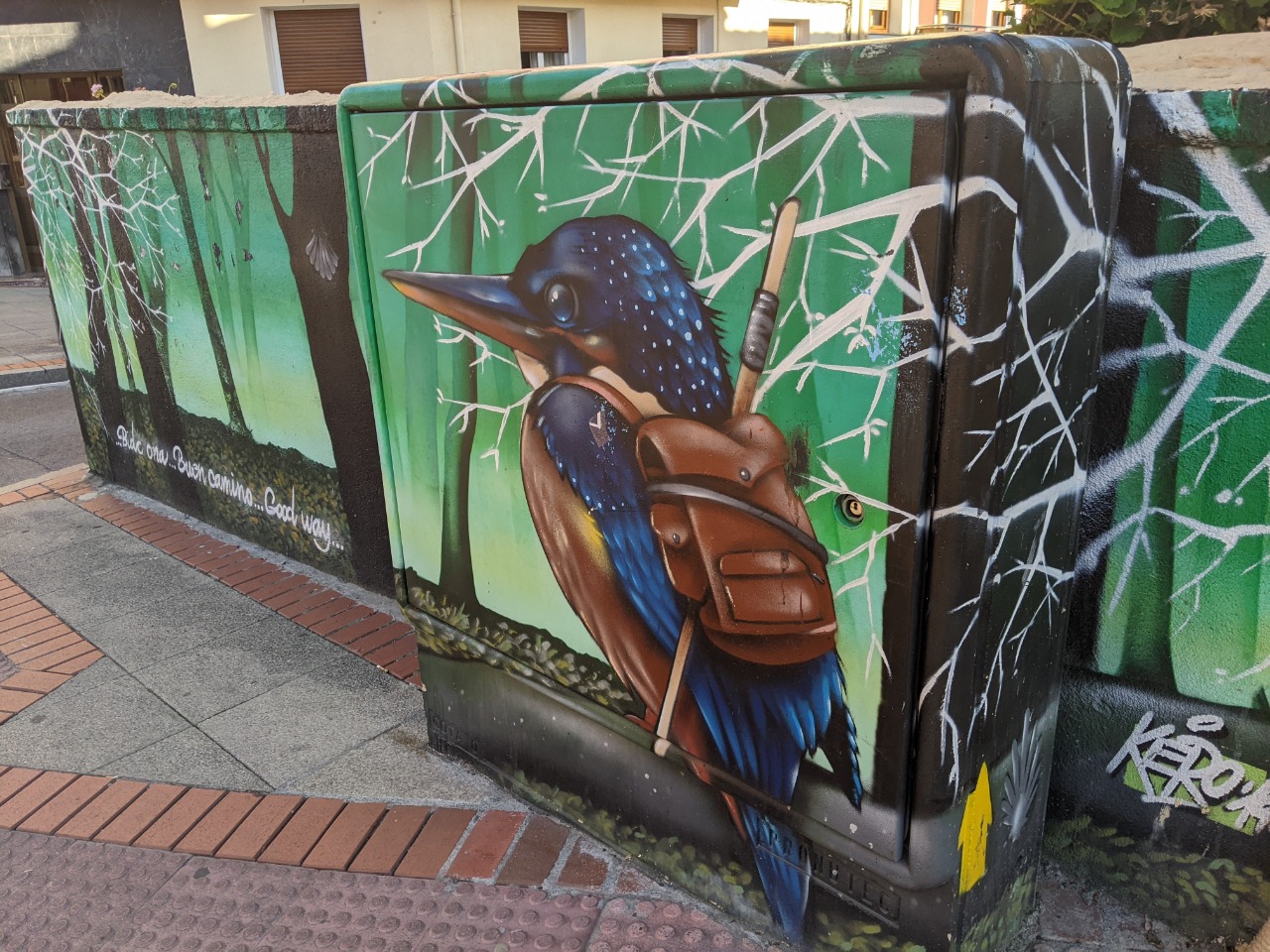
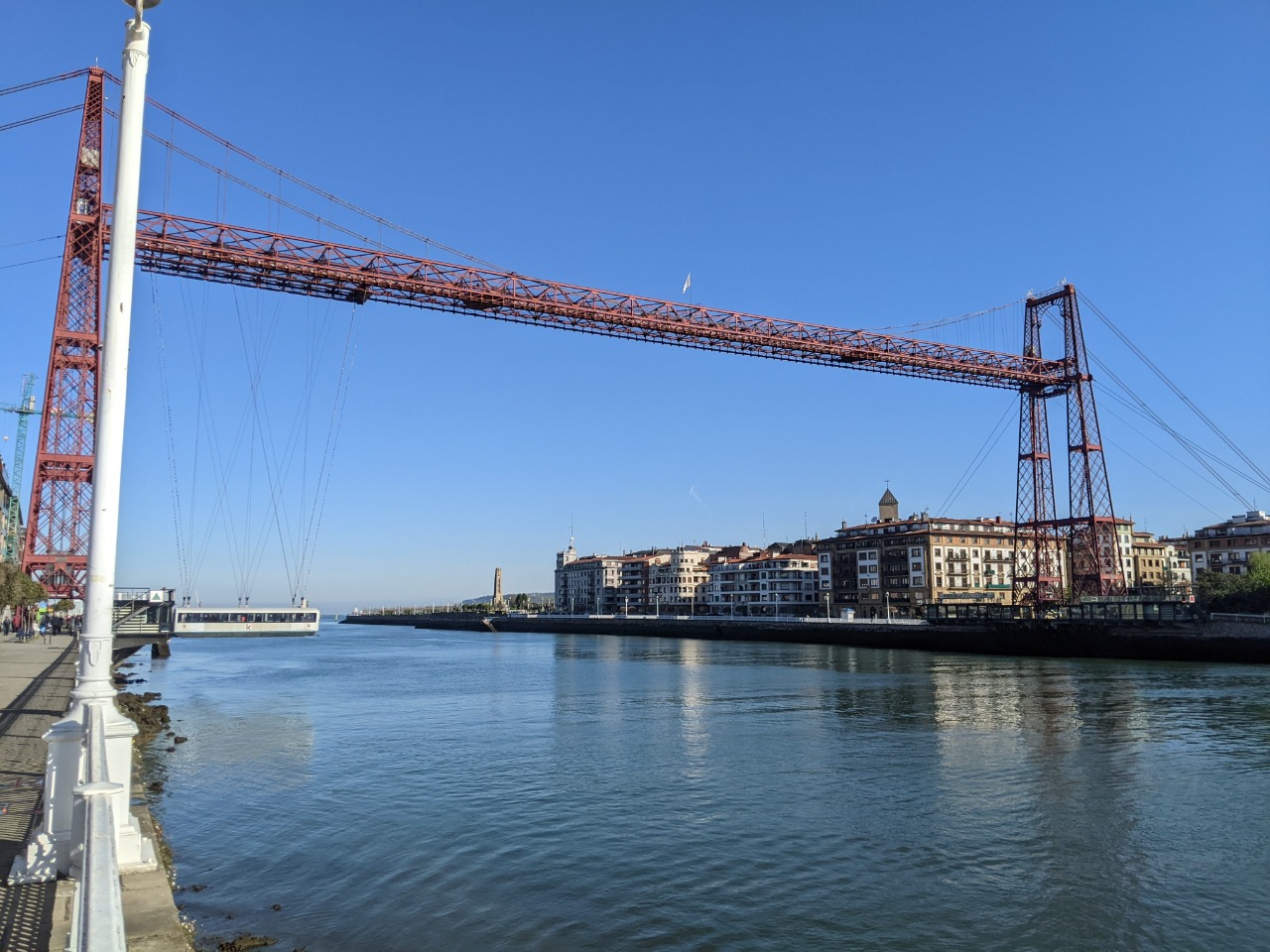
Apparently, there's a handful of these contraptions scattered throughout the world.
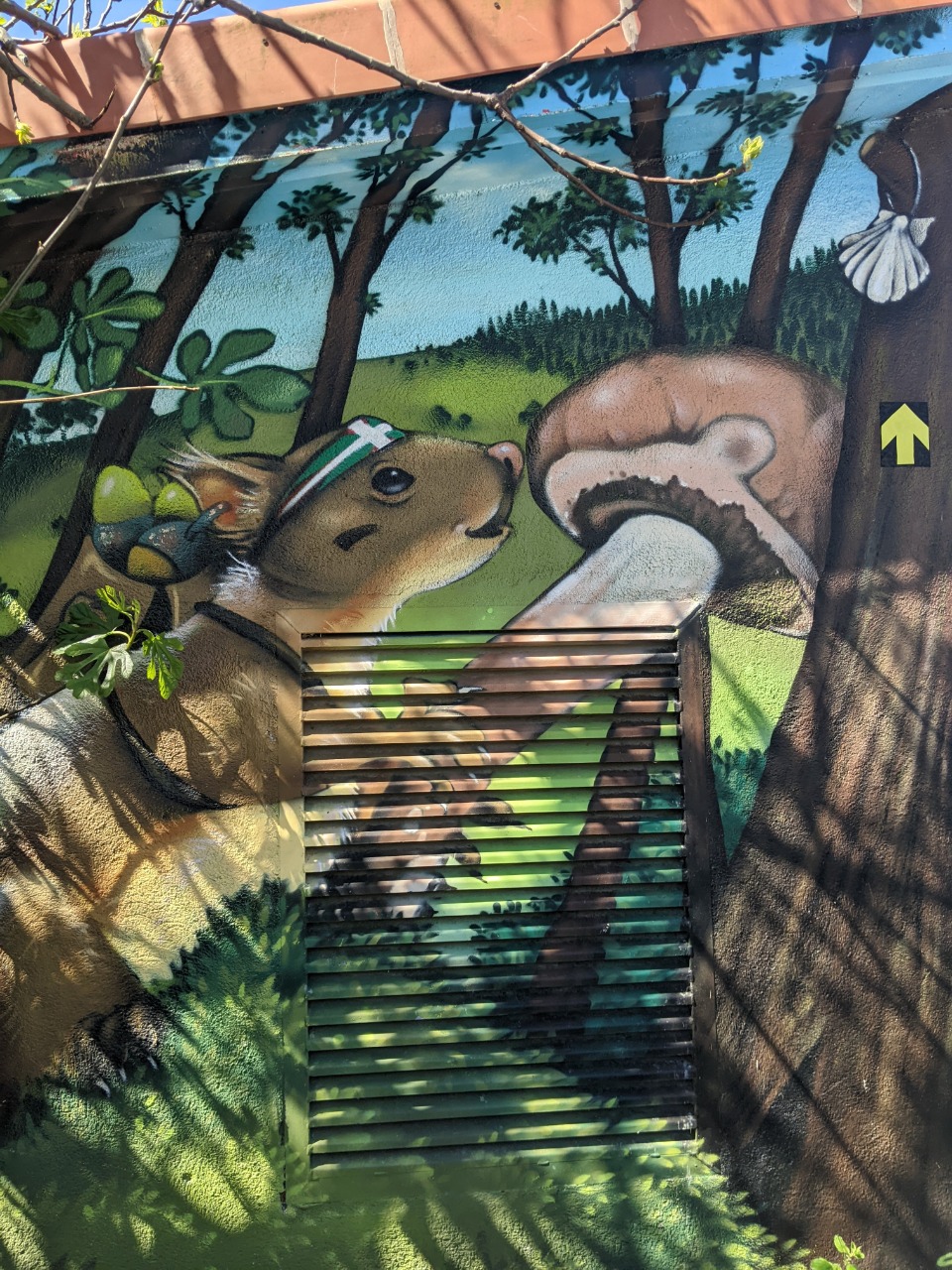
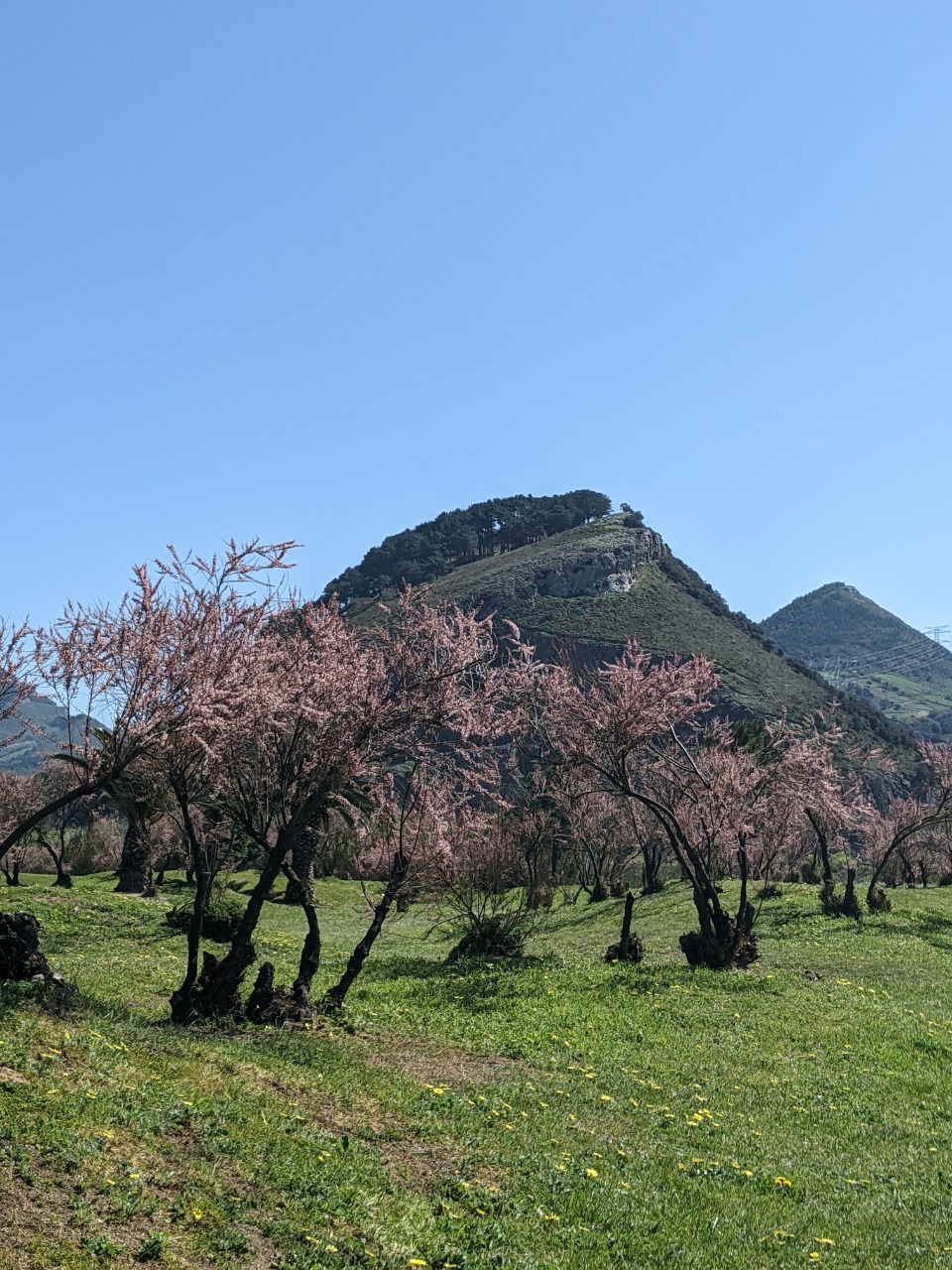
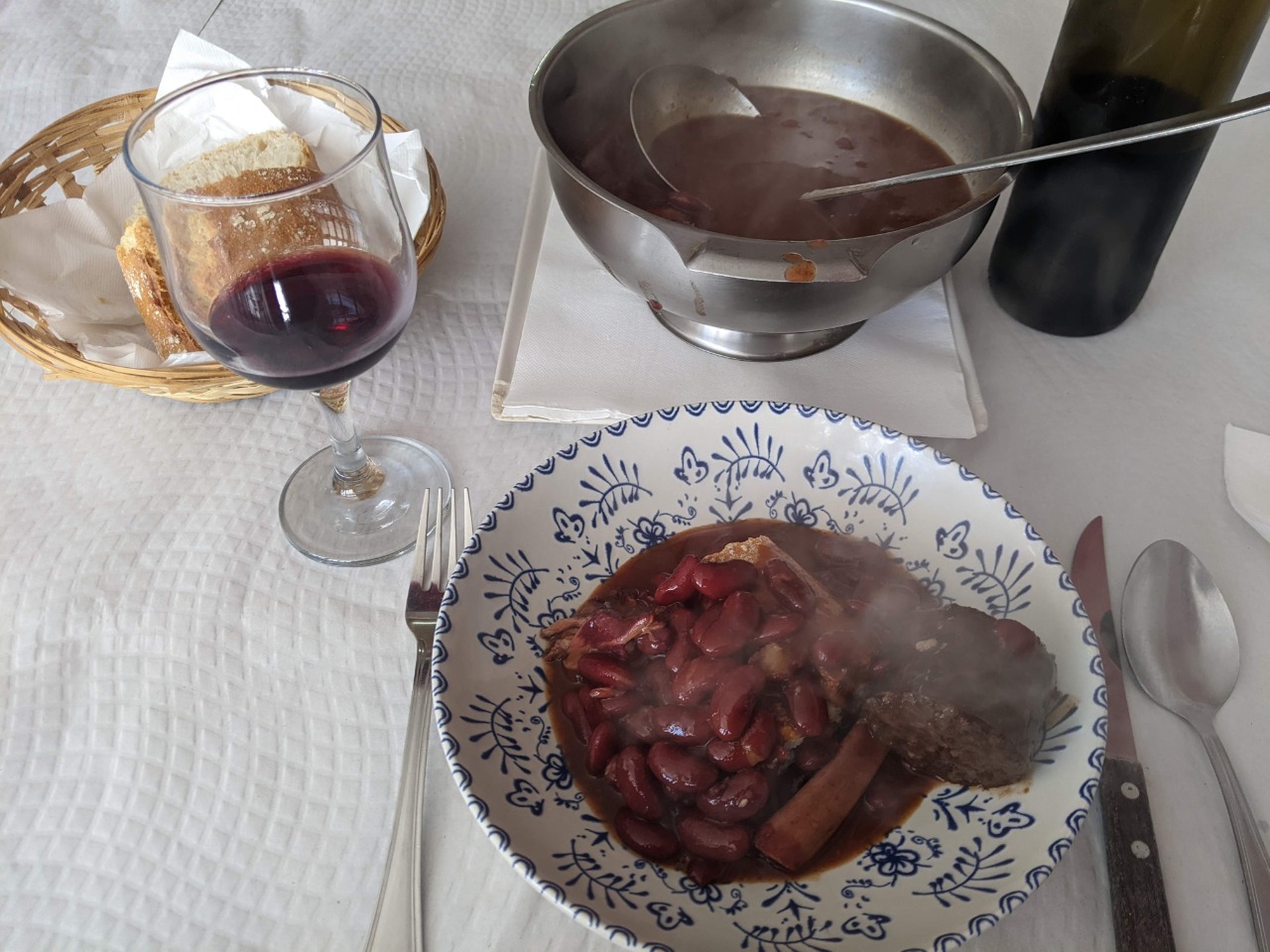
Course one: giant tub of beans! ...accompanied by an entire bottle of wine.
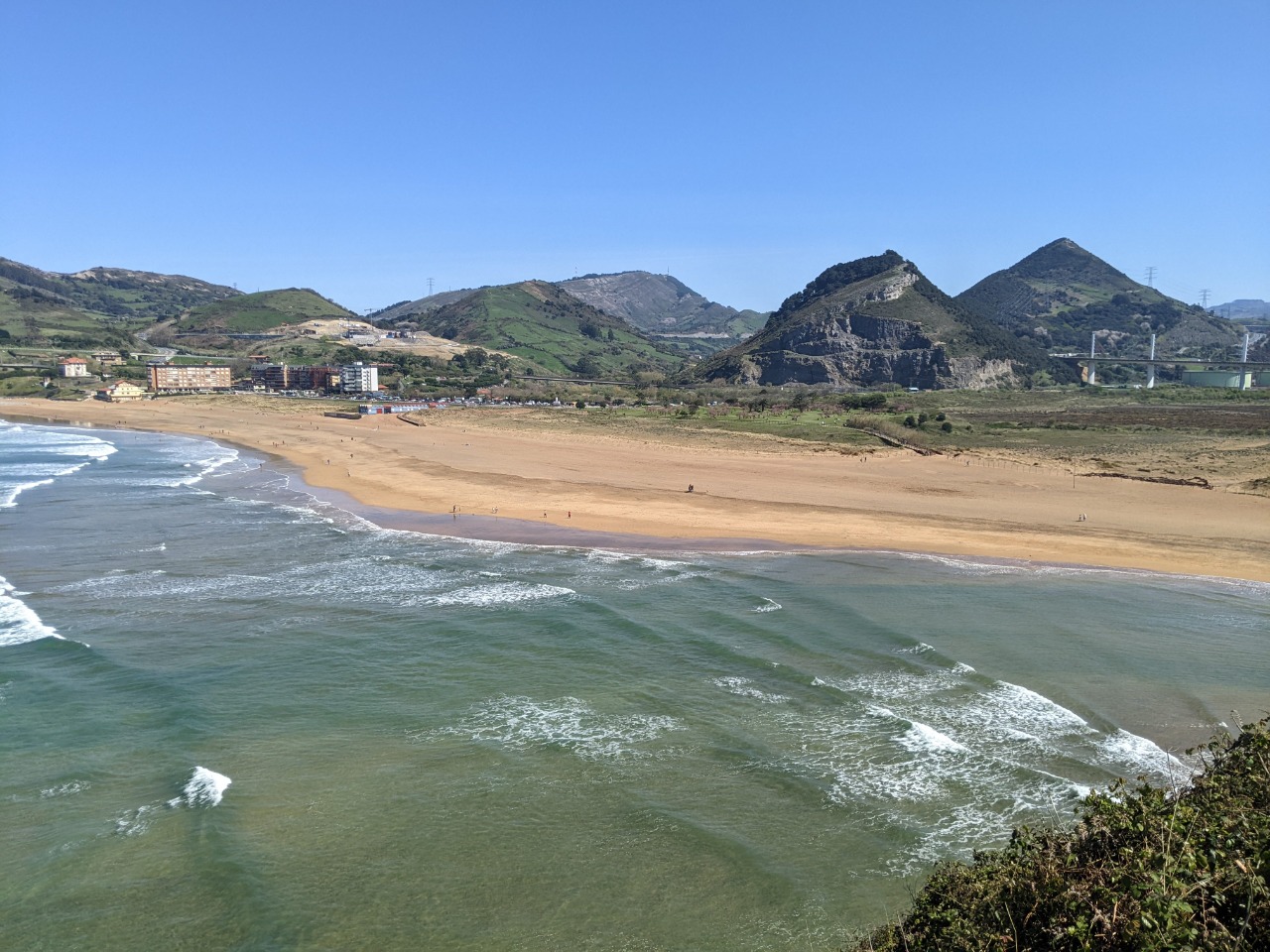
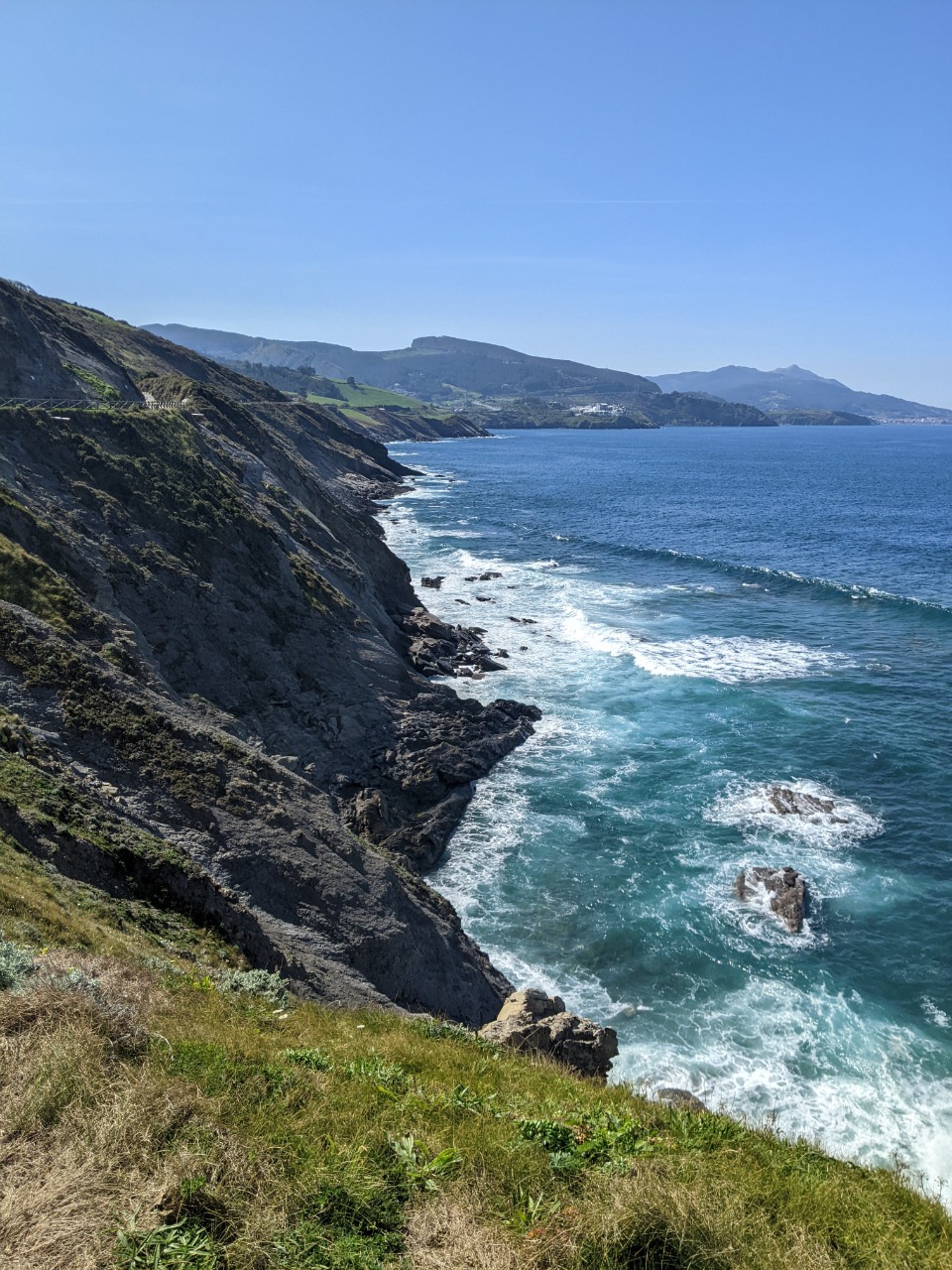
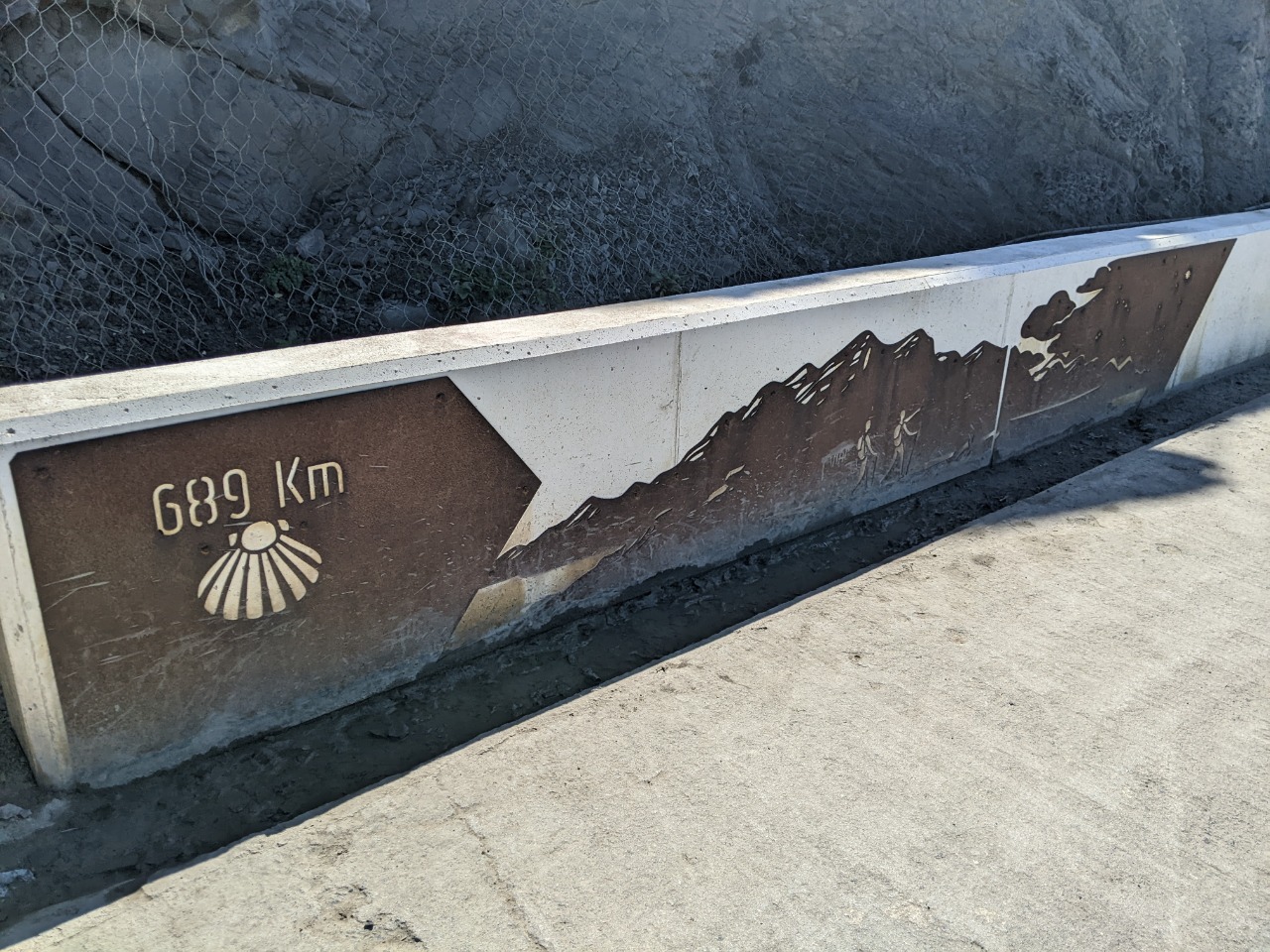
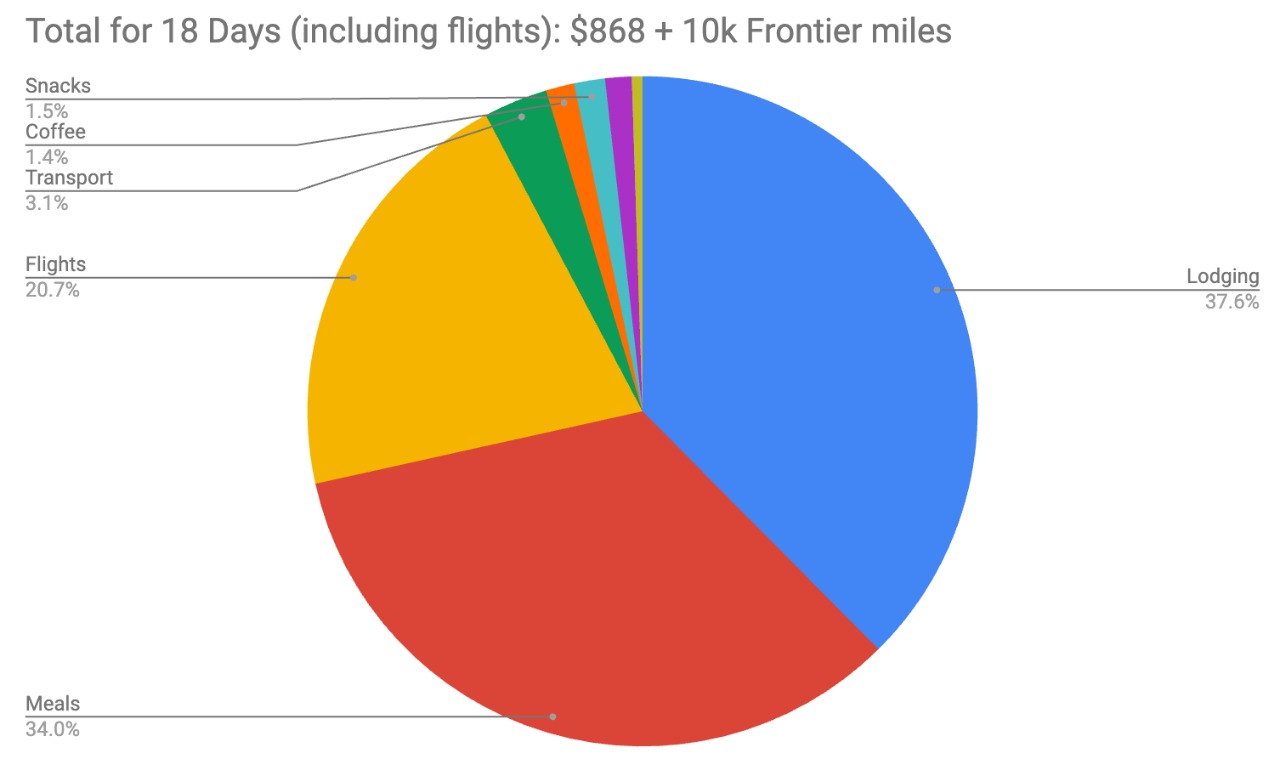
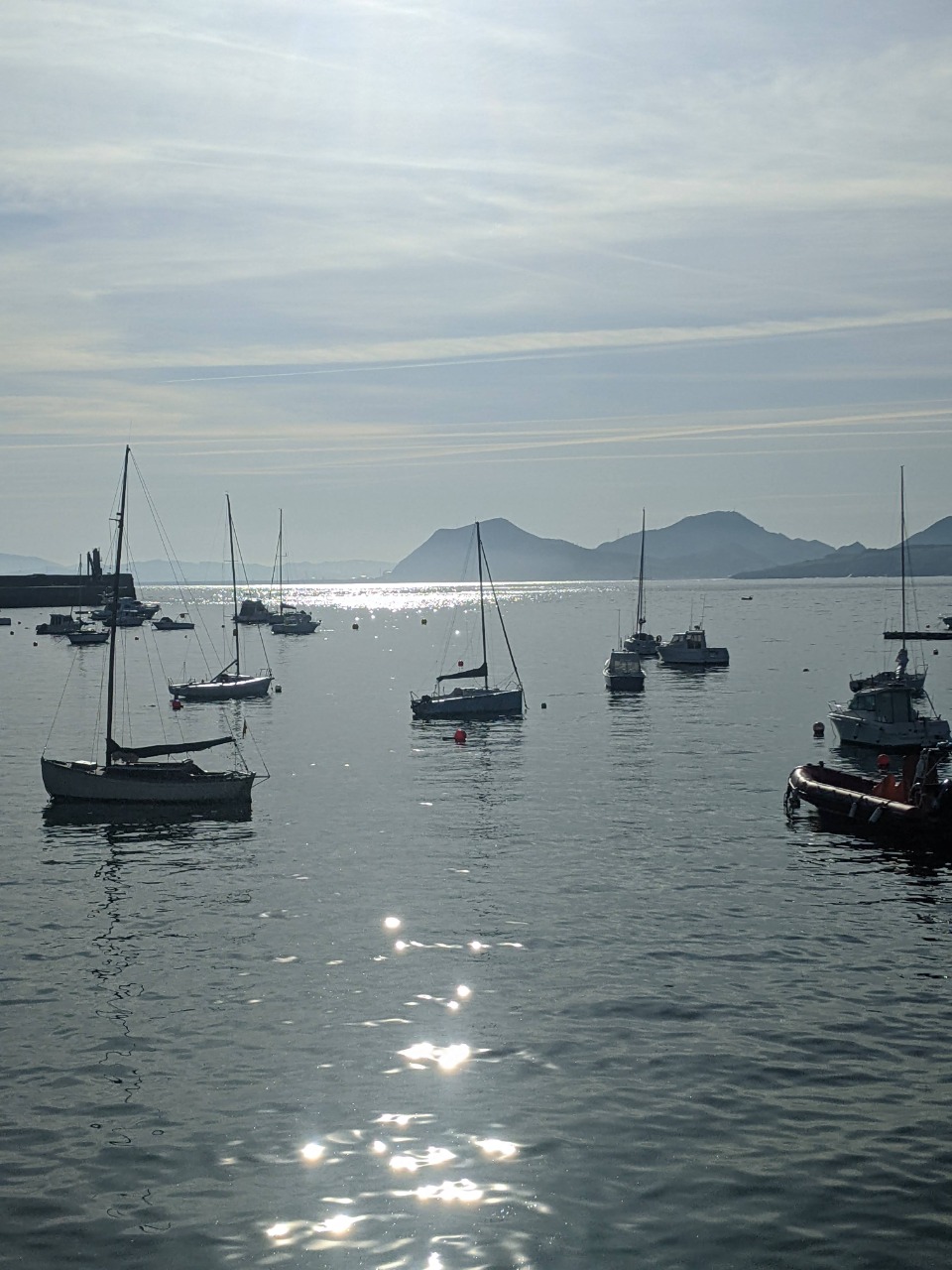
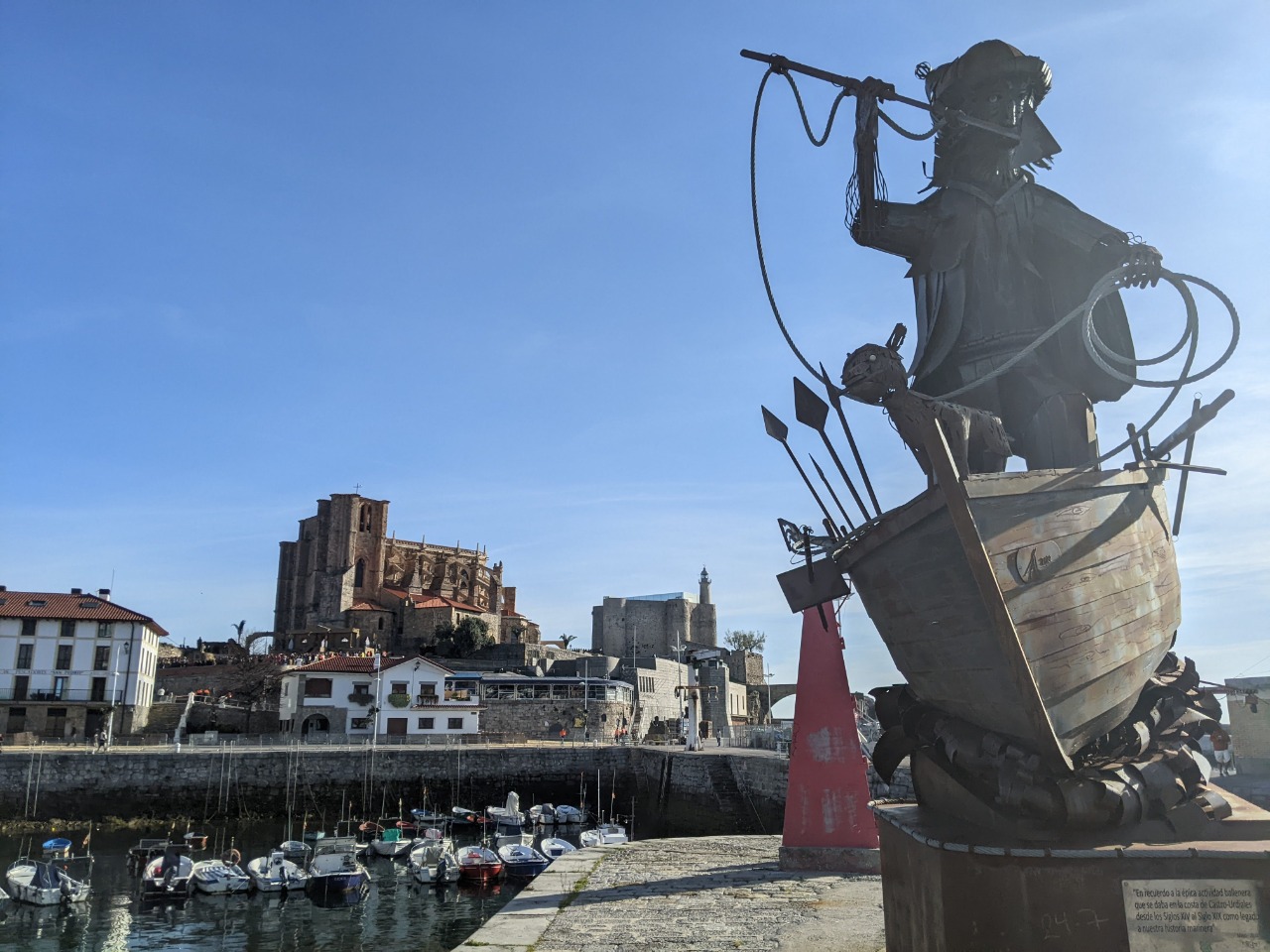
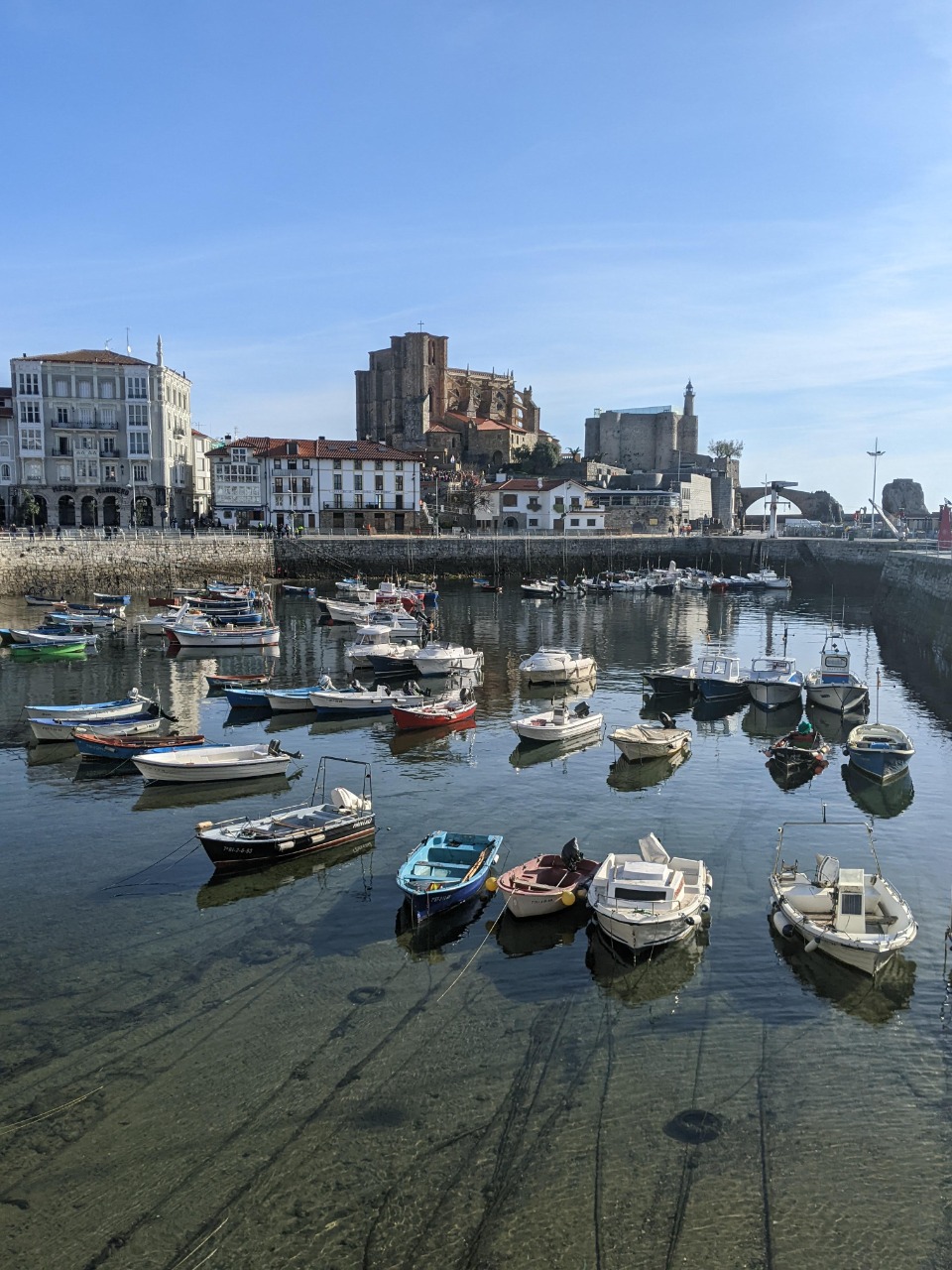
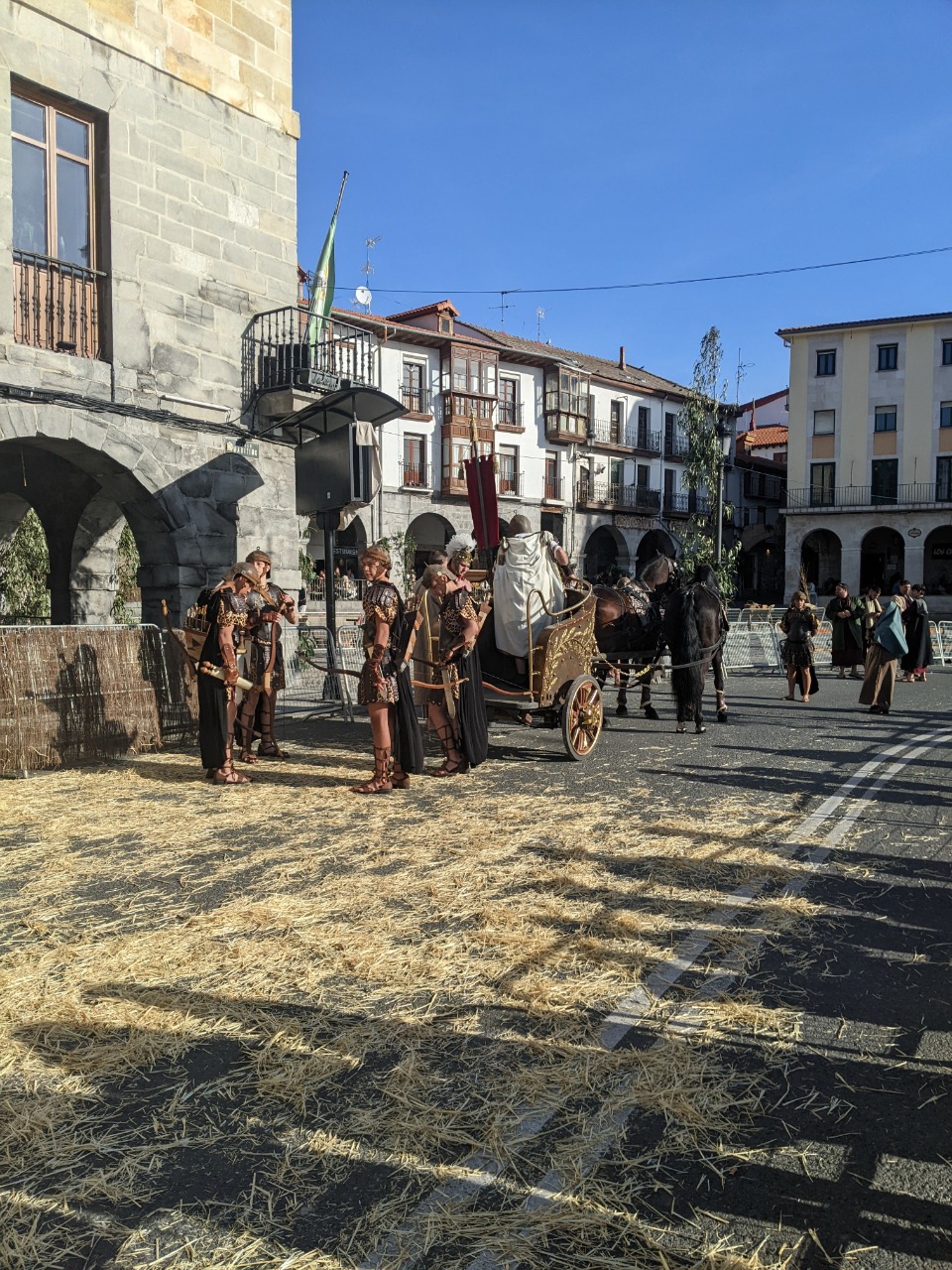
Unusual gathering of chariots and charioteers.
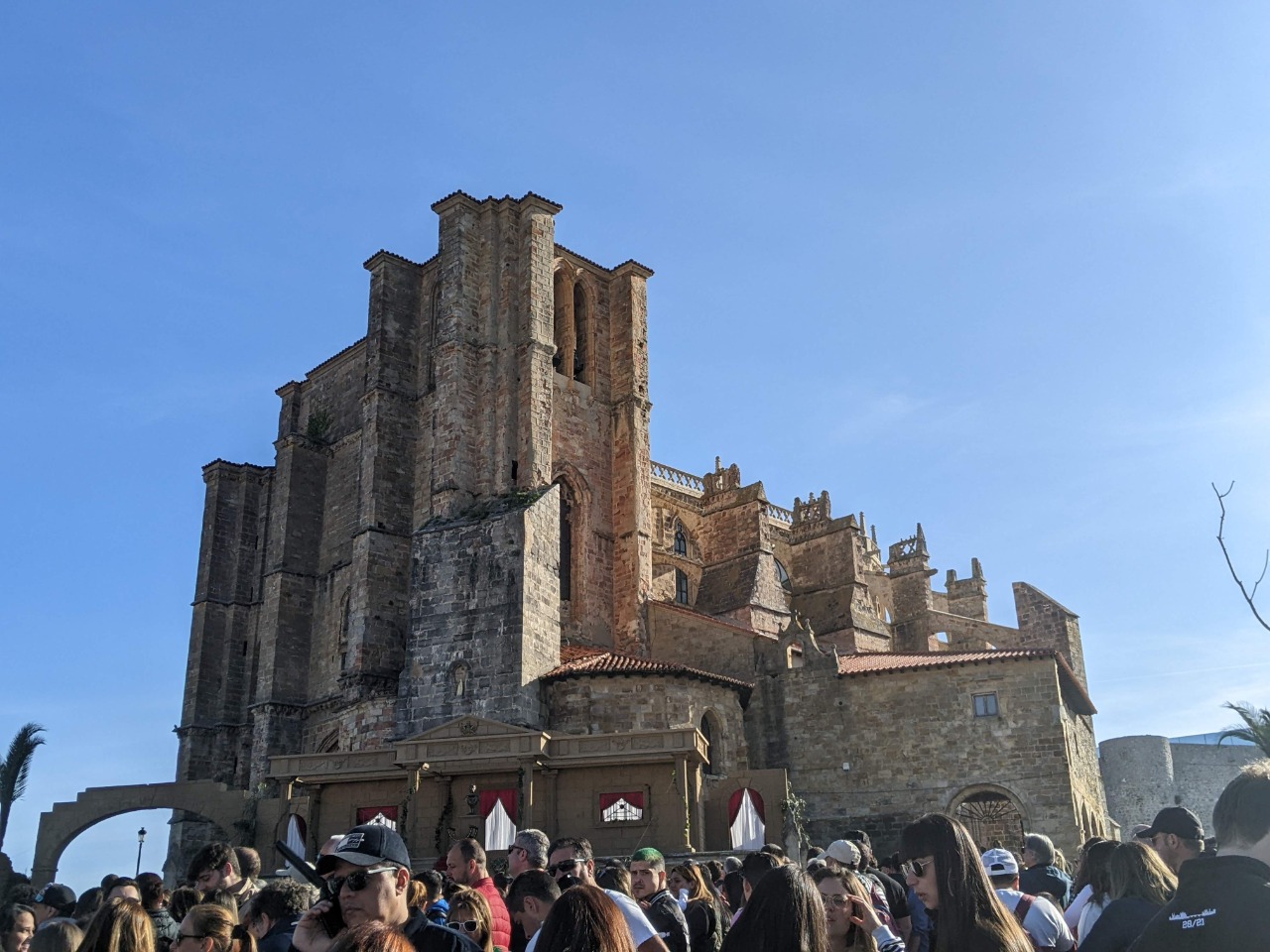
Temporary Roman forum
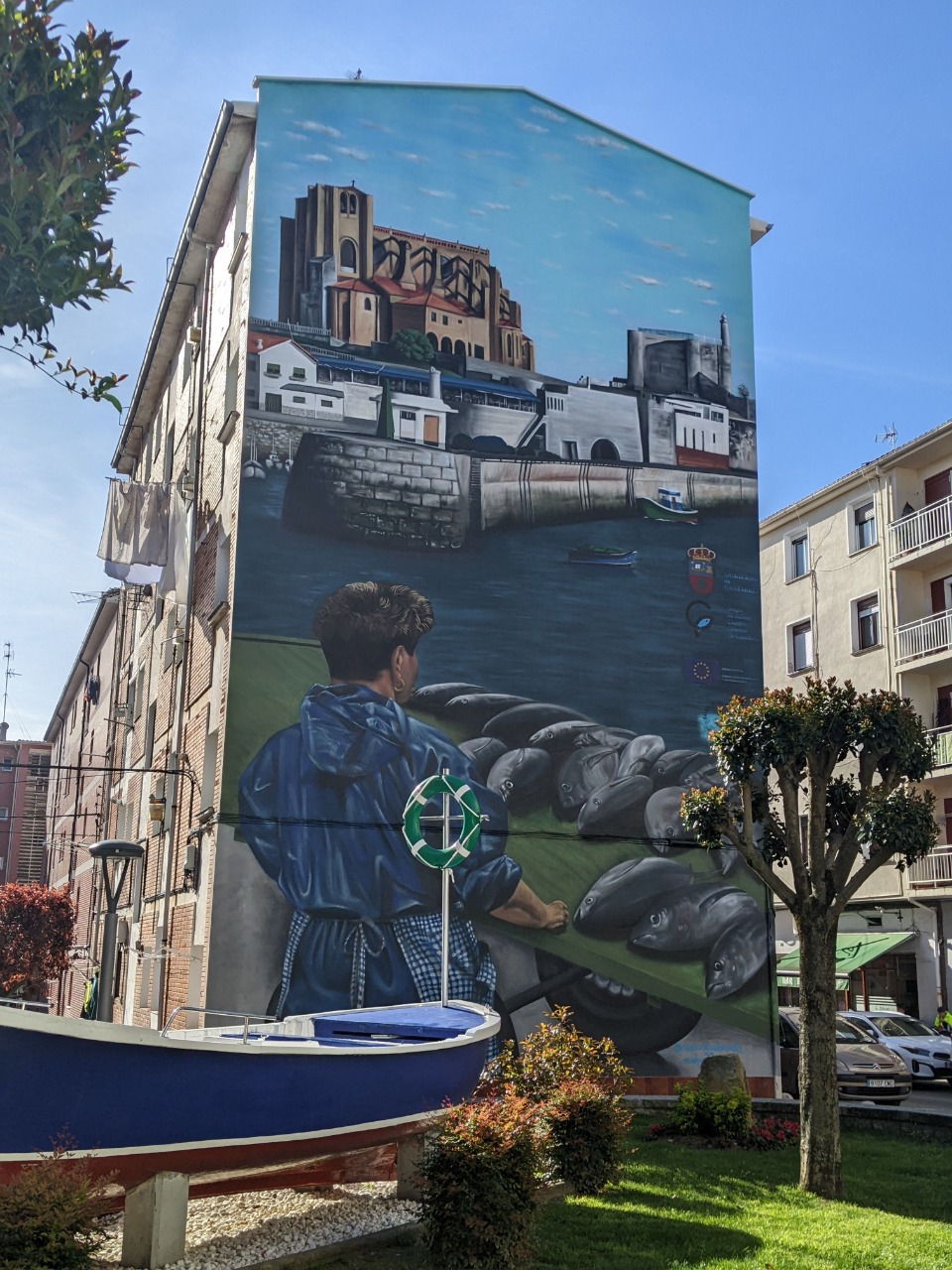
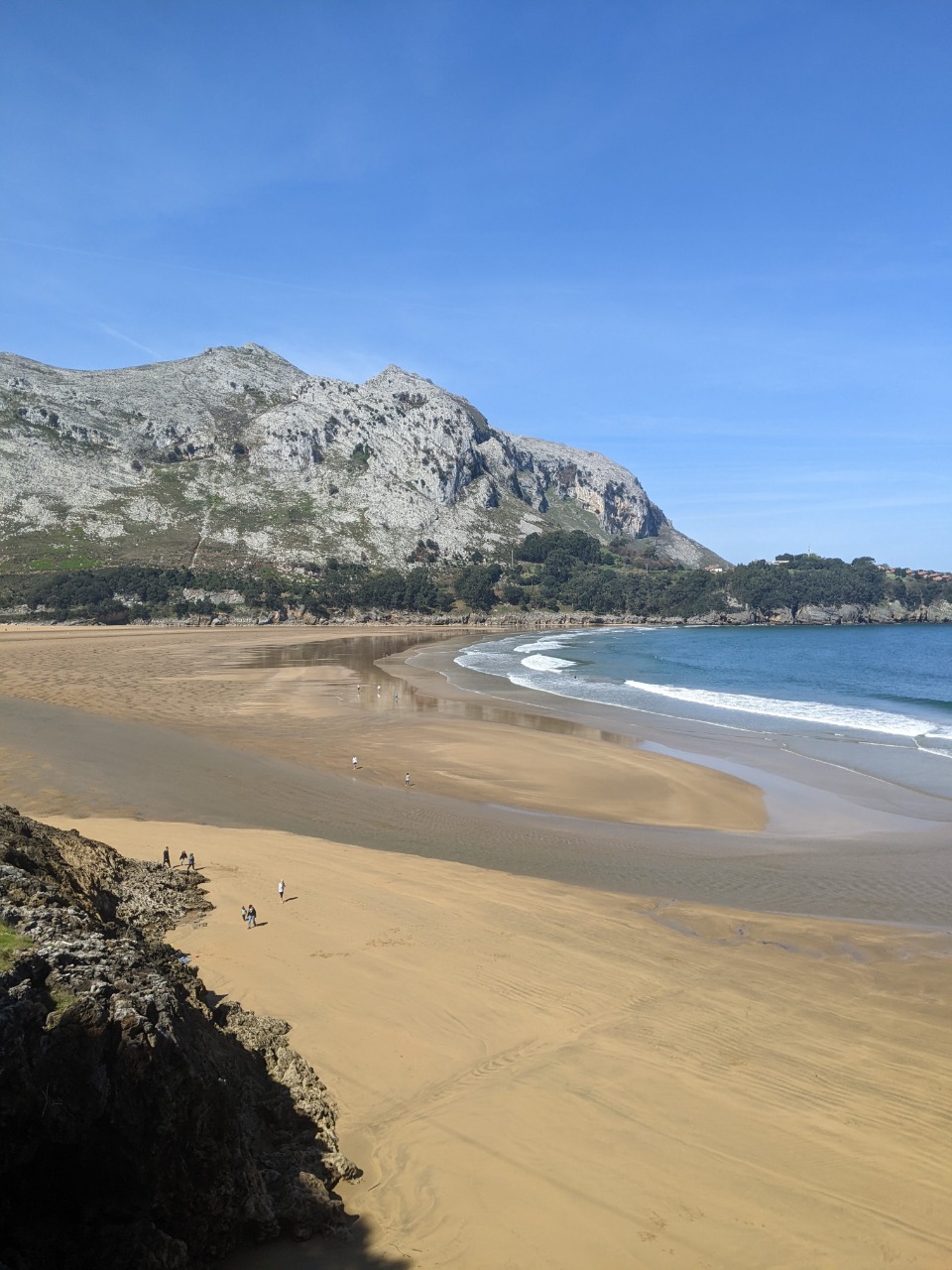
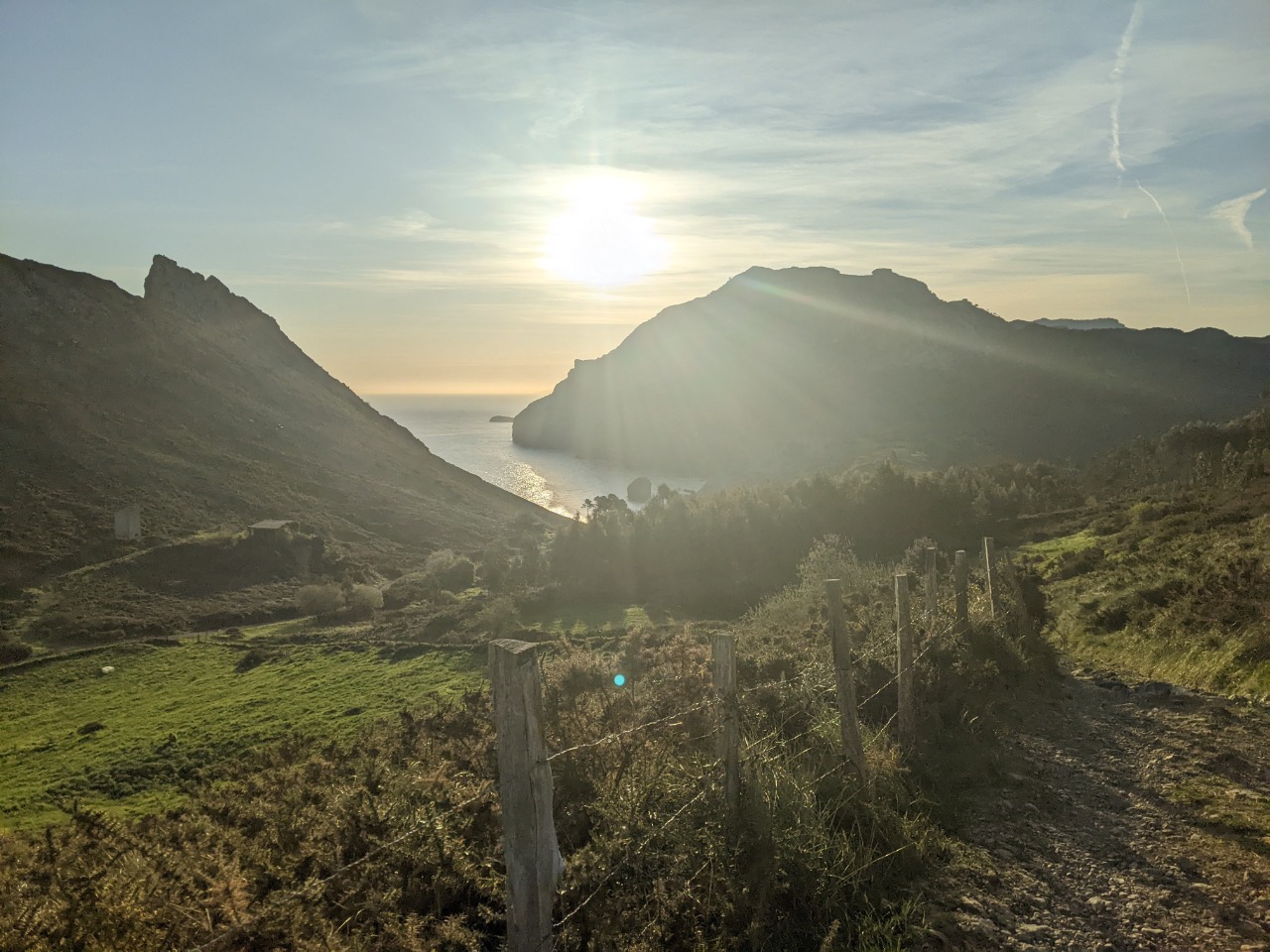
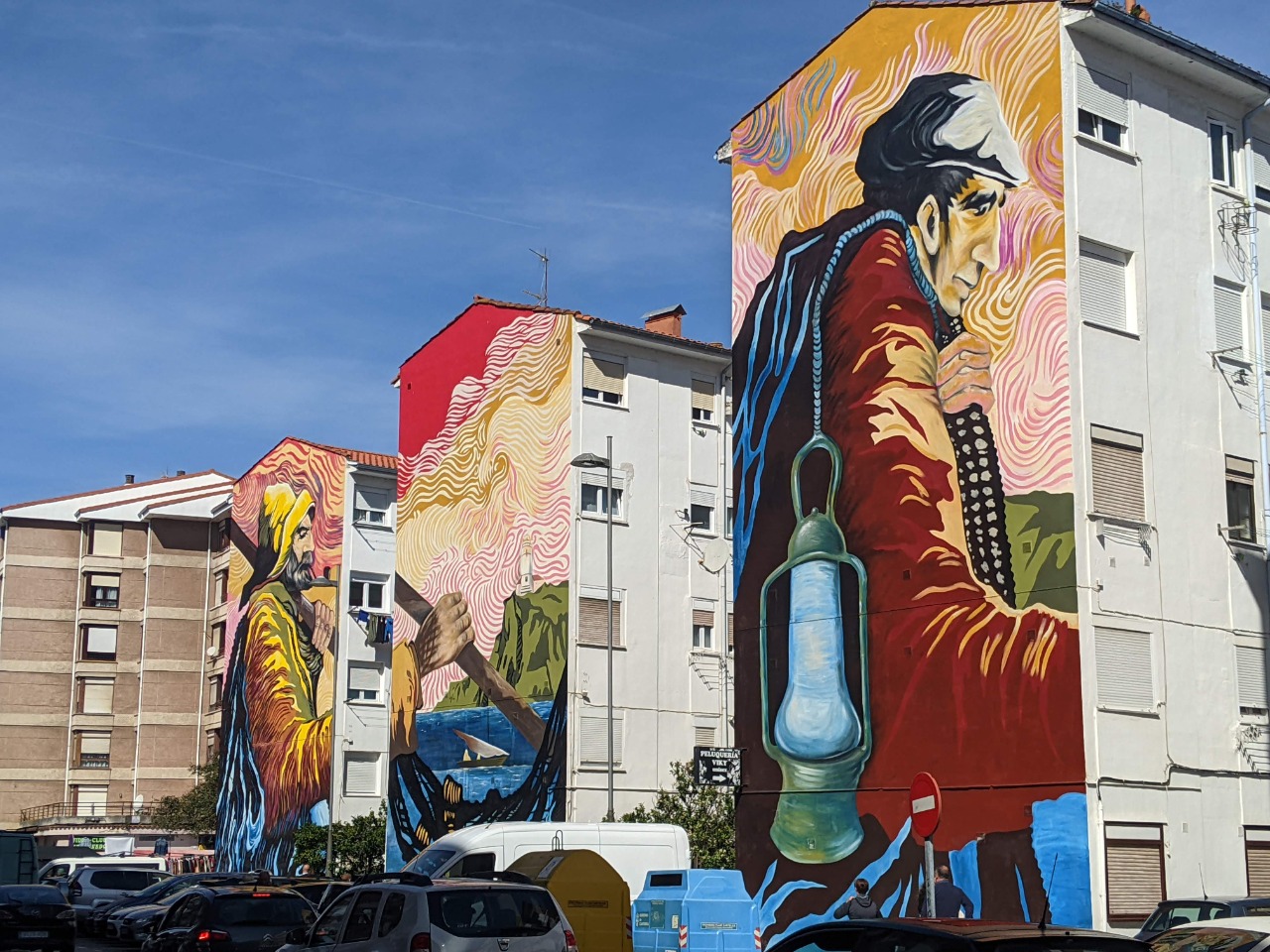
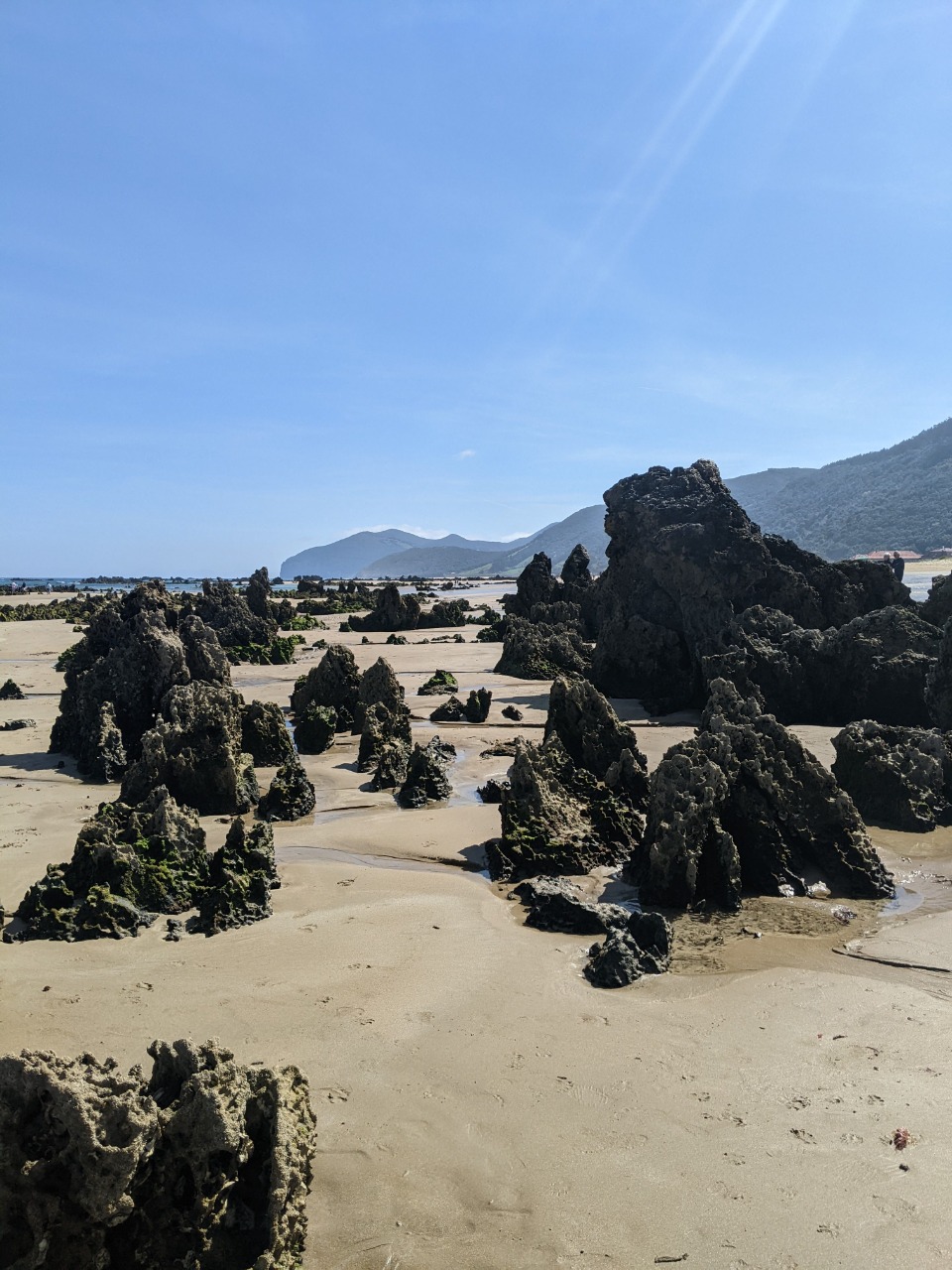
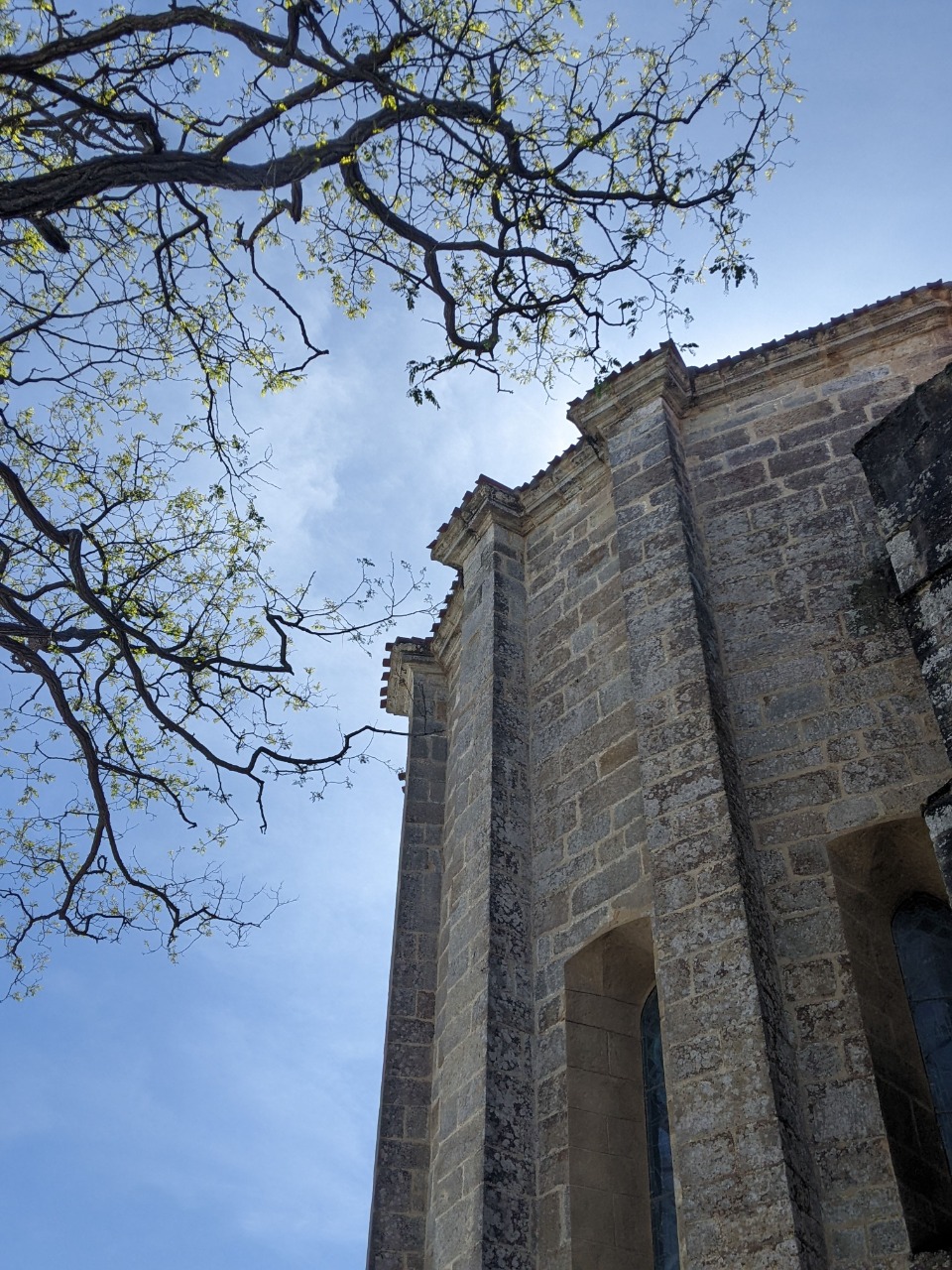
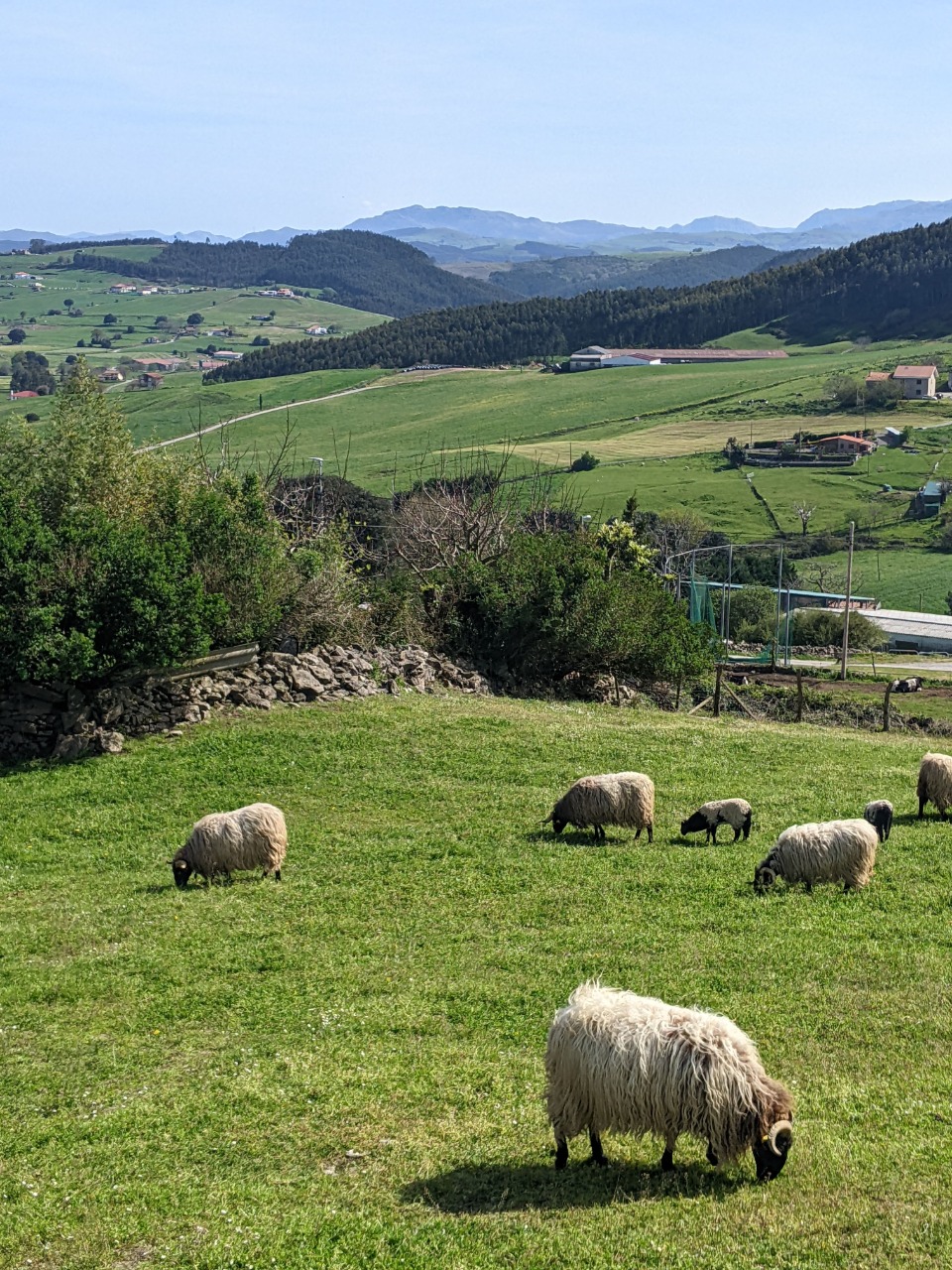
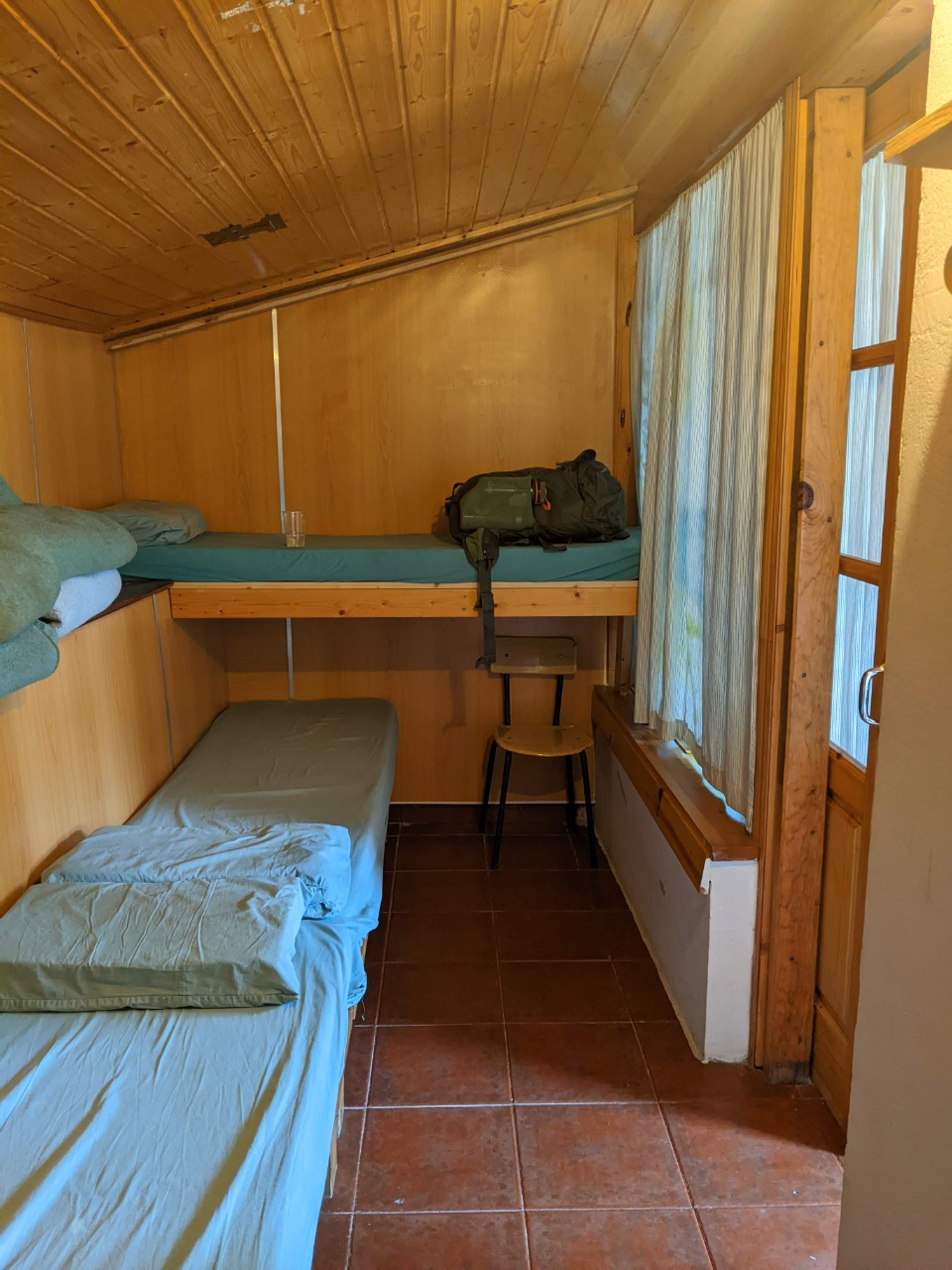
How do you pack 100+ pilgrims into one albergue?
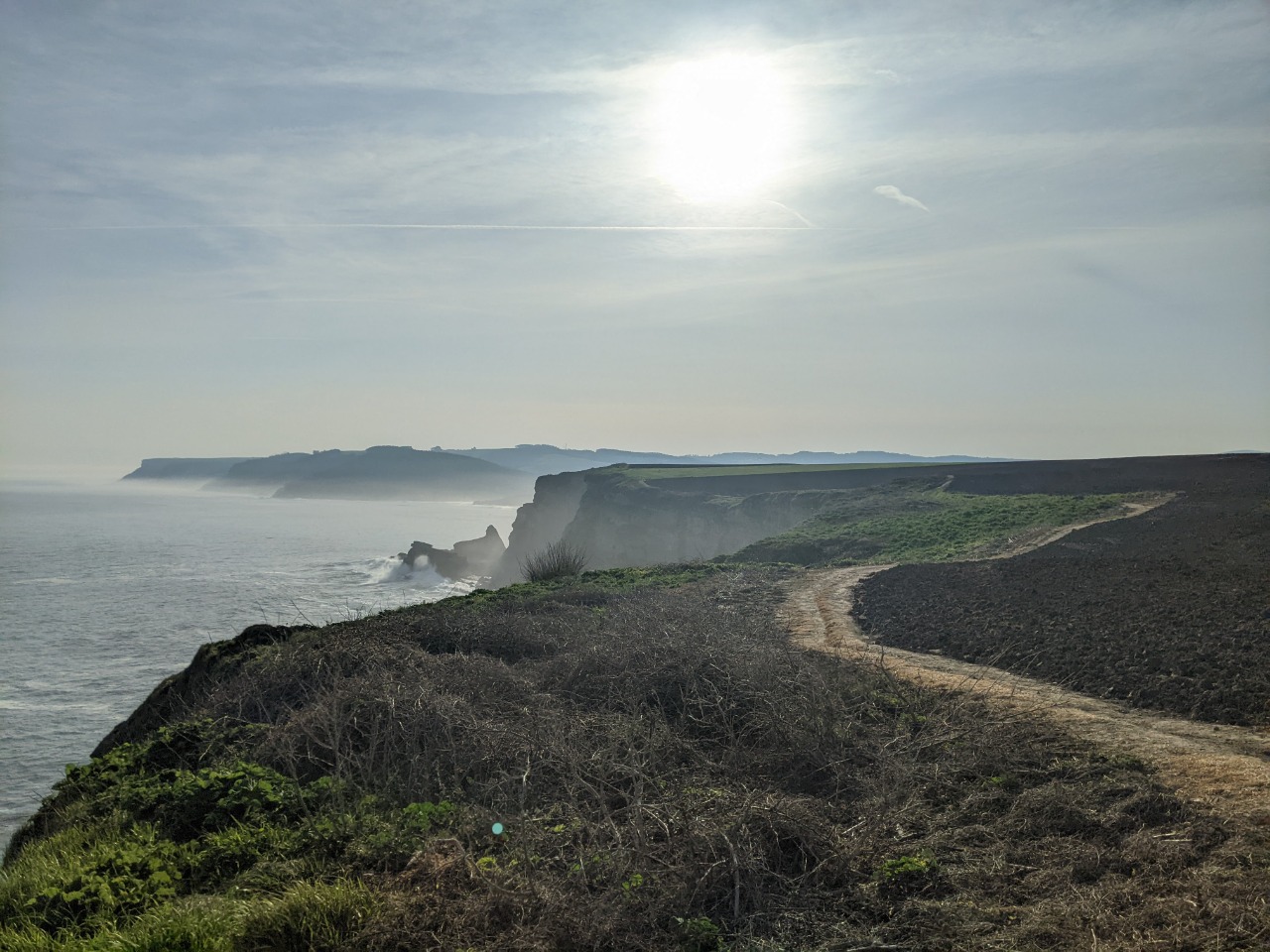
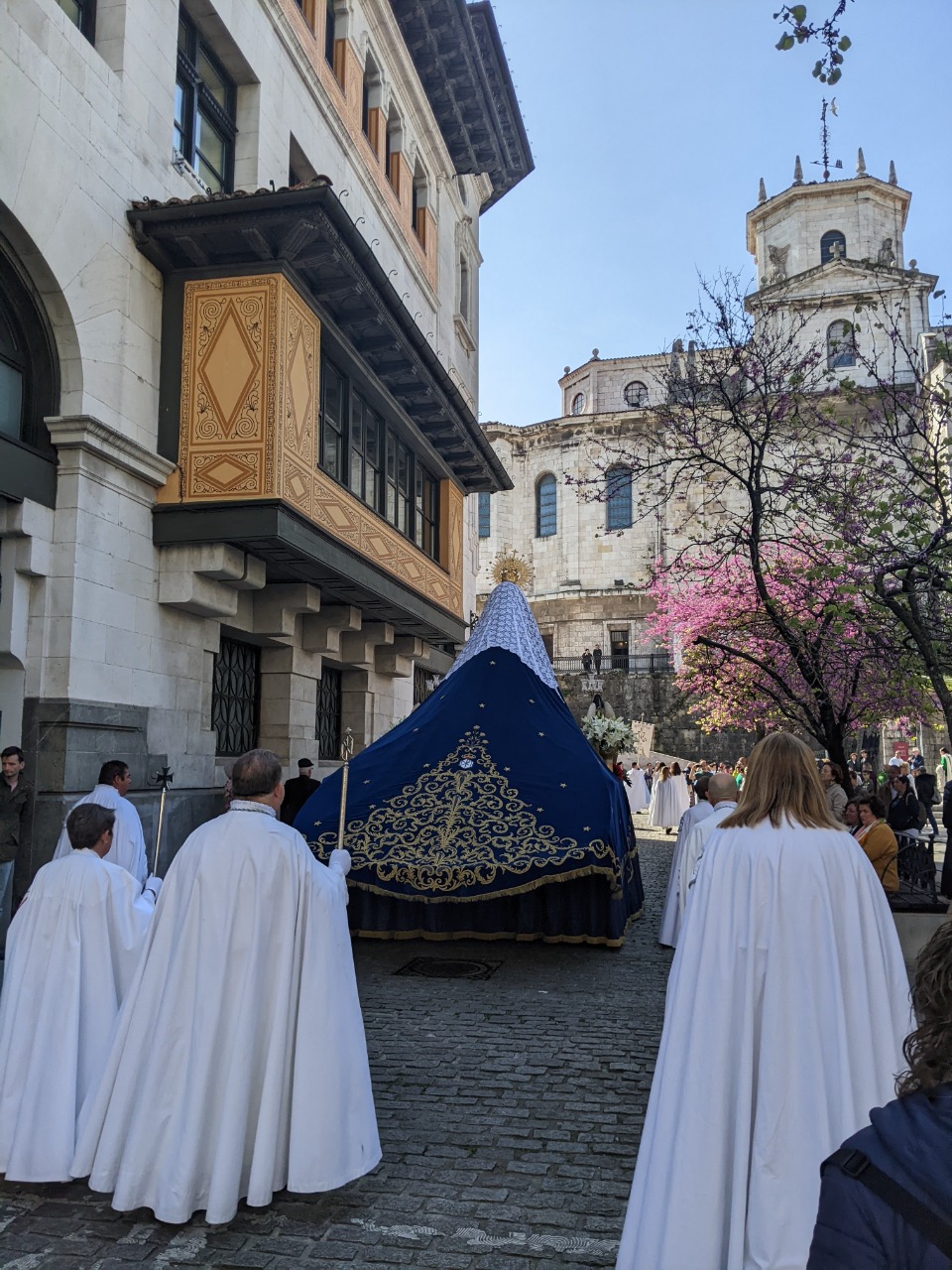
Easter procession.
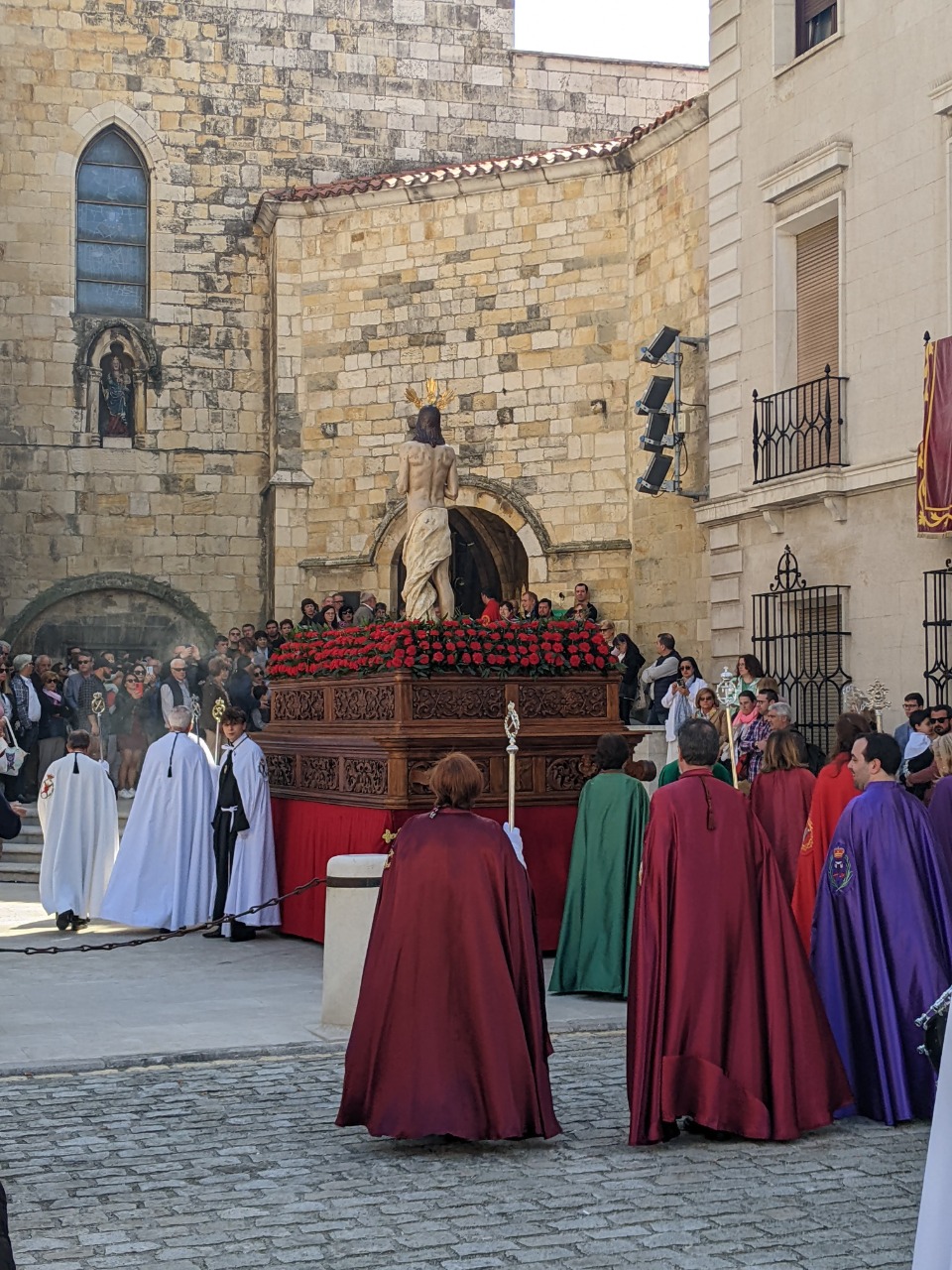
Through gaps in the curtain, you can make out a dozen pairs of legs under this thing.
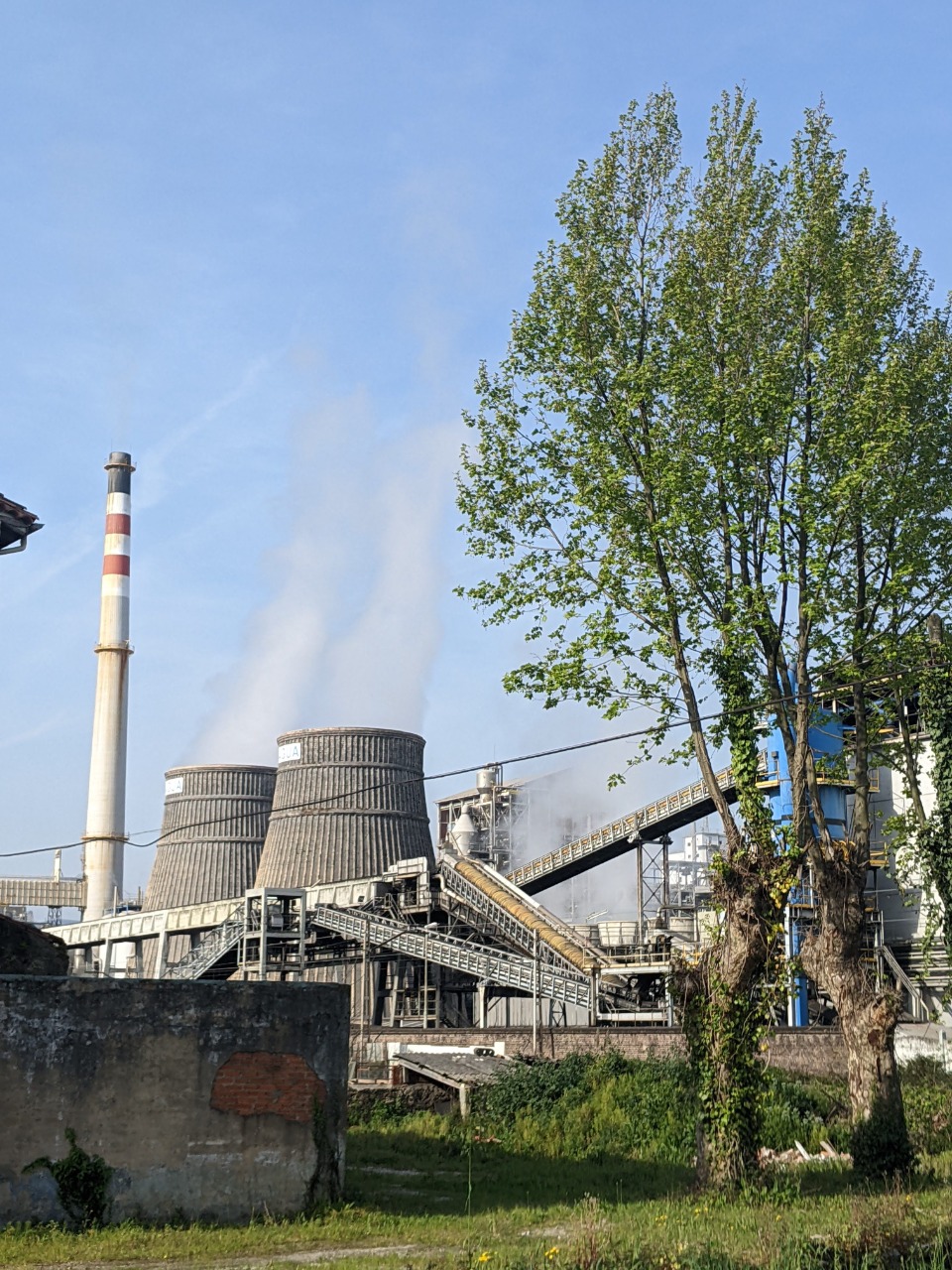
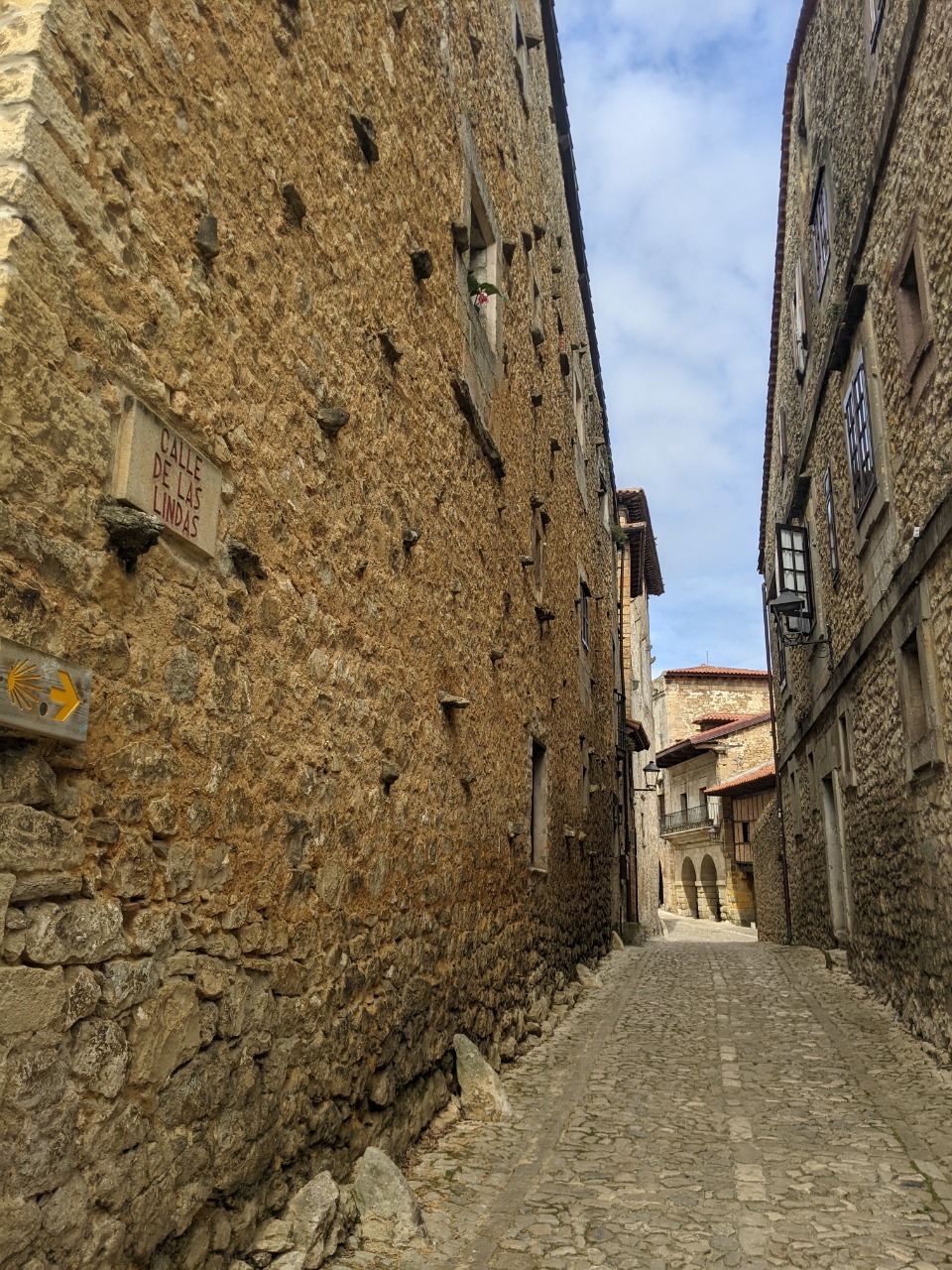
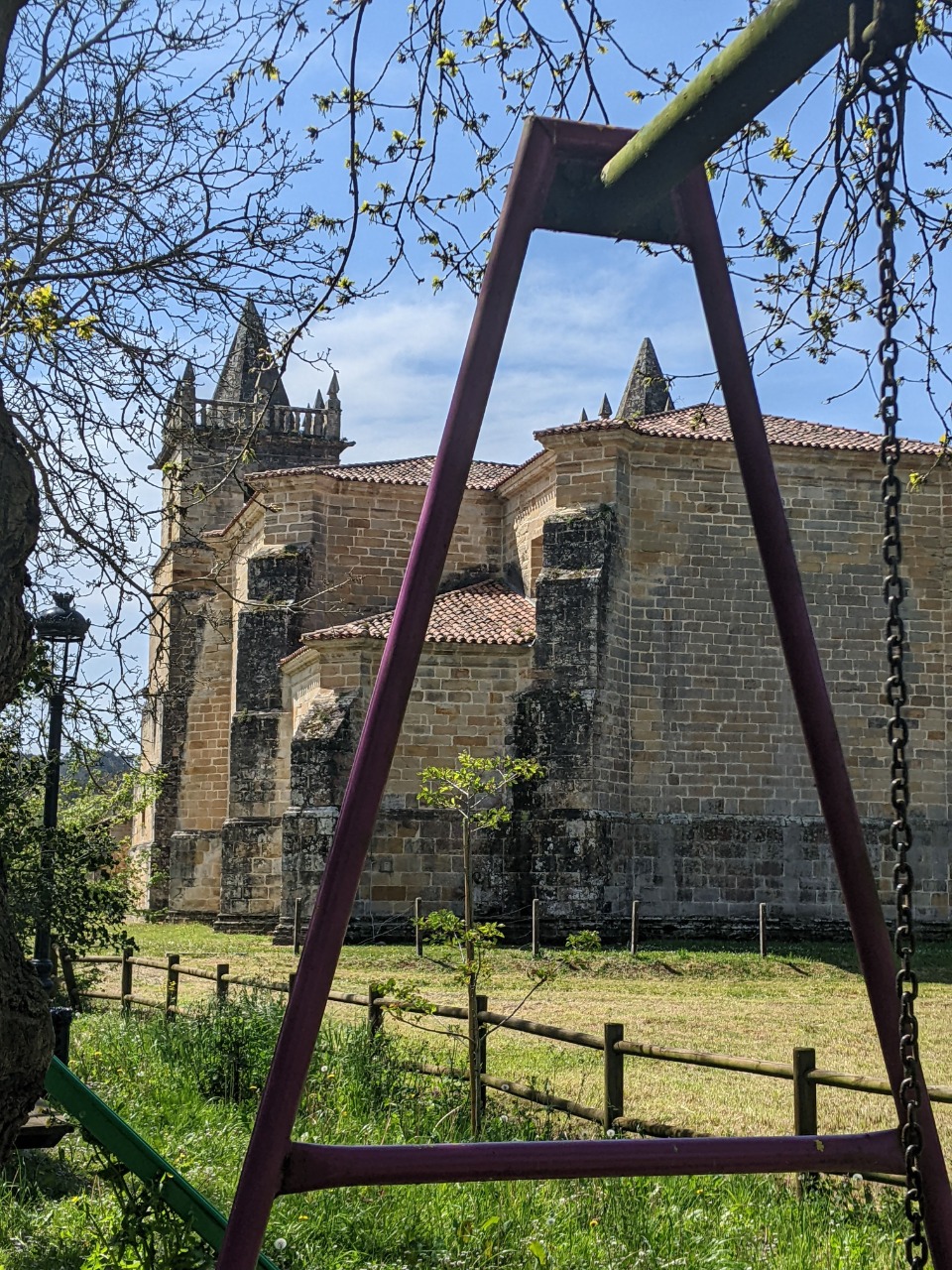
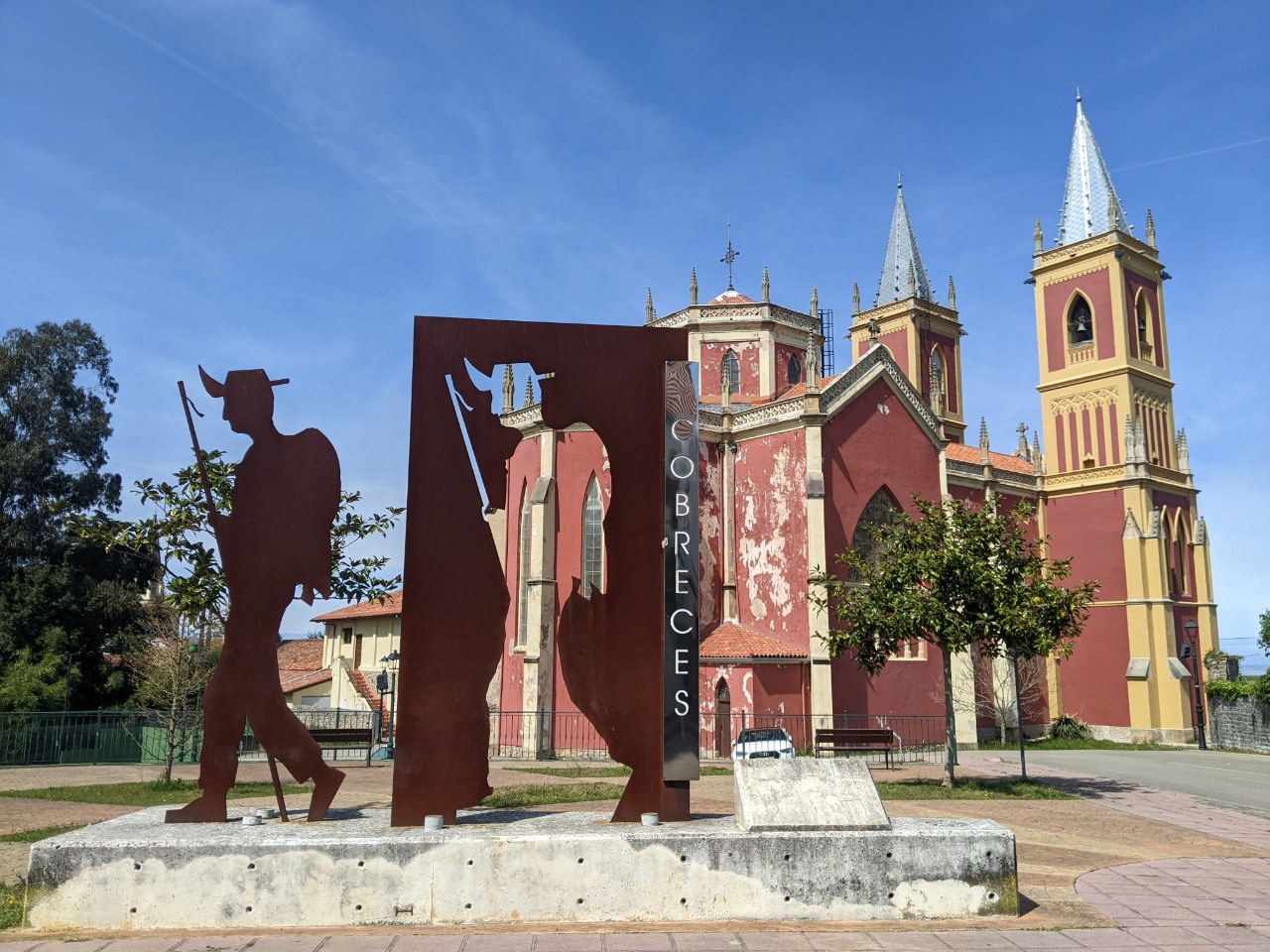
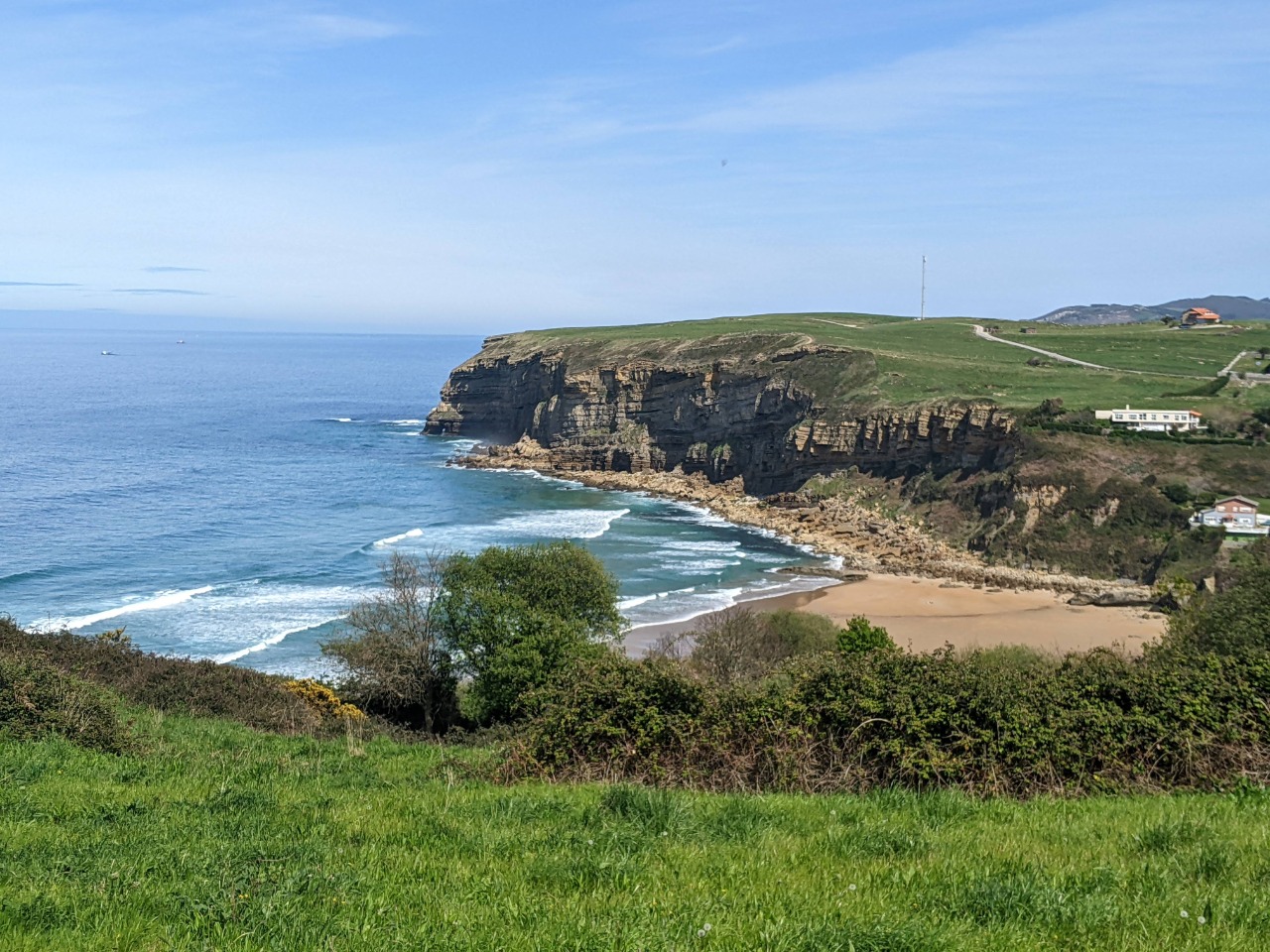
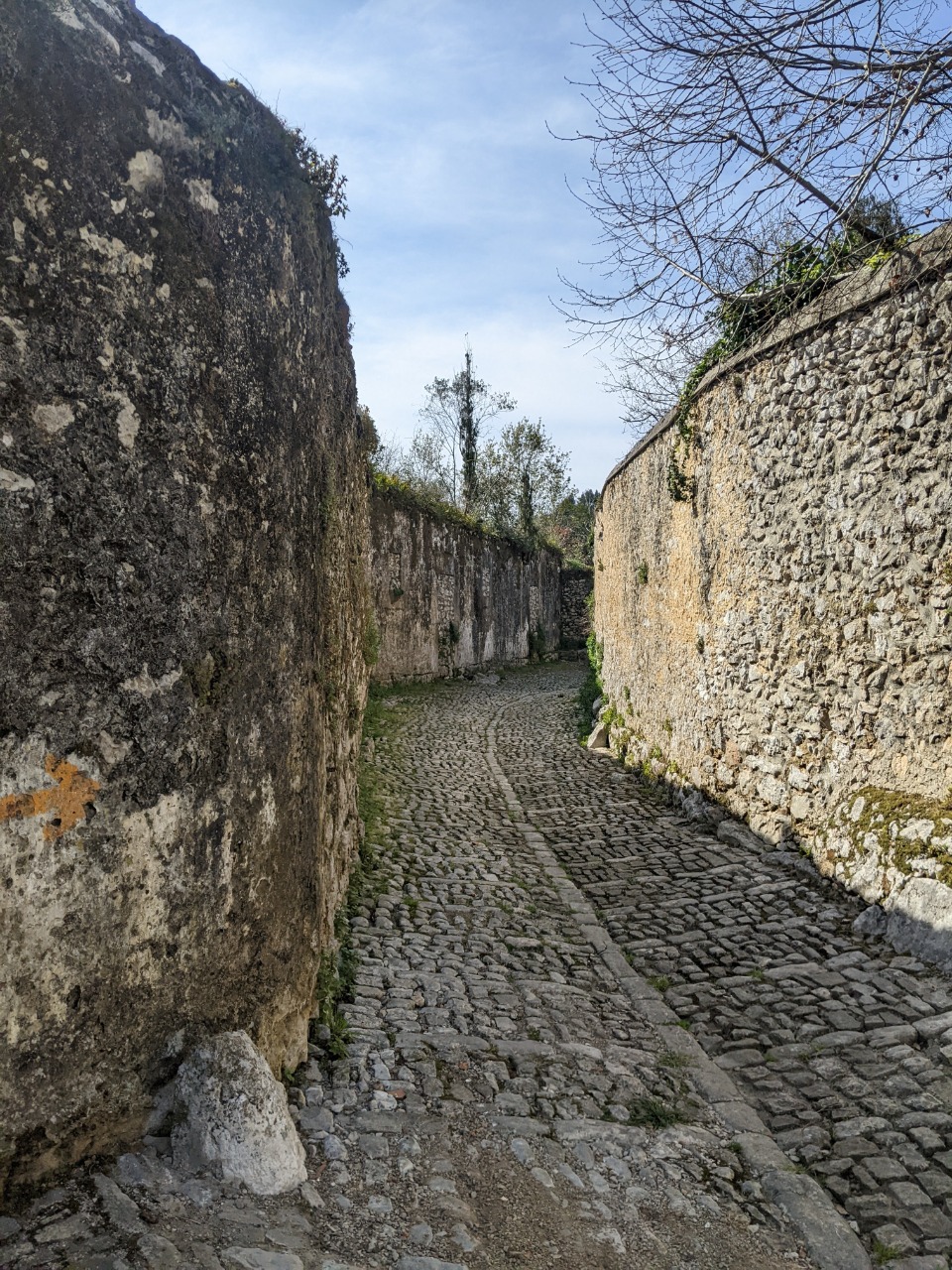
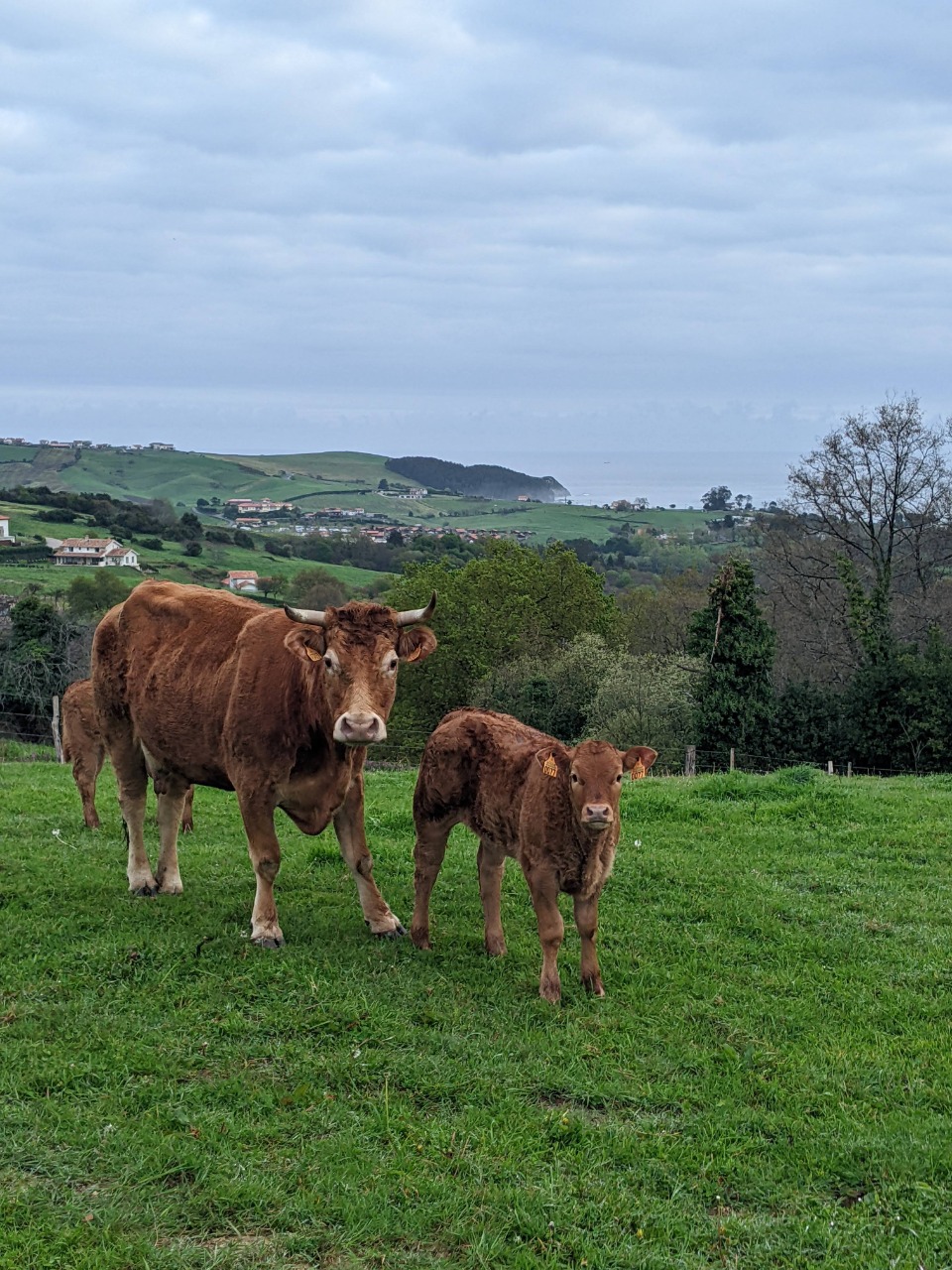
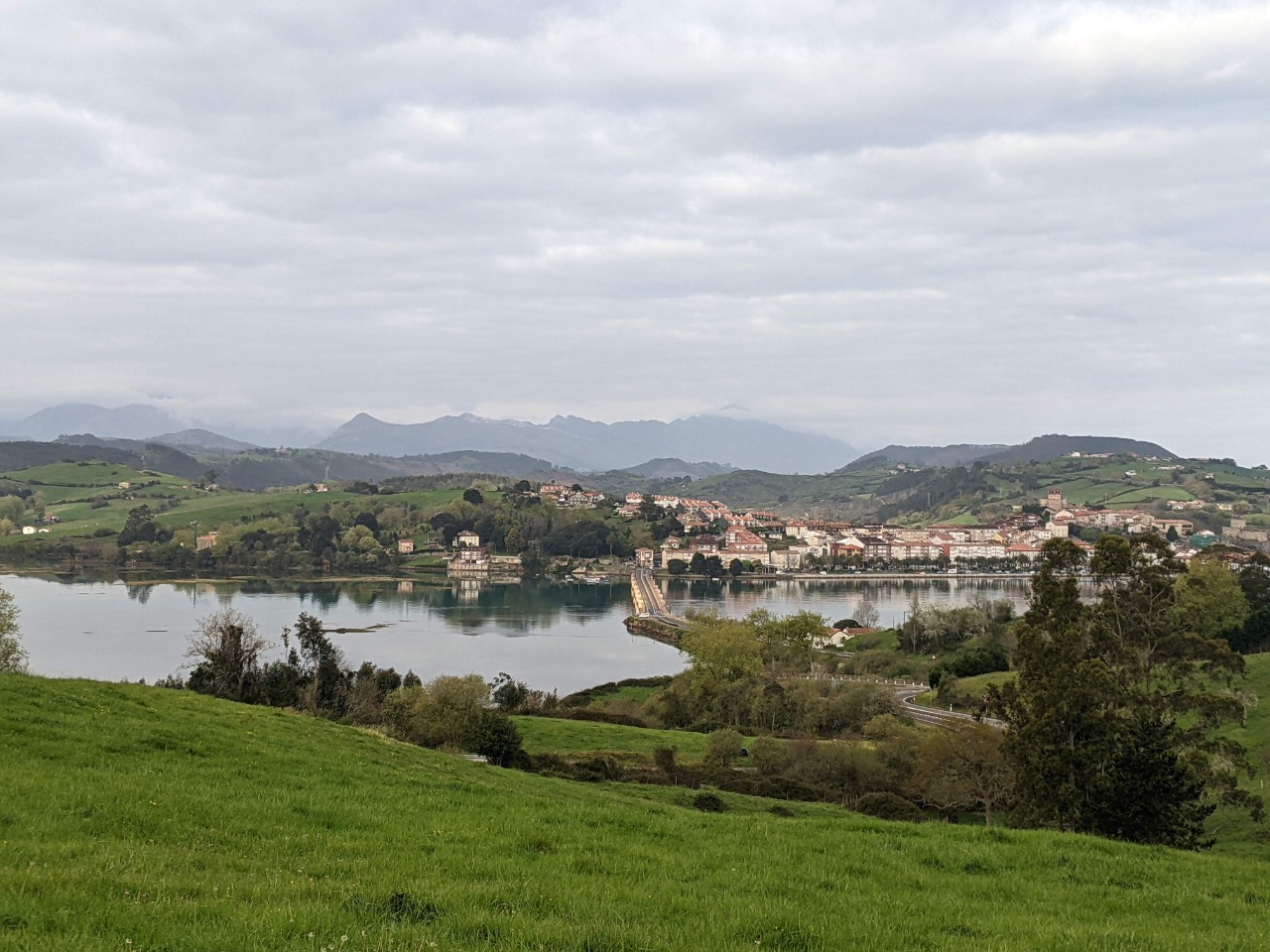
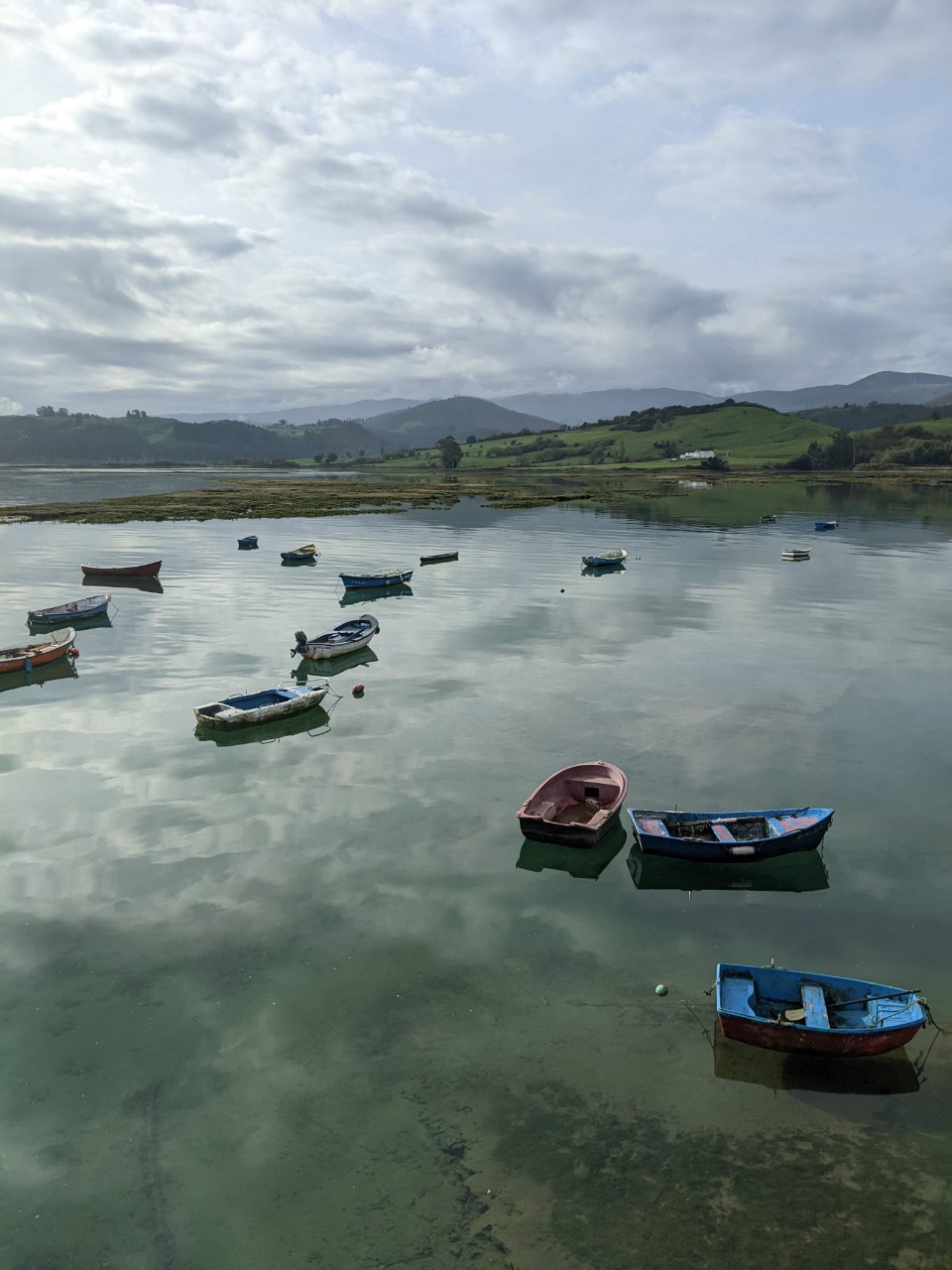
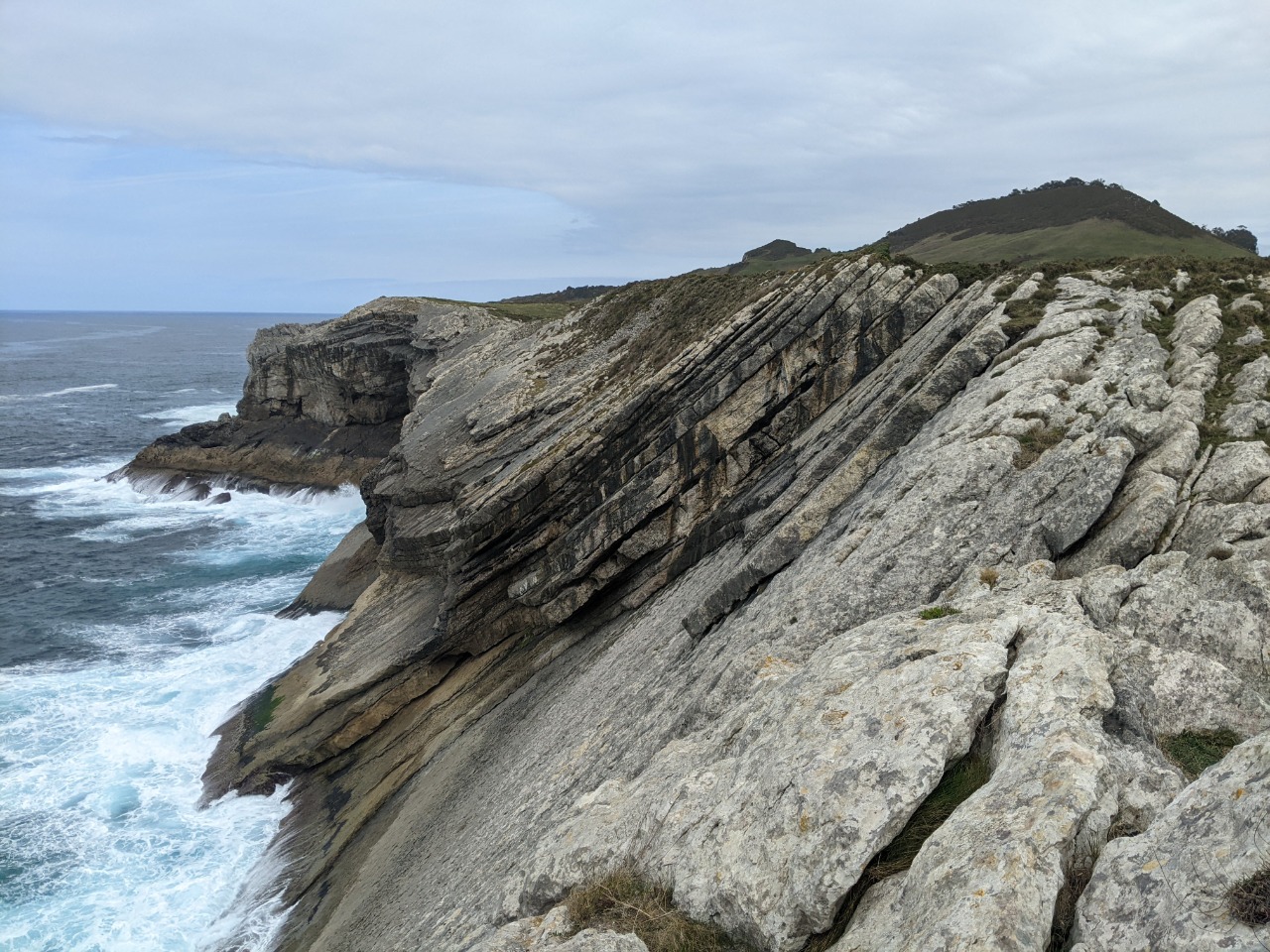
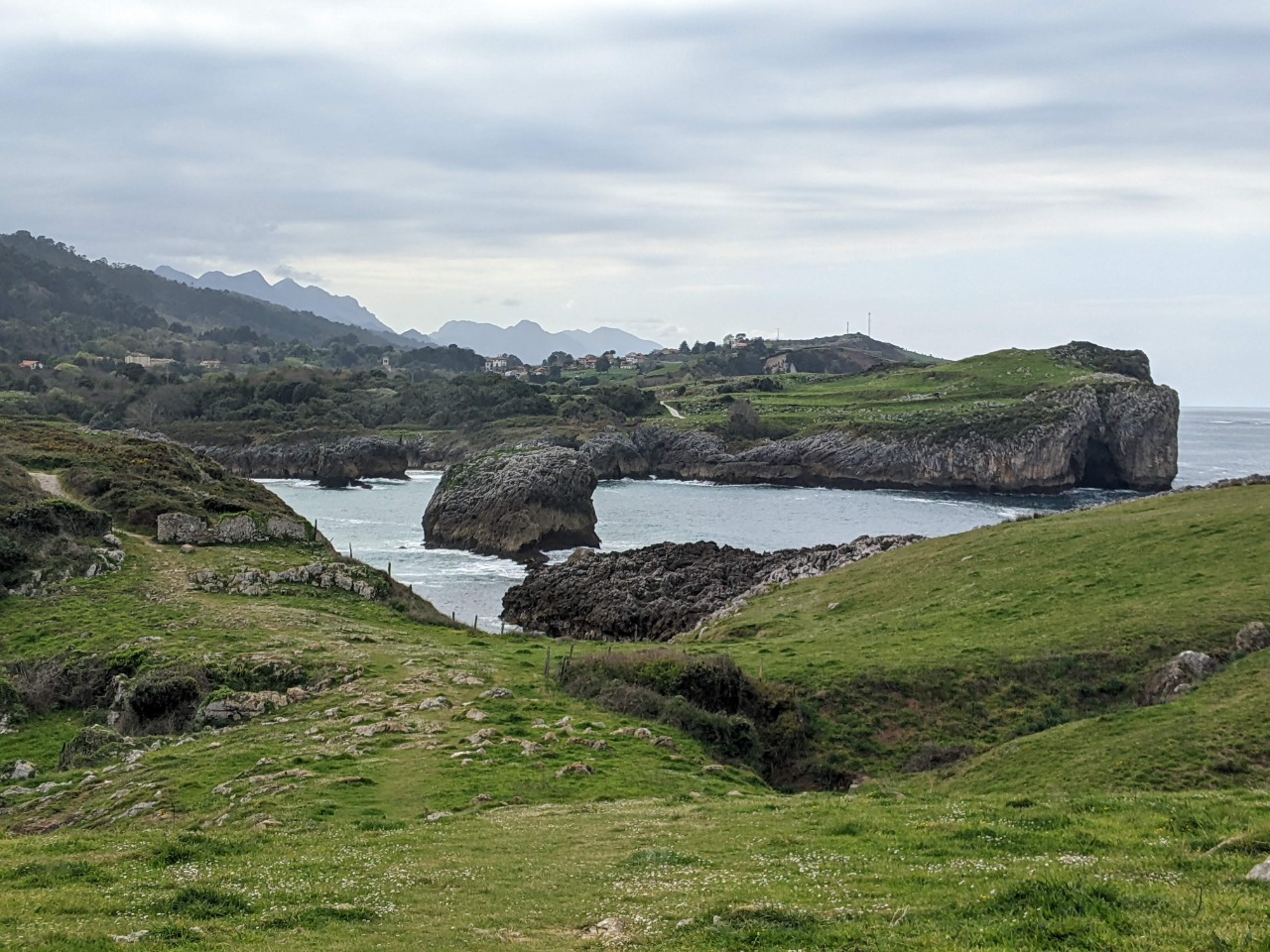
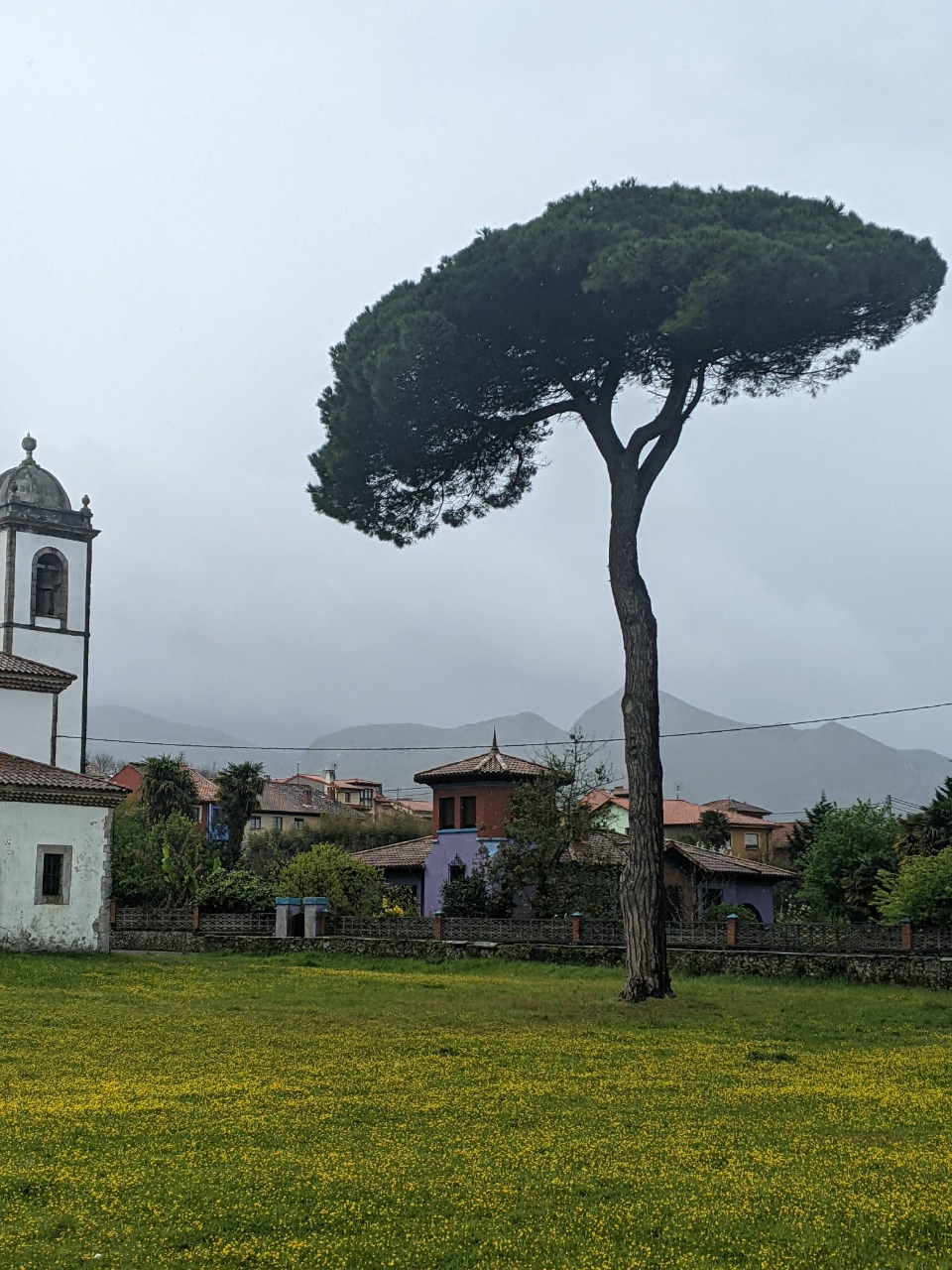
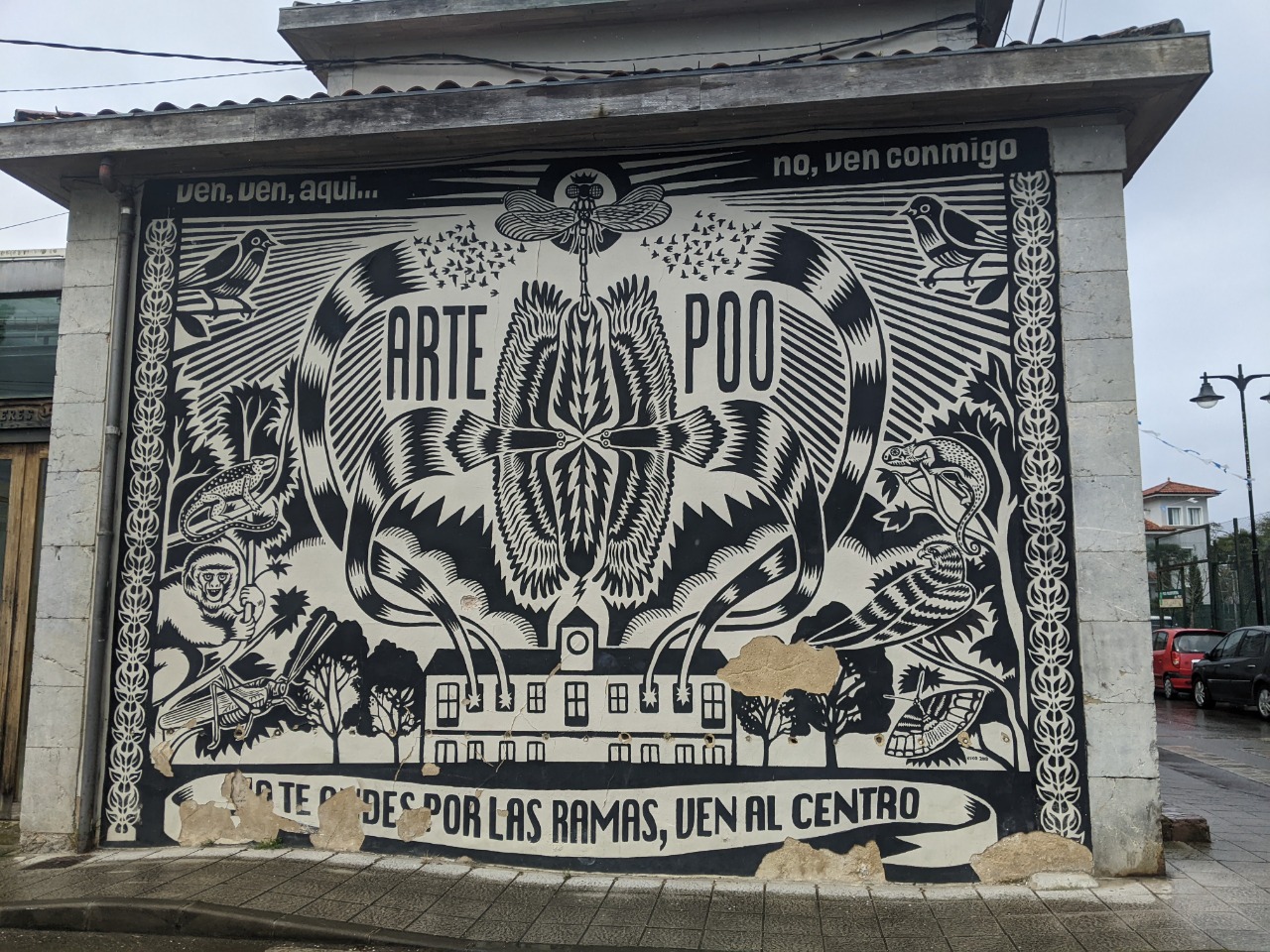
This town is actually named Poo.

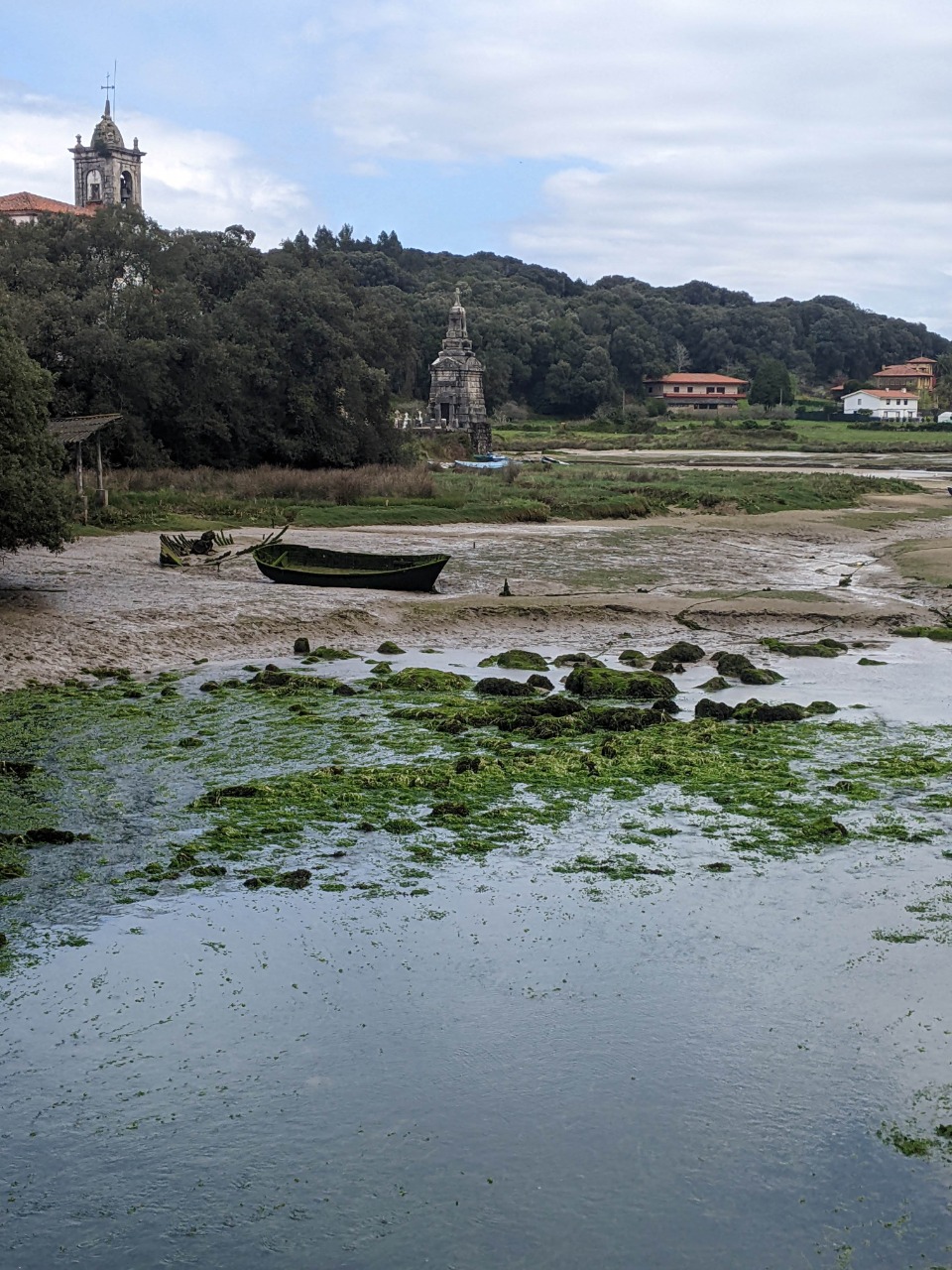
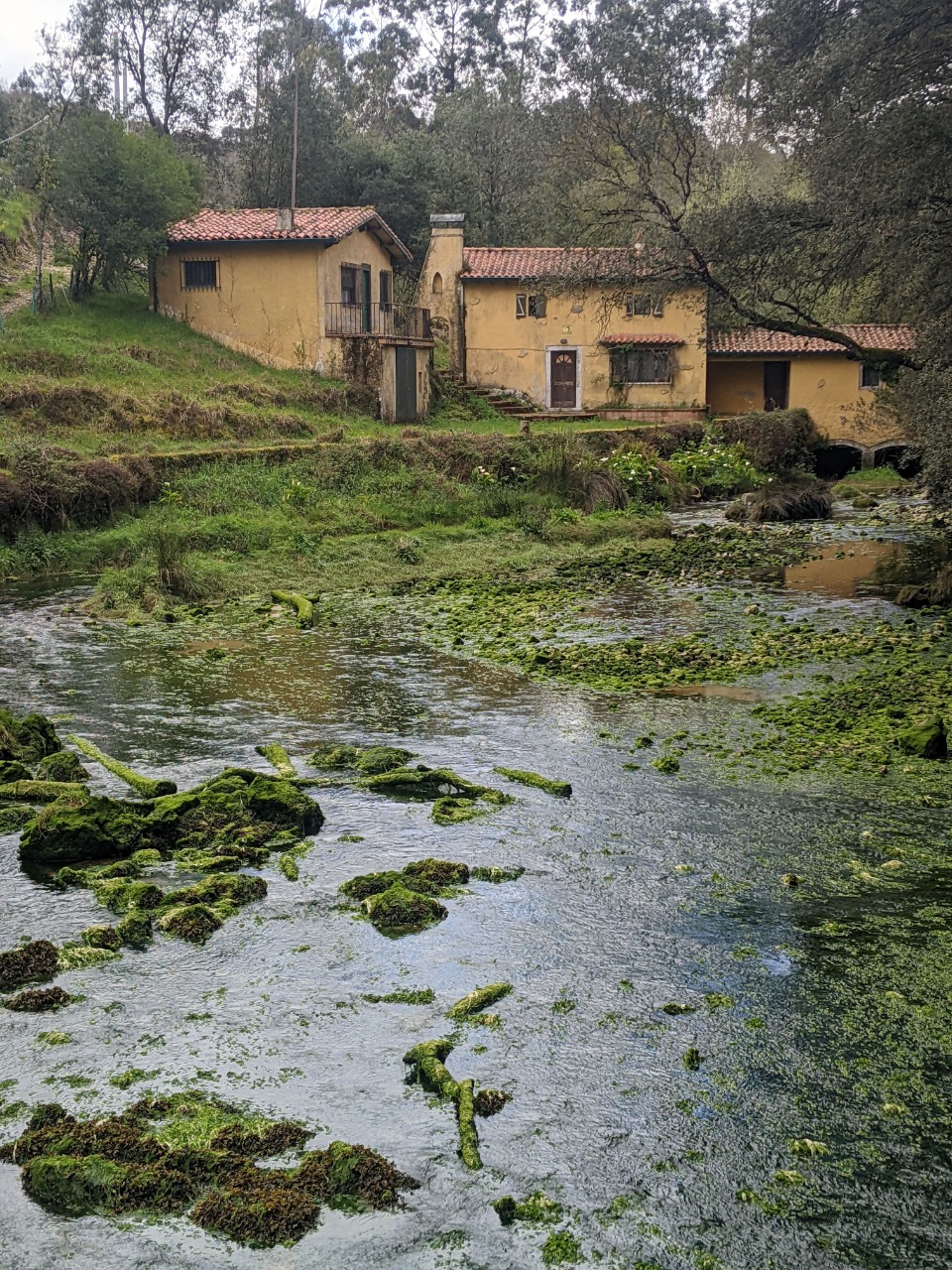
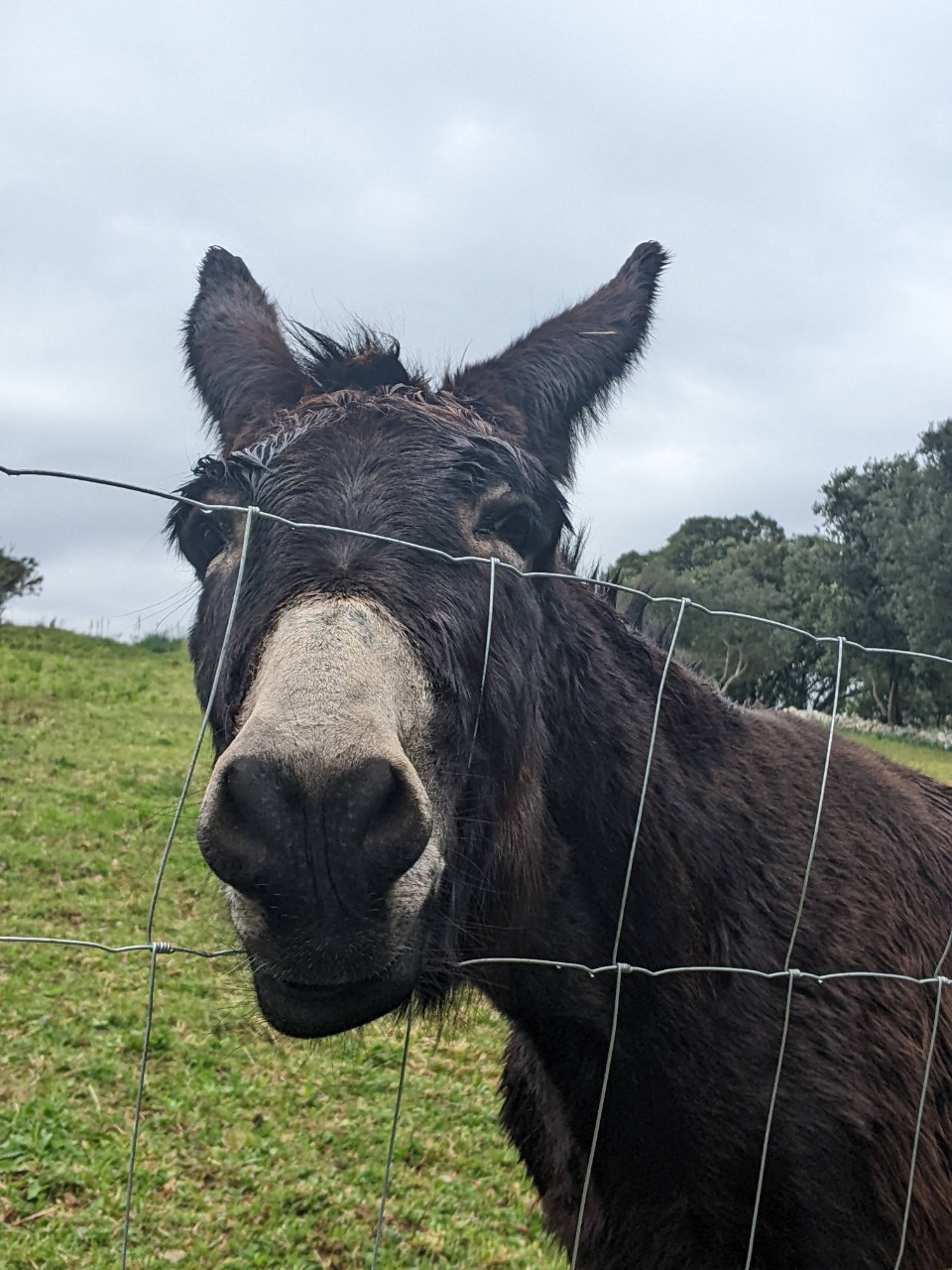
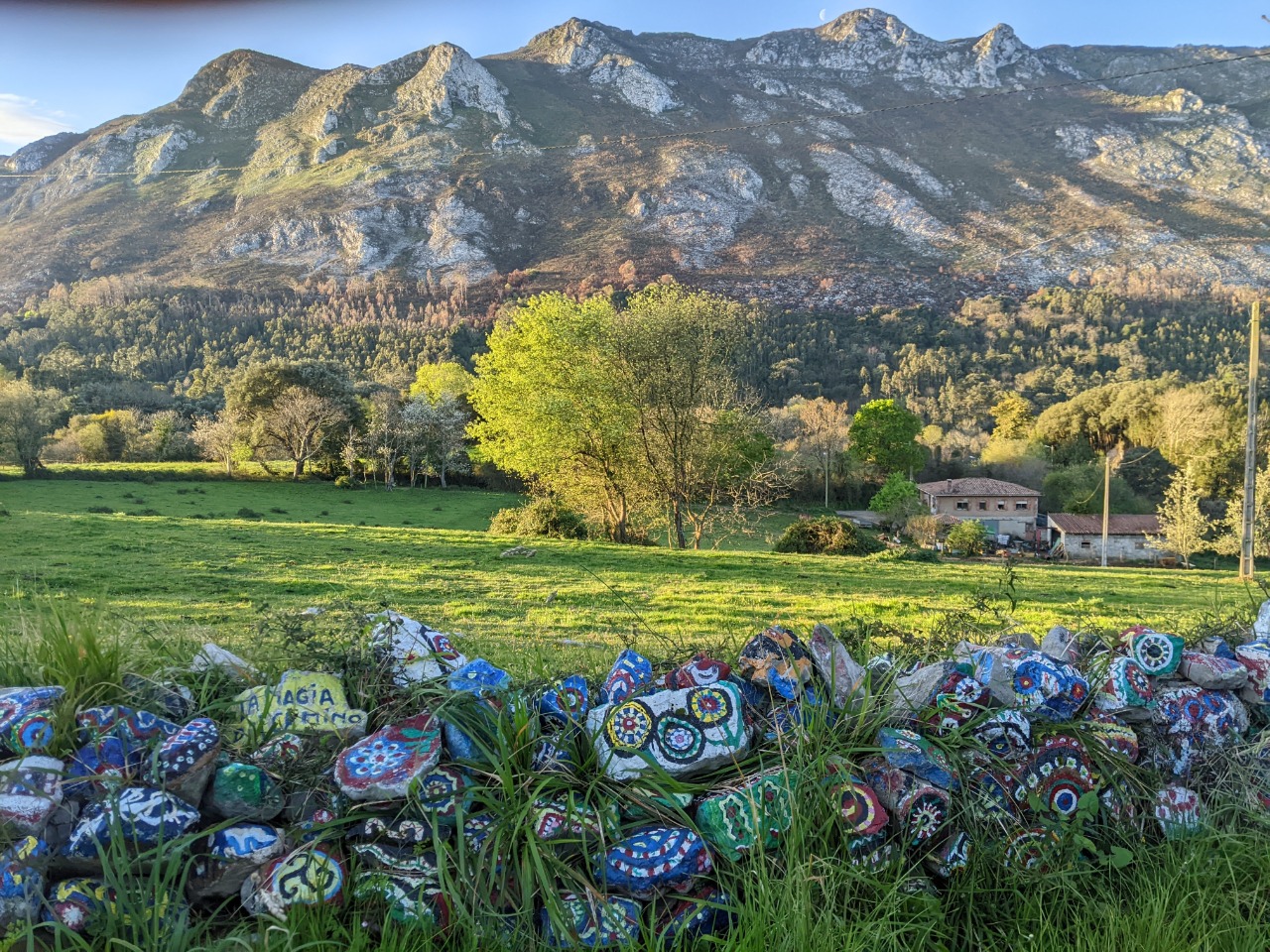
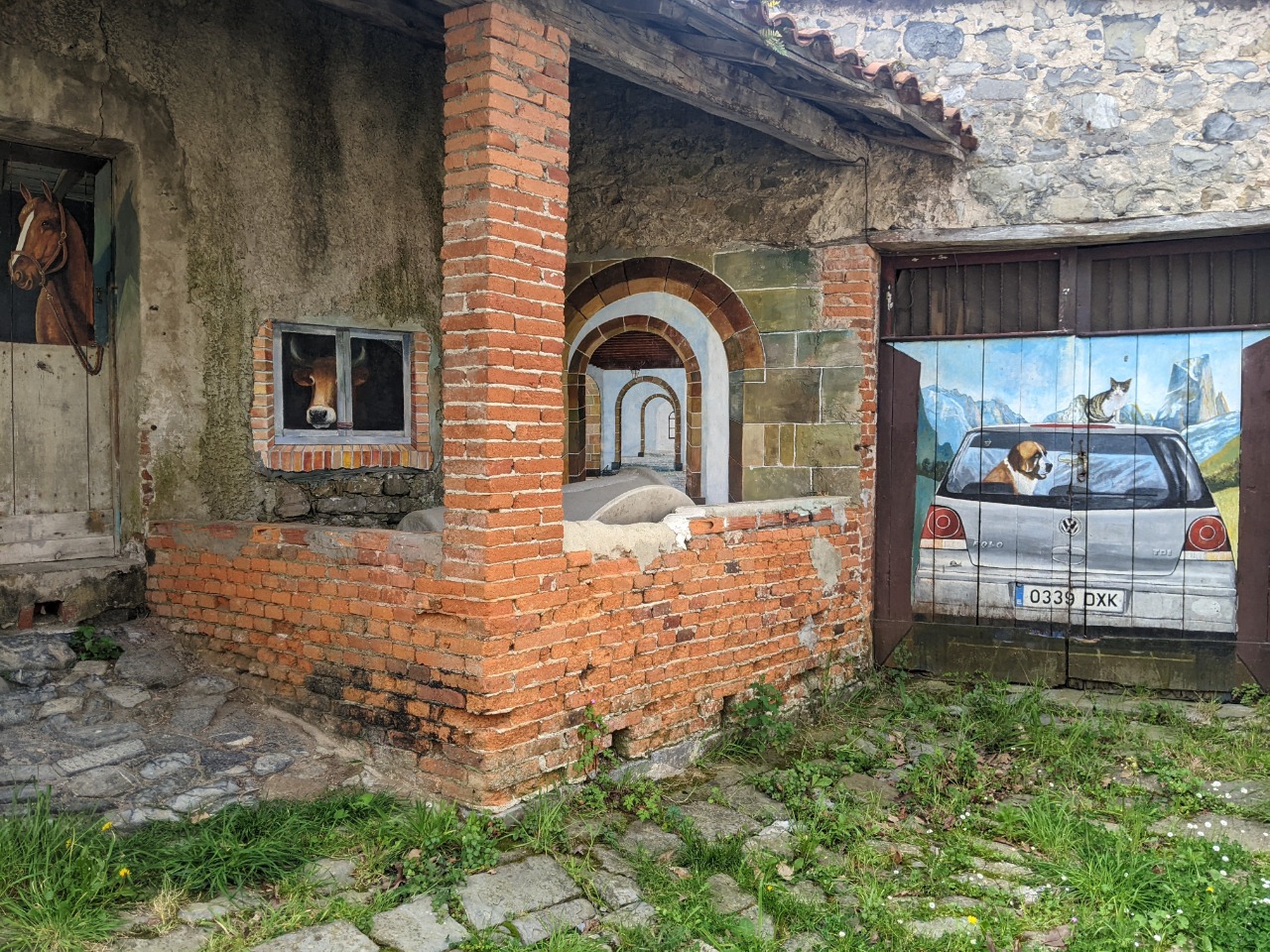
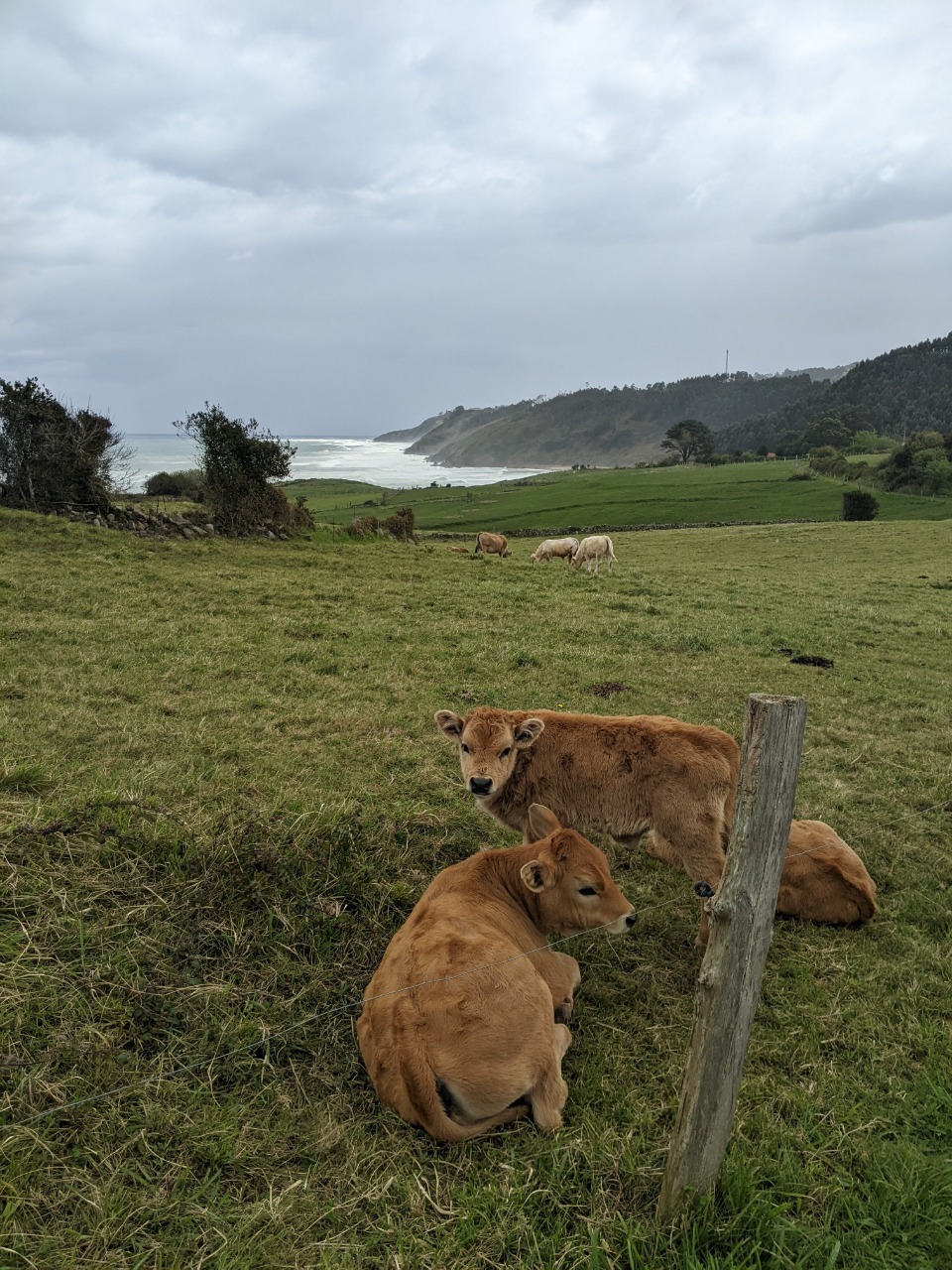
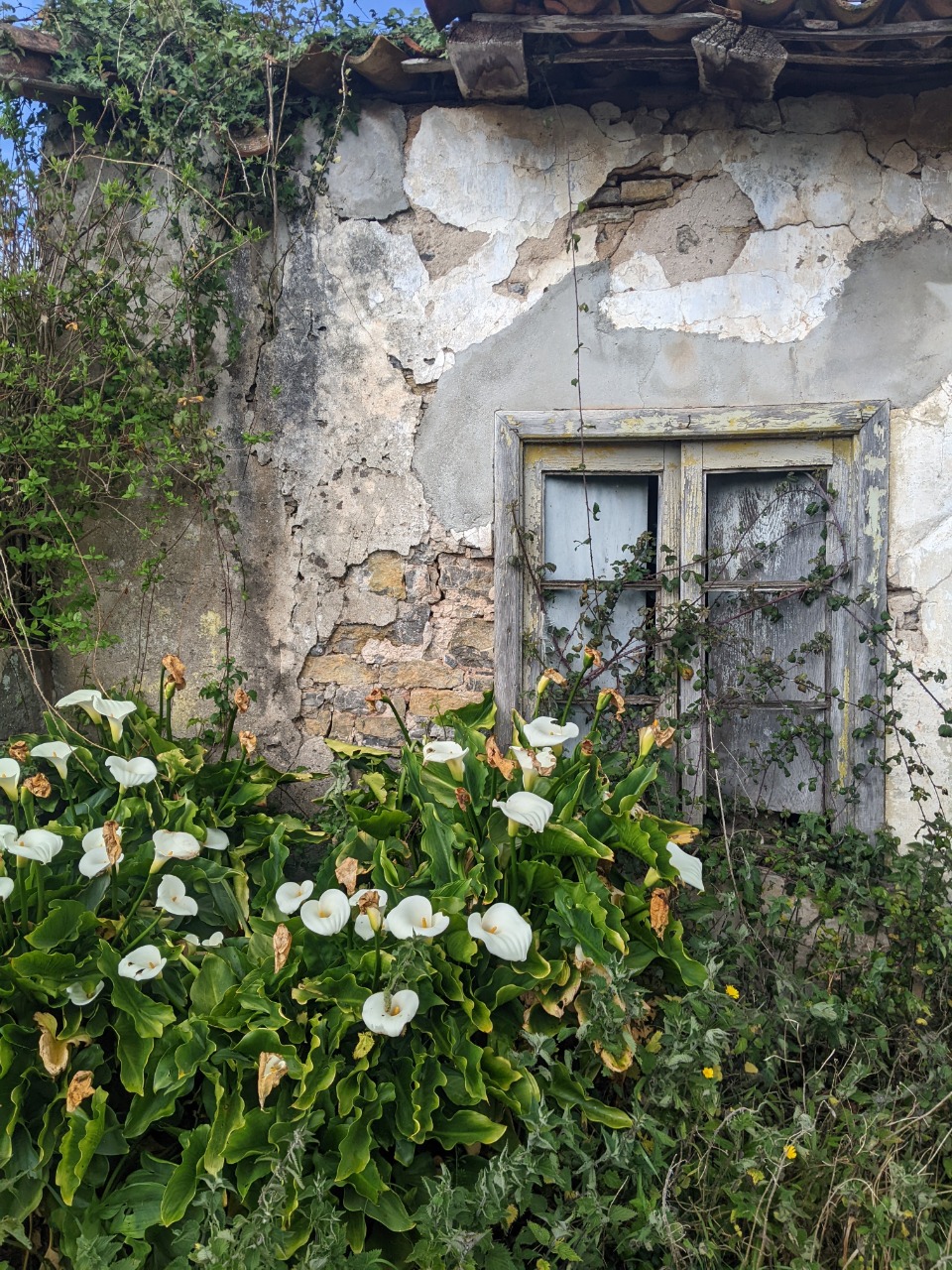
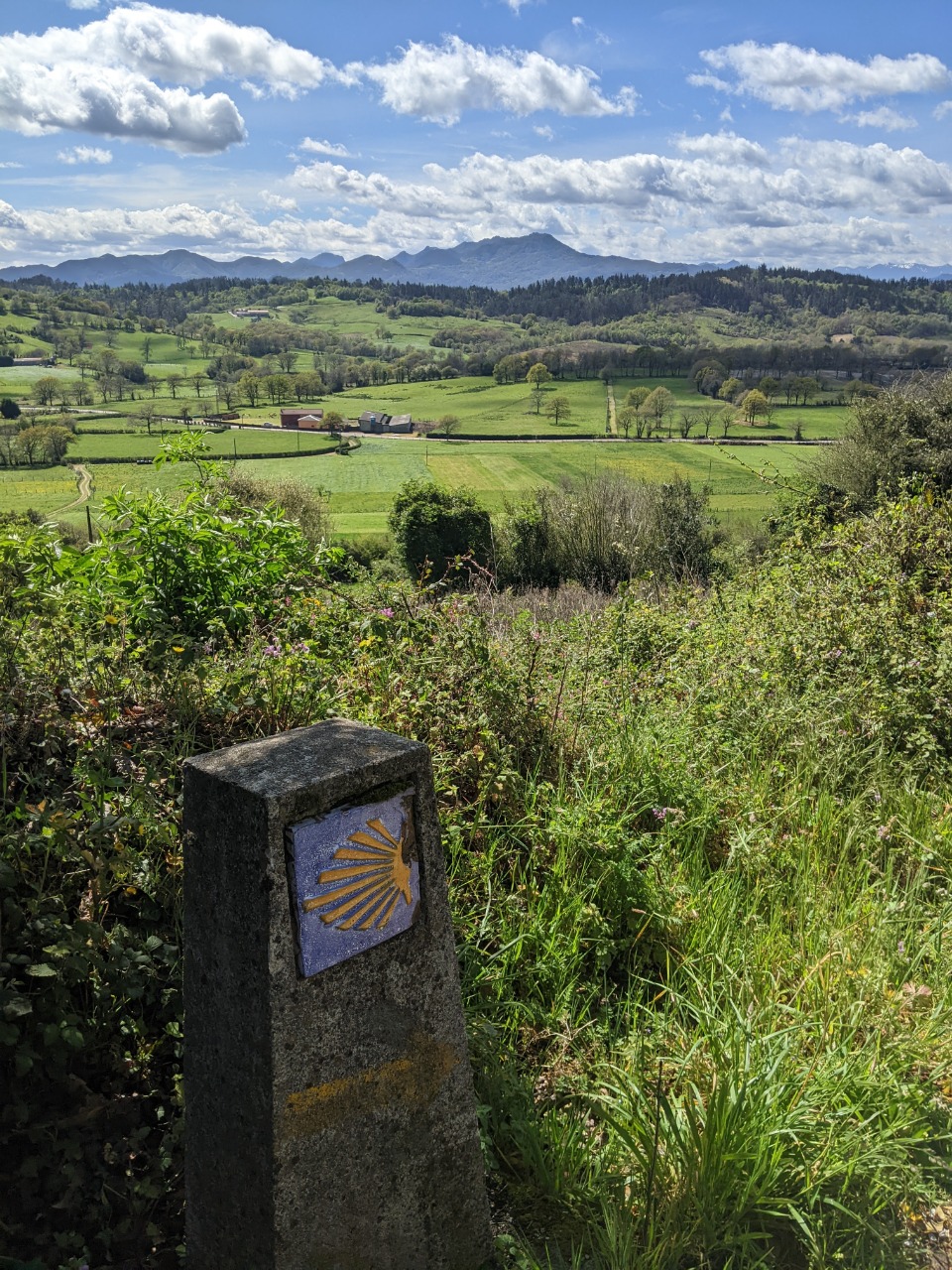
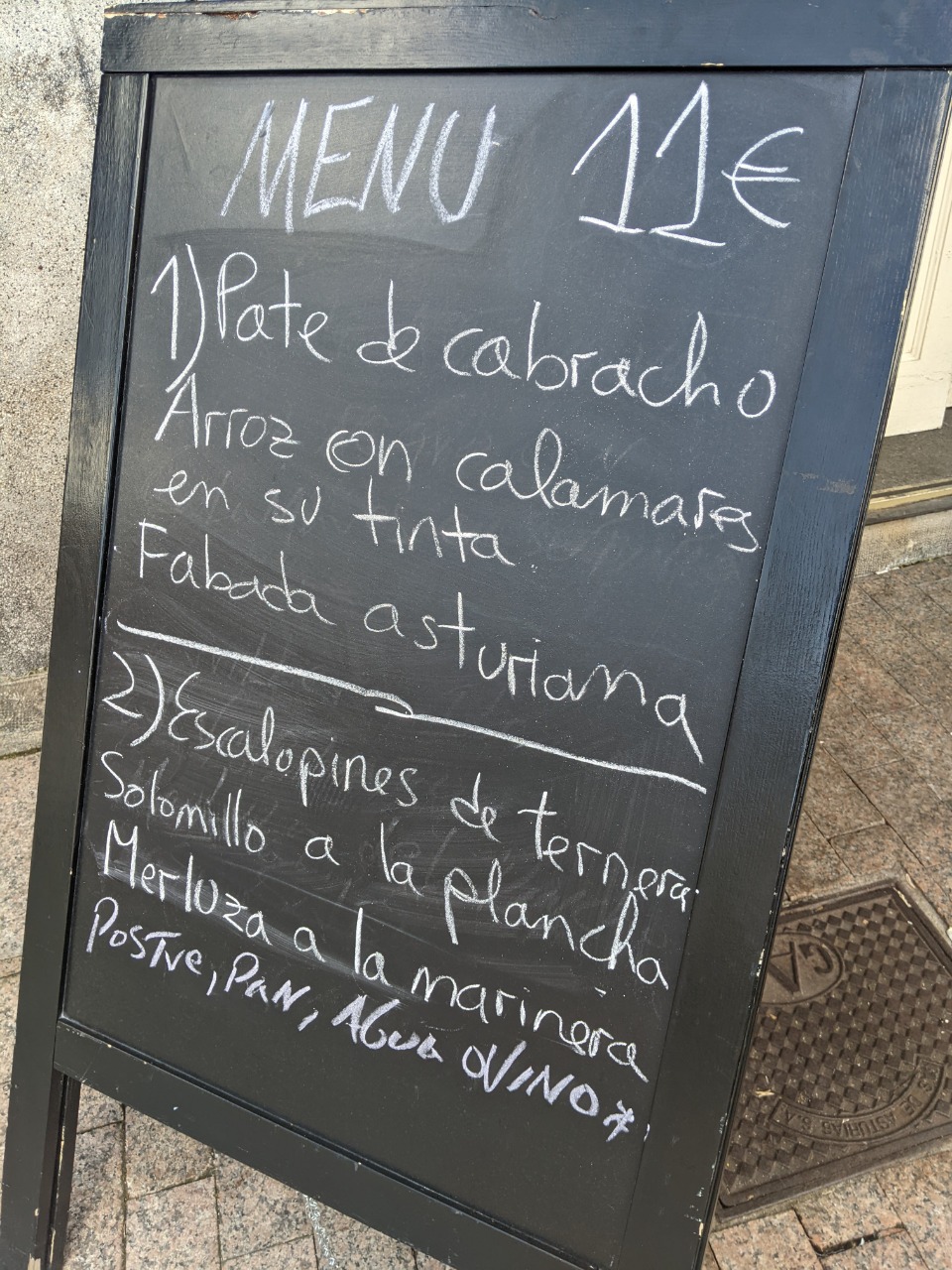
How to decide between squid in its ink and scorpionfish pâté??
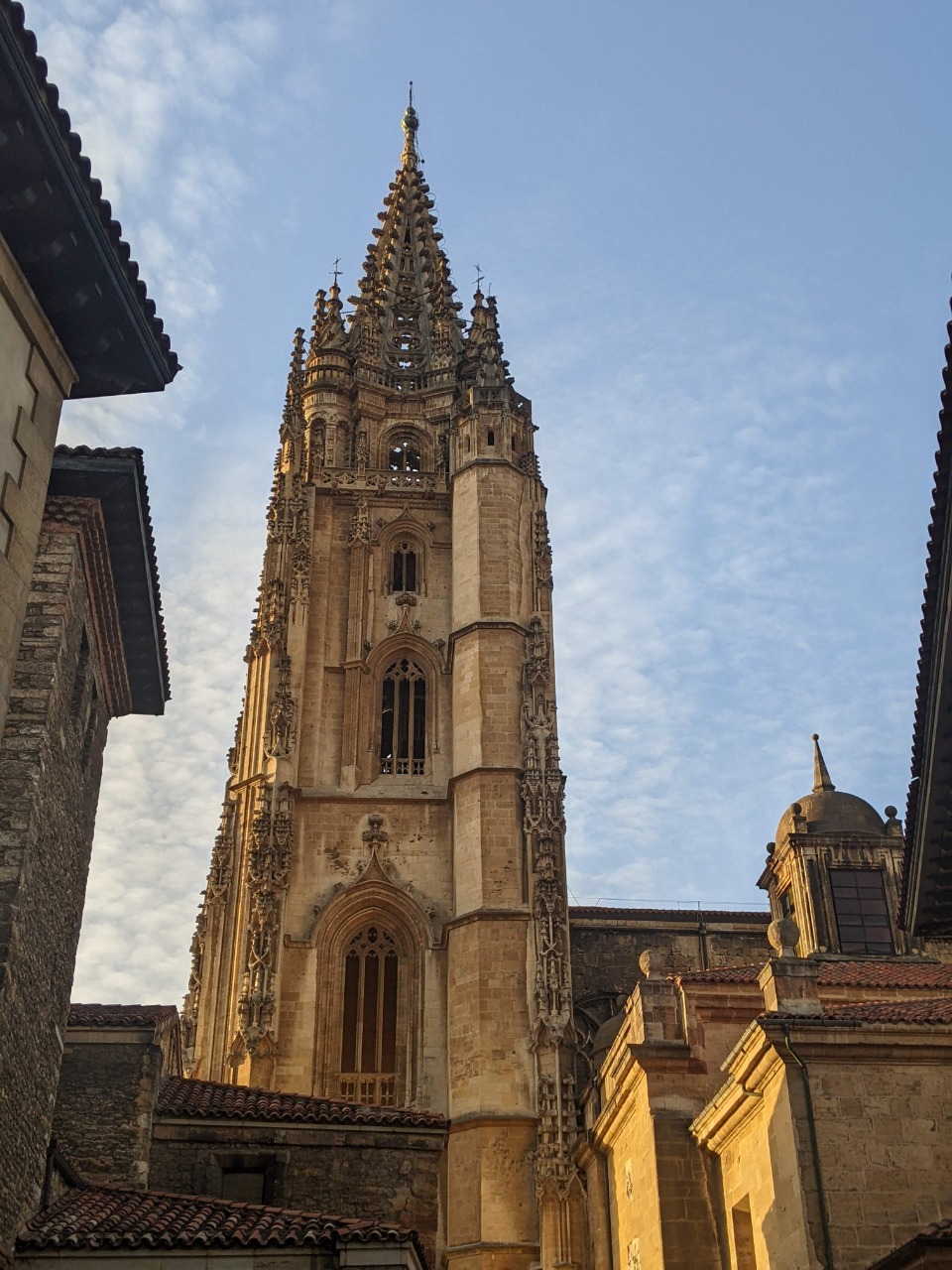
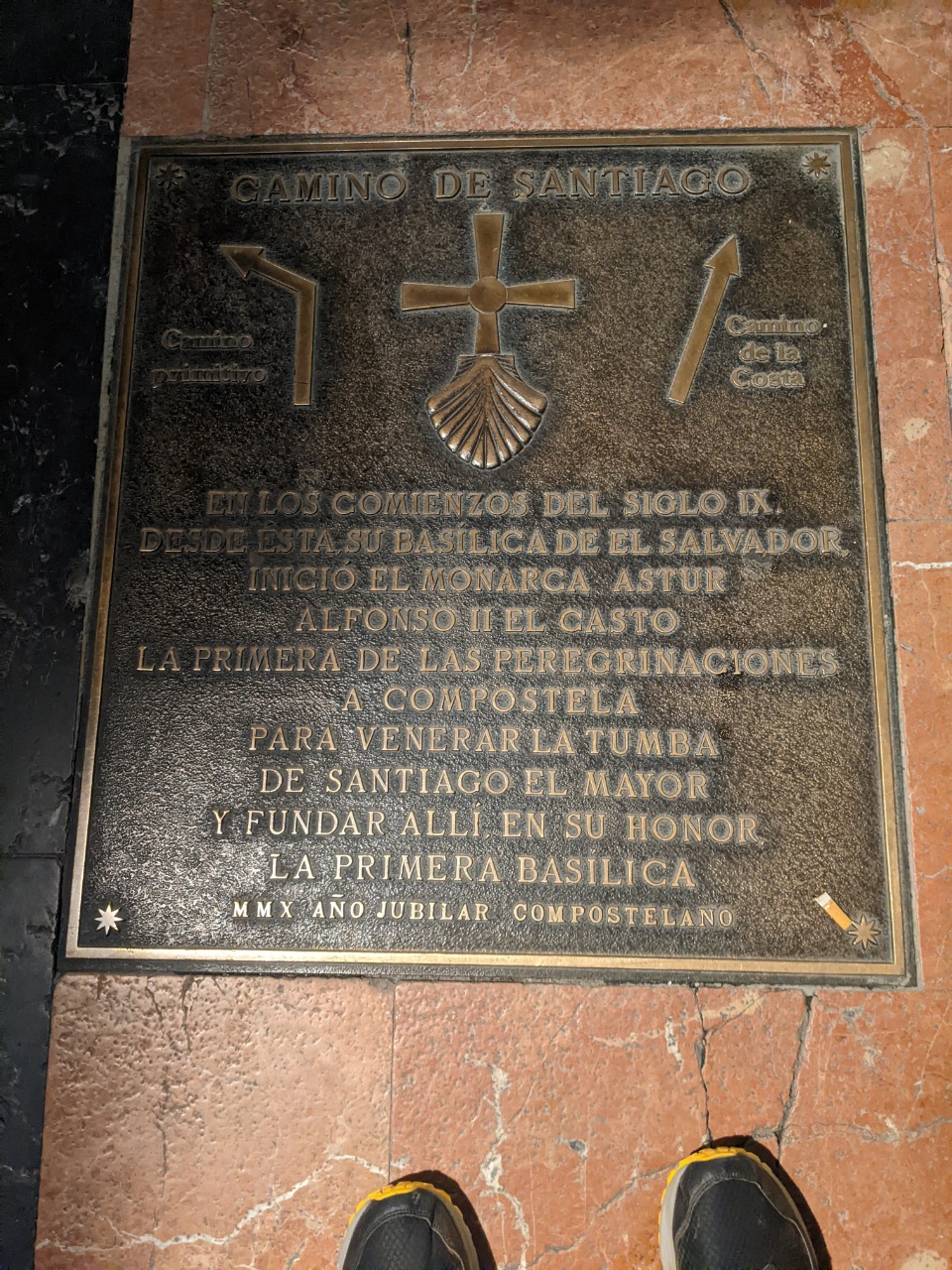
The long-awaited Norte/Primitivo split
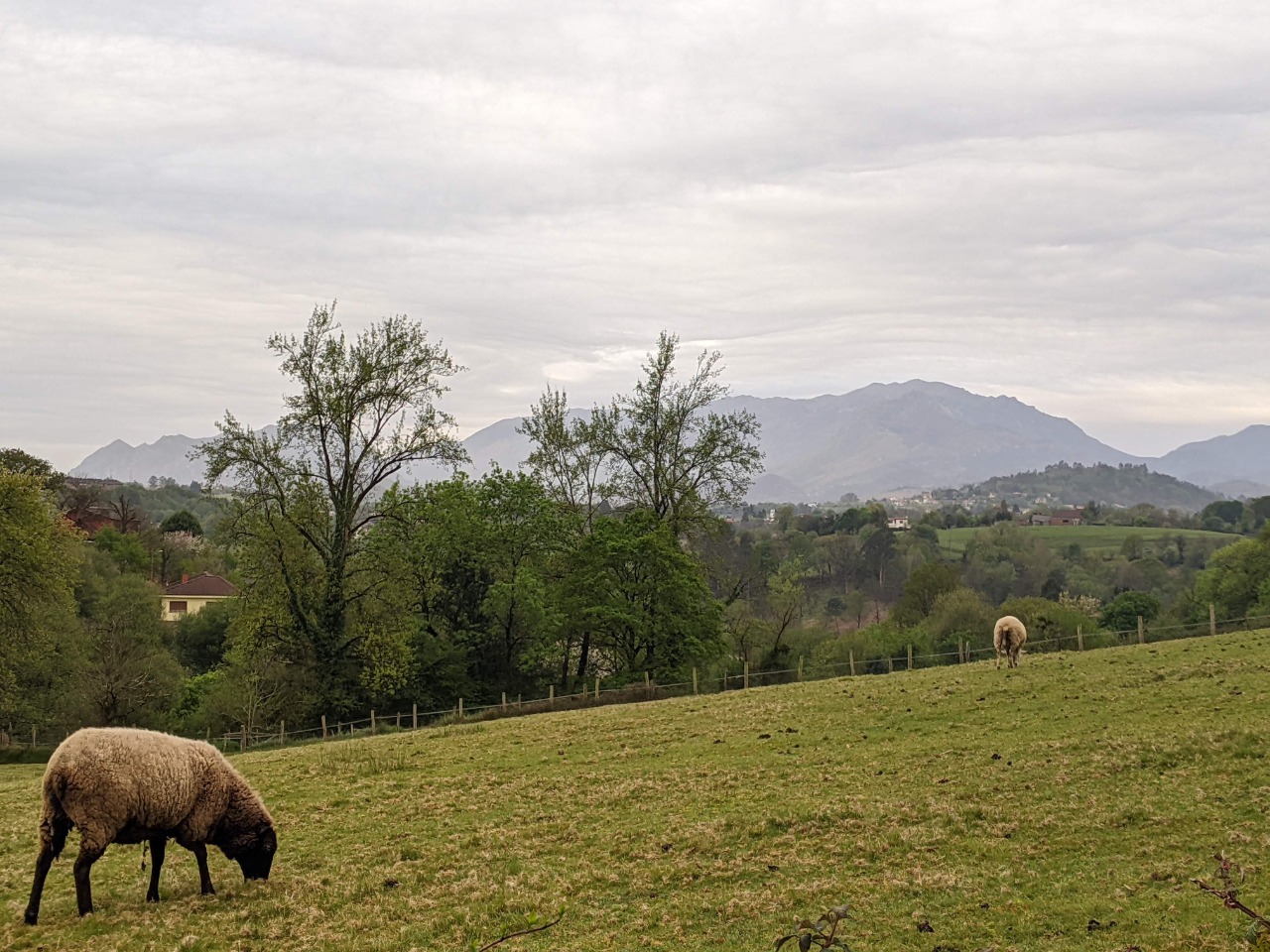
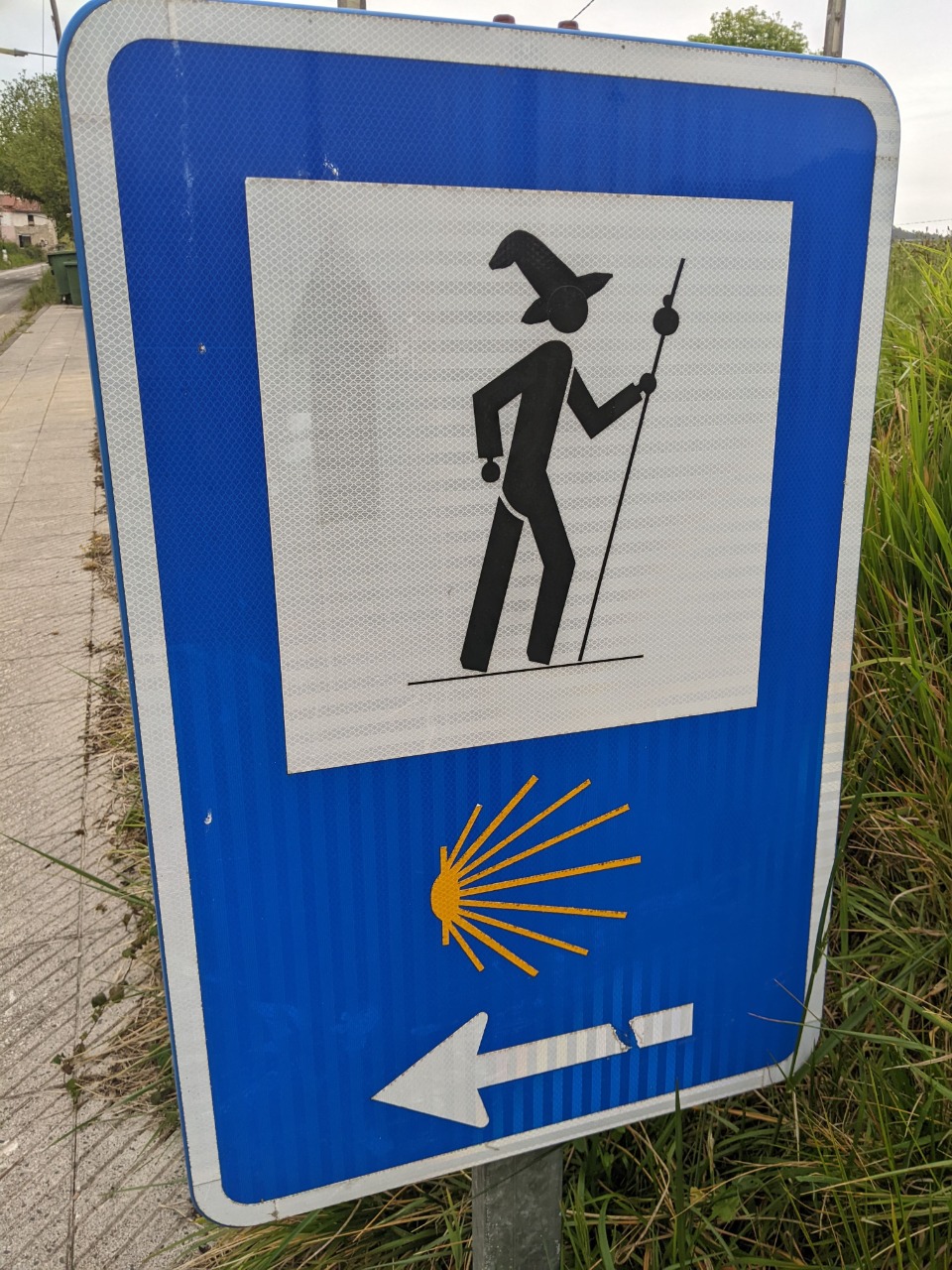
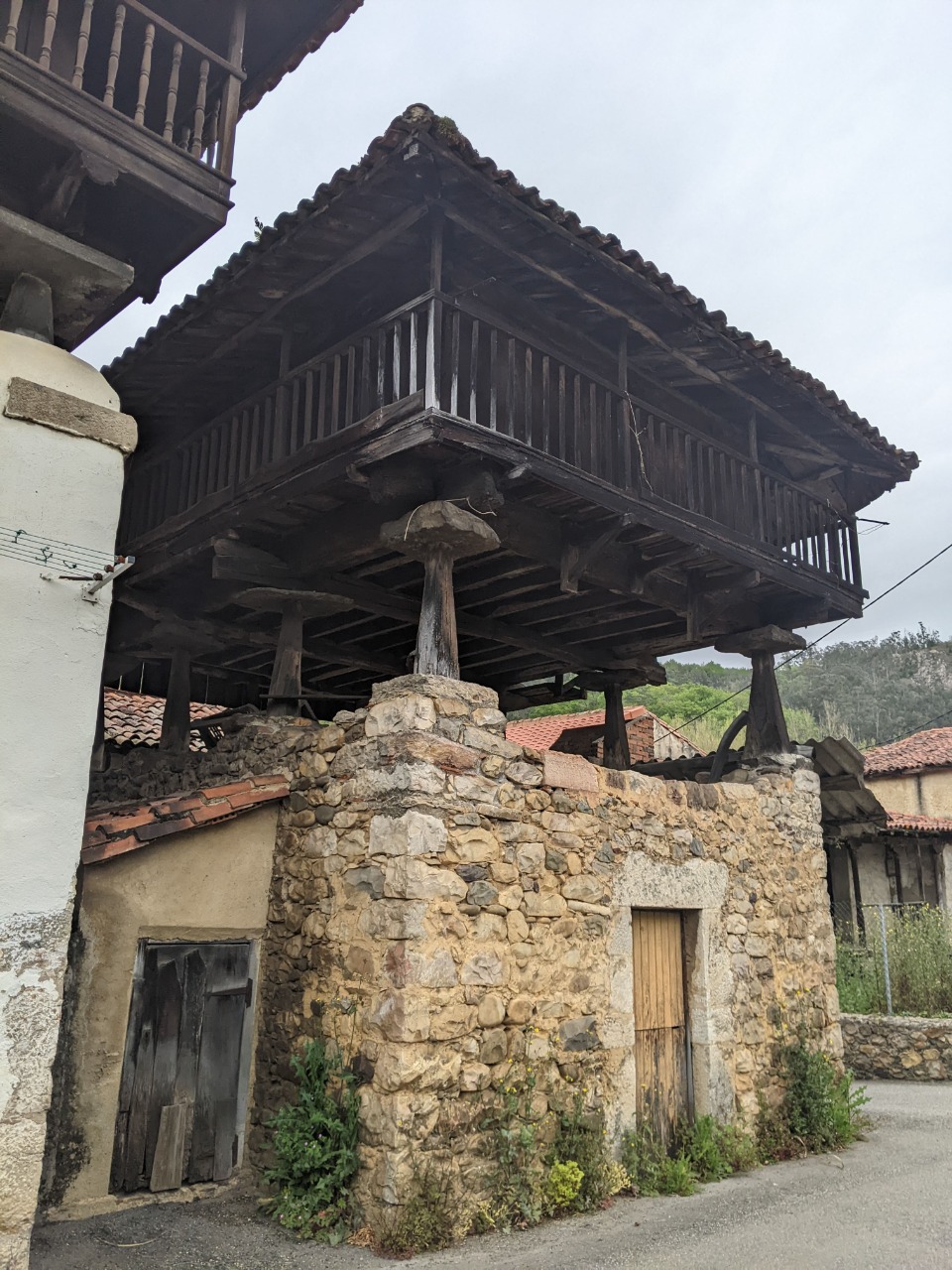
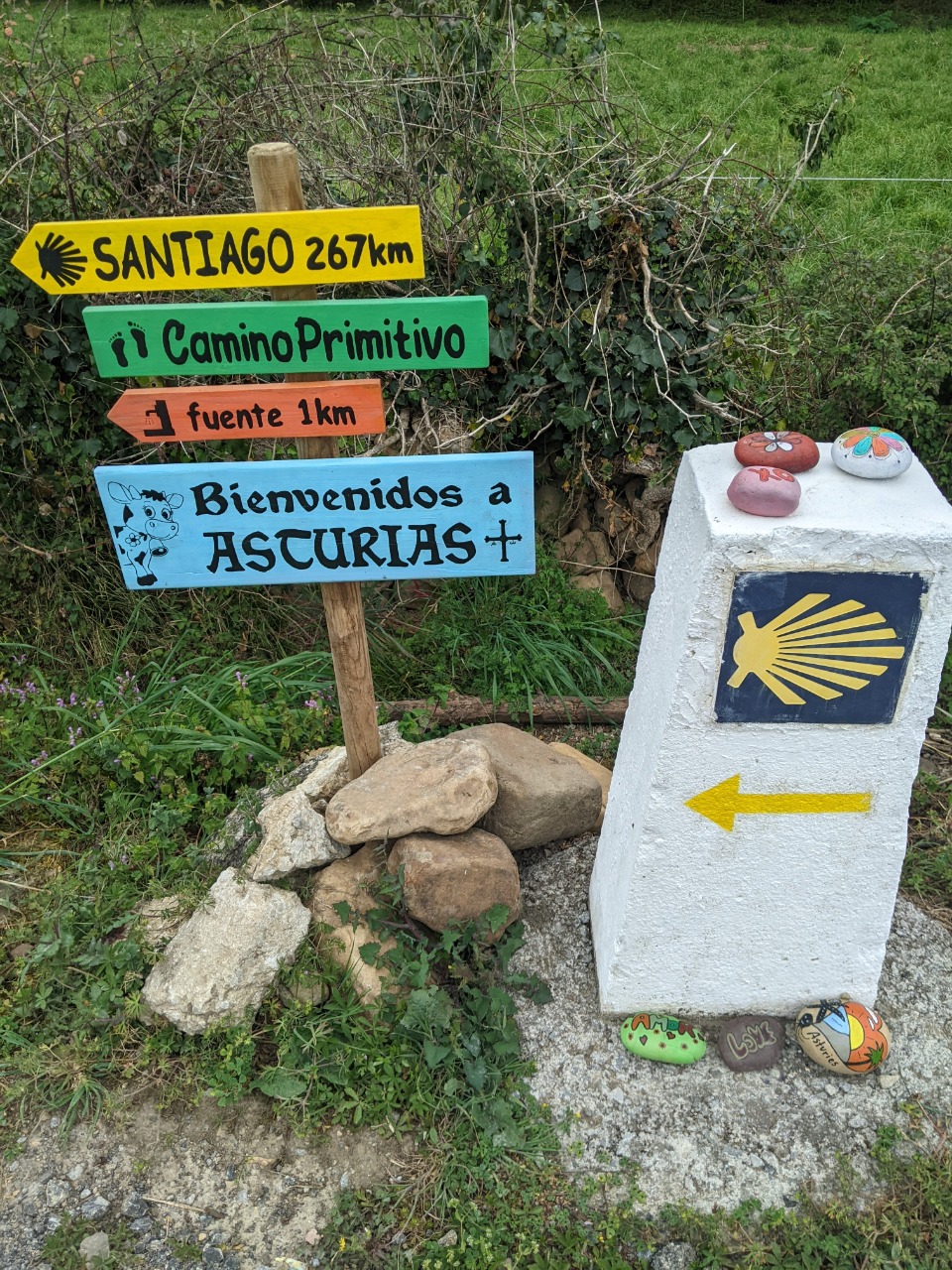
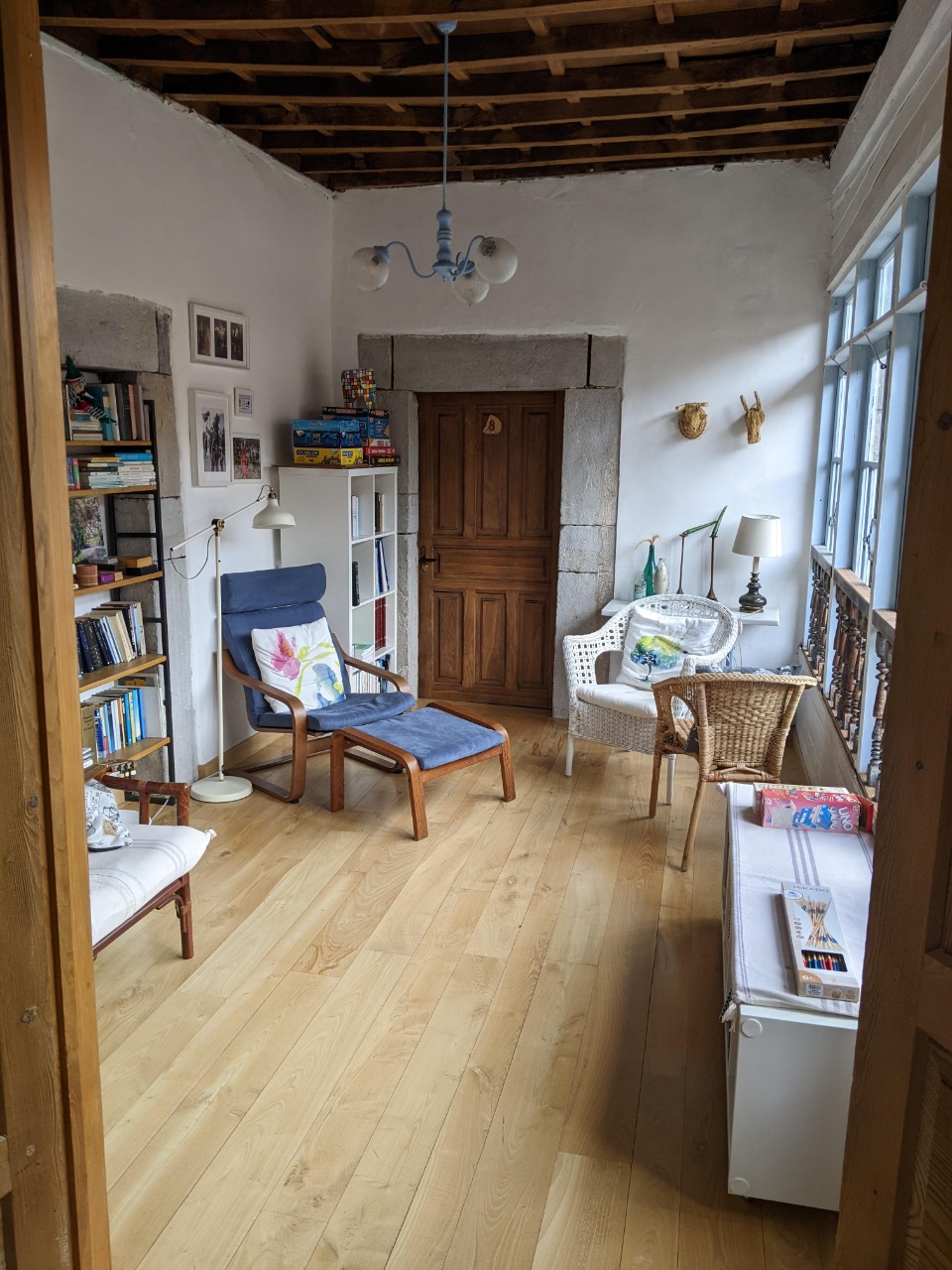
Fancy albergue
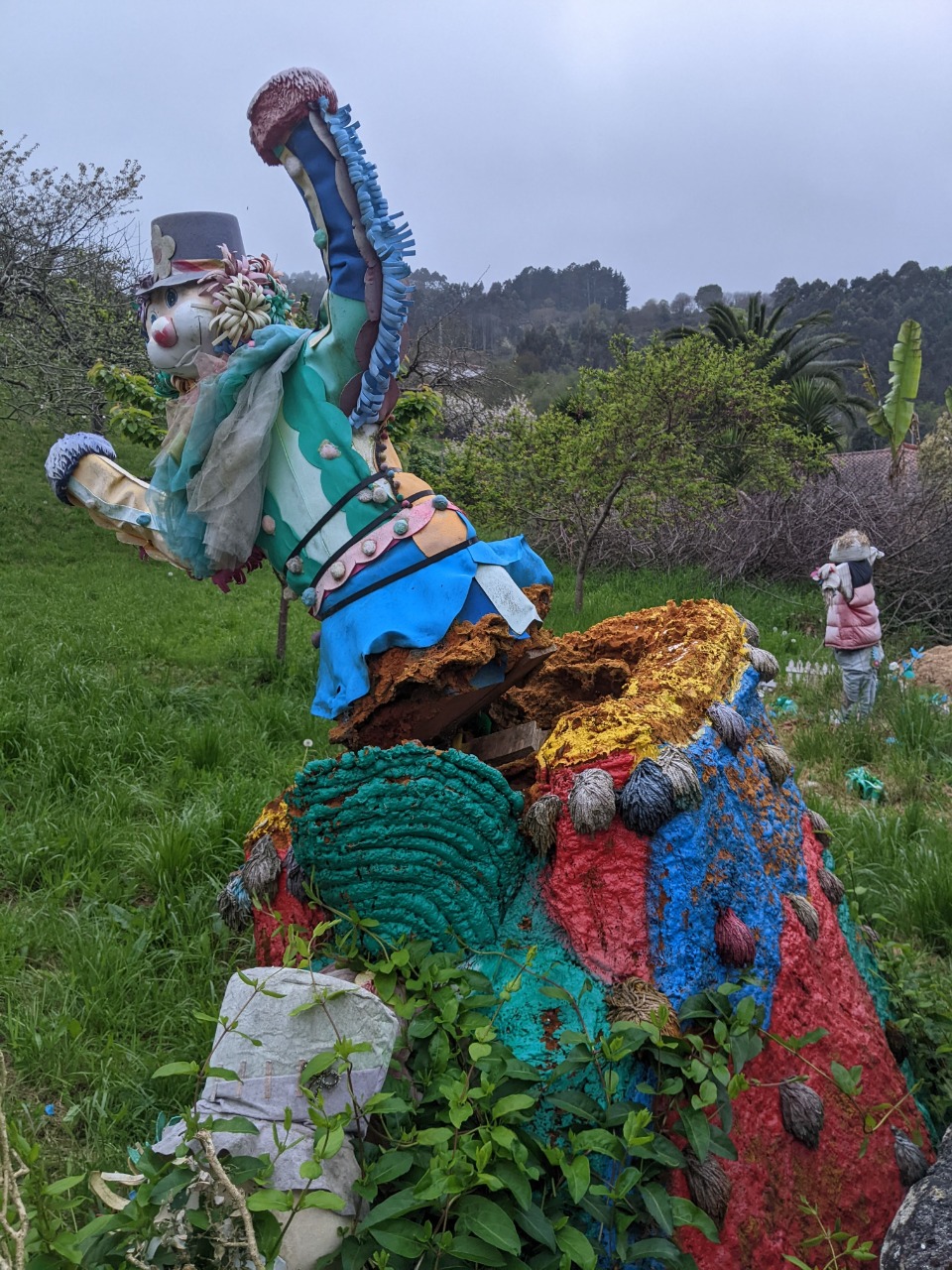
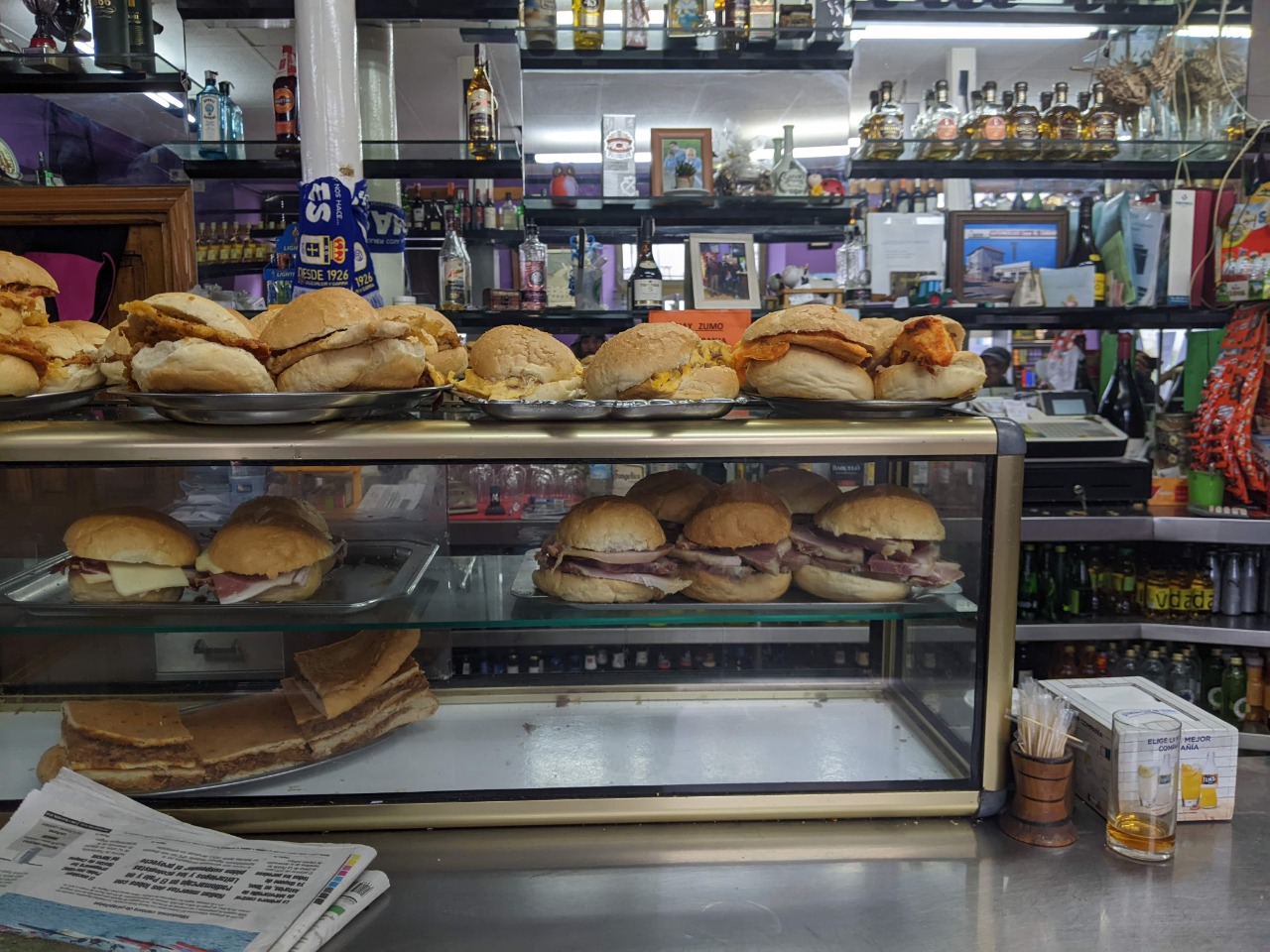
In Spain, you're rarely more than a few kilometers from a bar where you can get an egg sandwich and cafe con leche - always for around $3, any time of day.
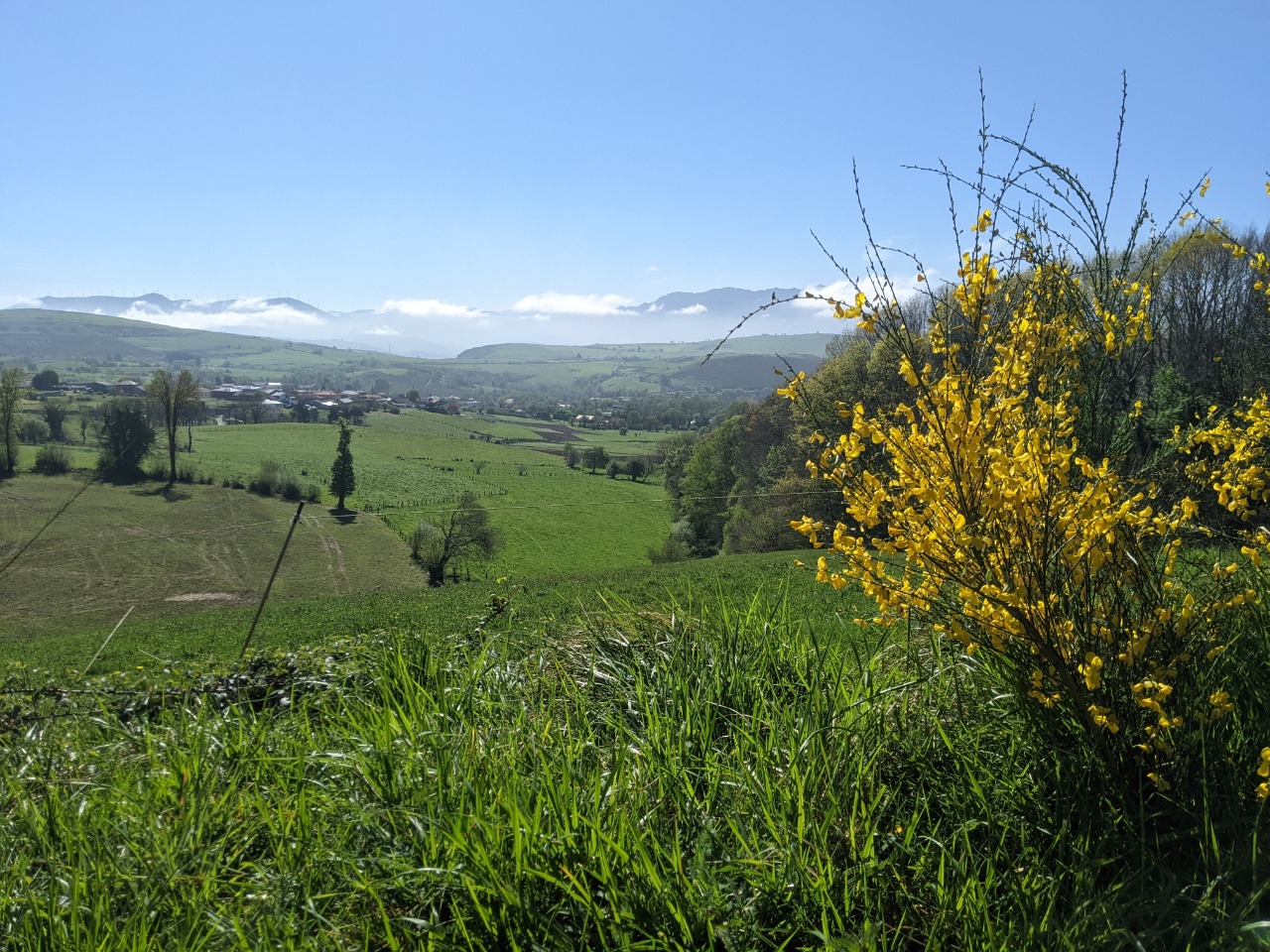
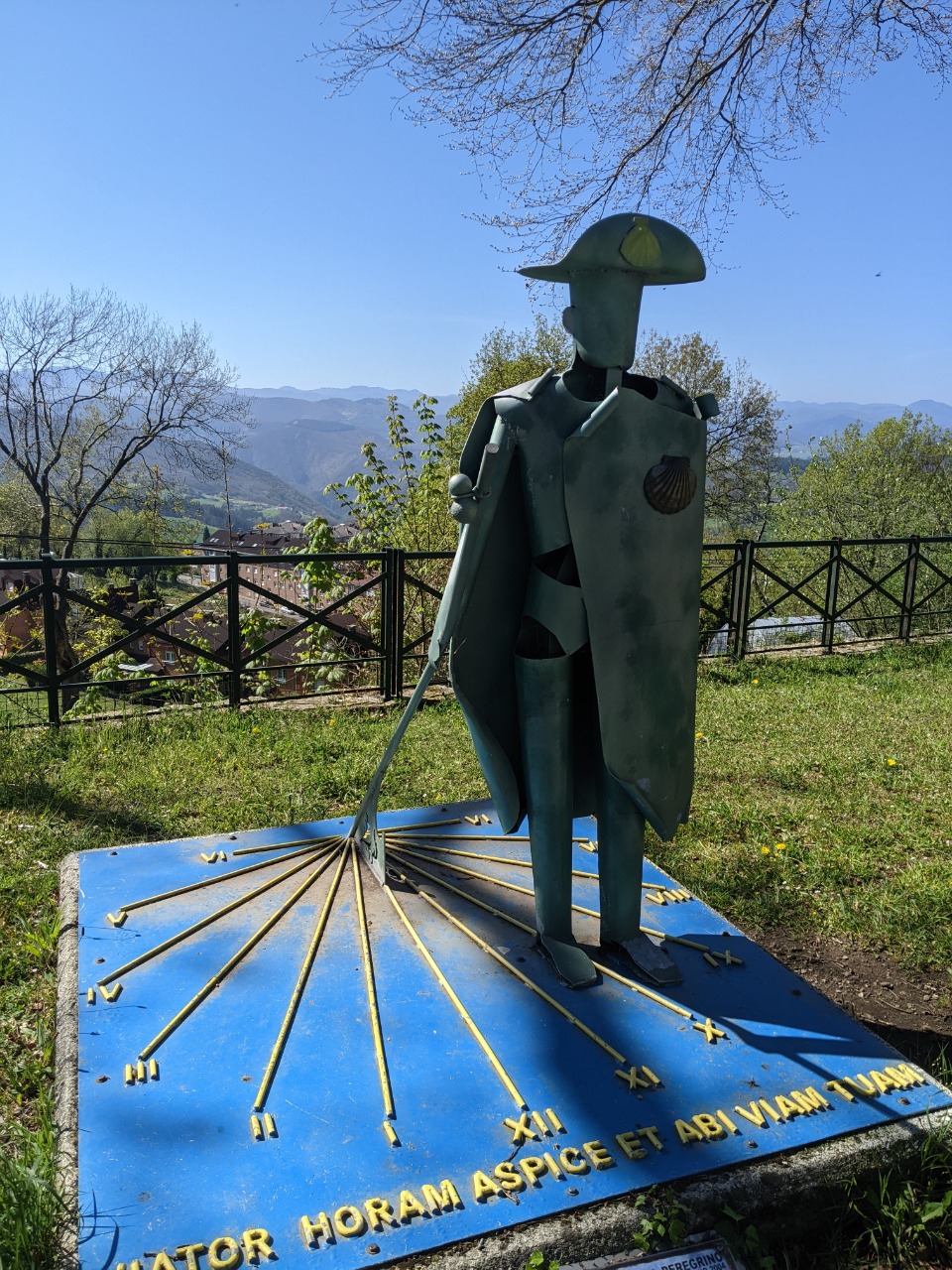
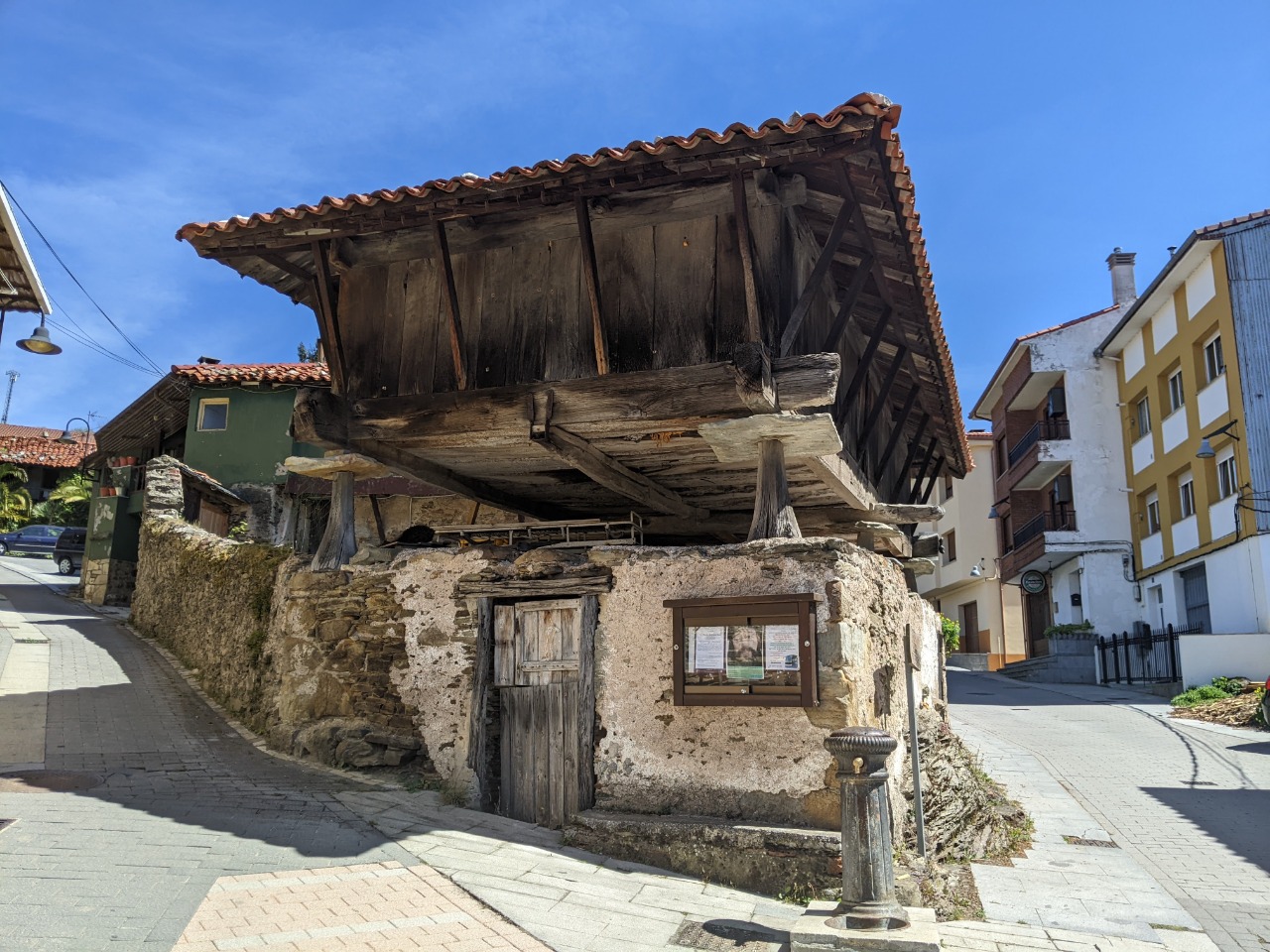
Mid-city rooftop granary
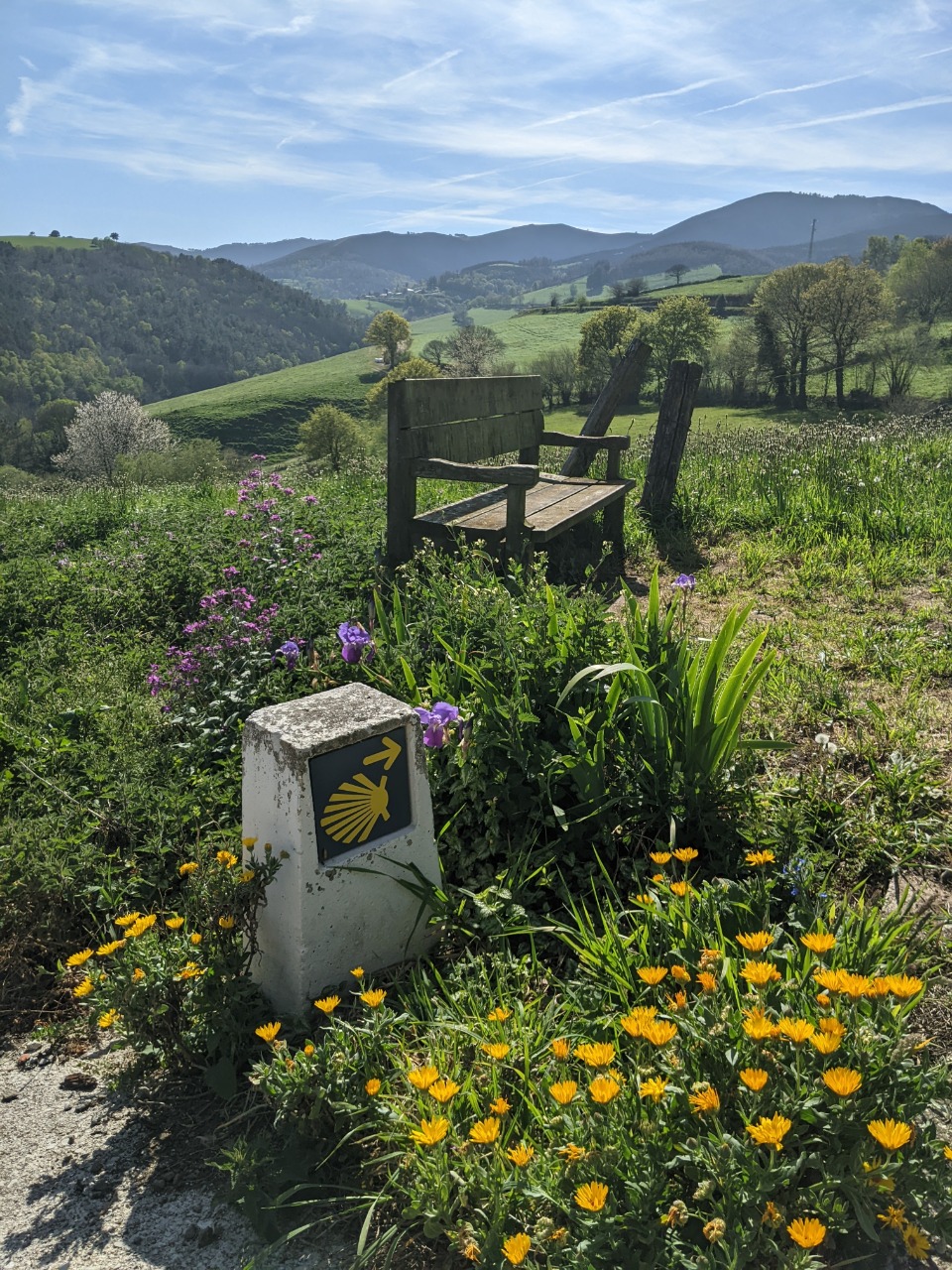
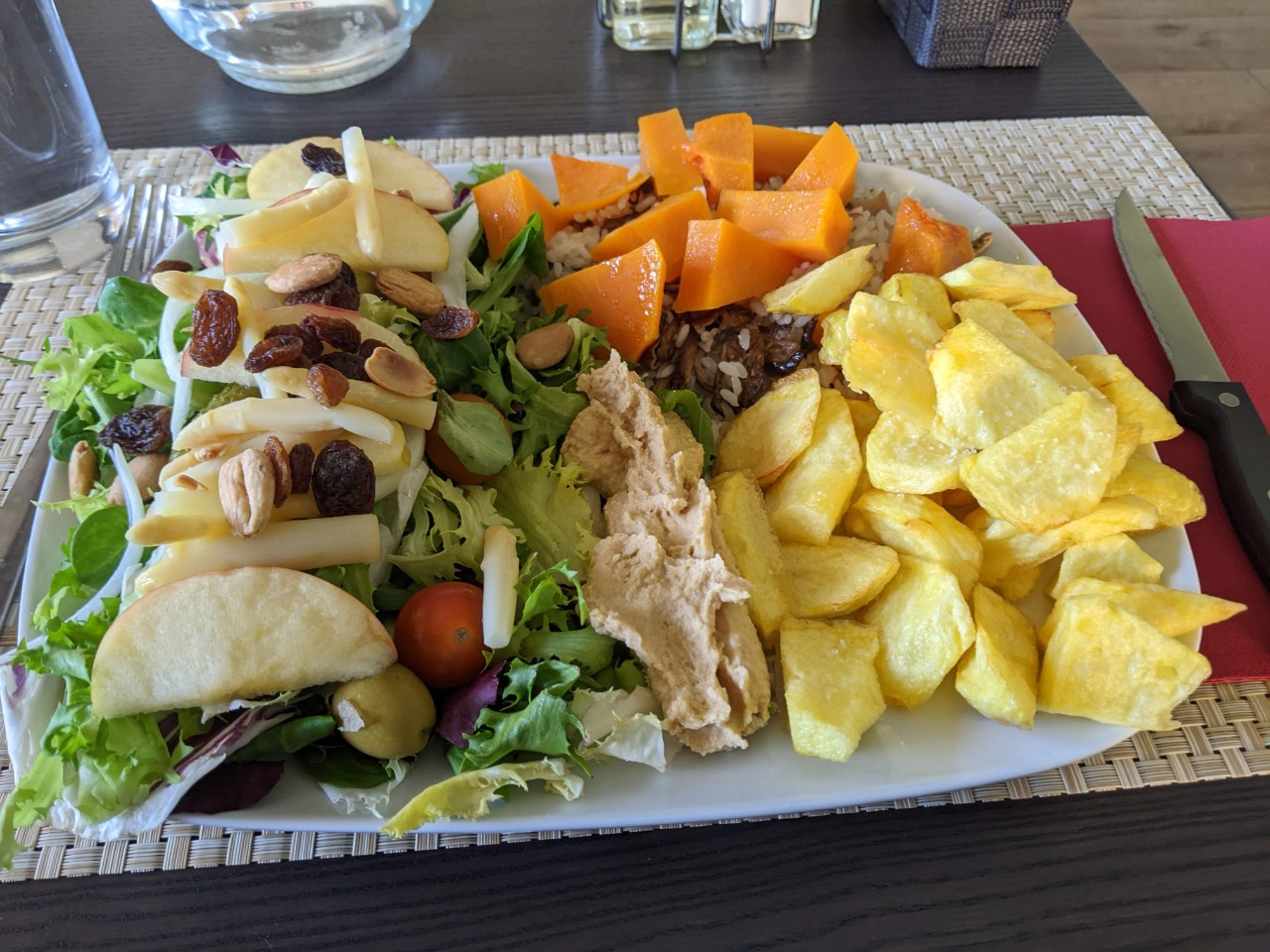
Delicious vegan plate with pumpkin, olives, and hummus.
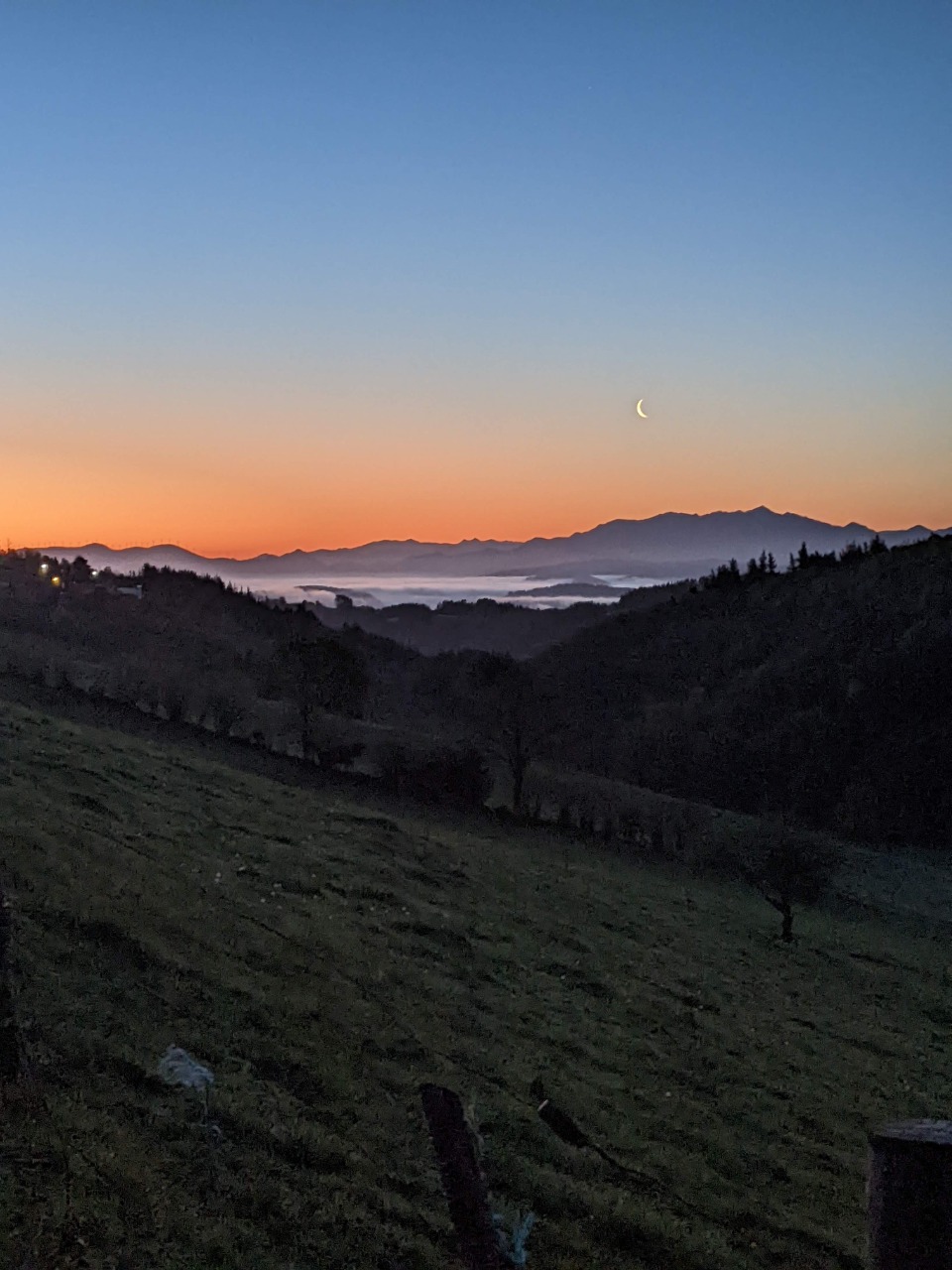
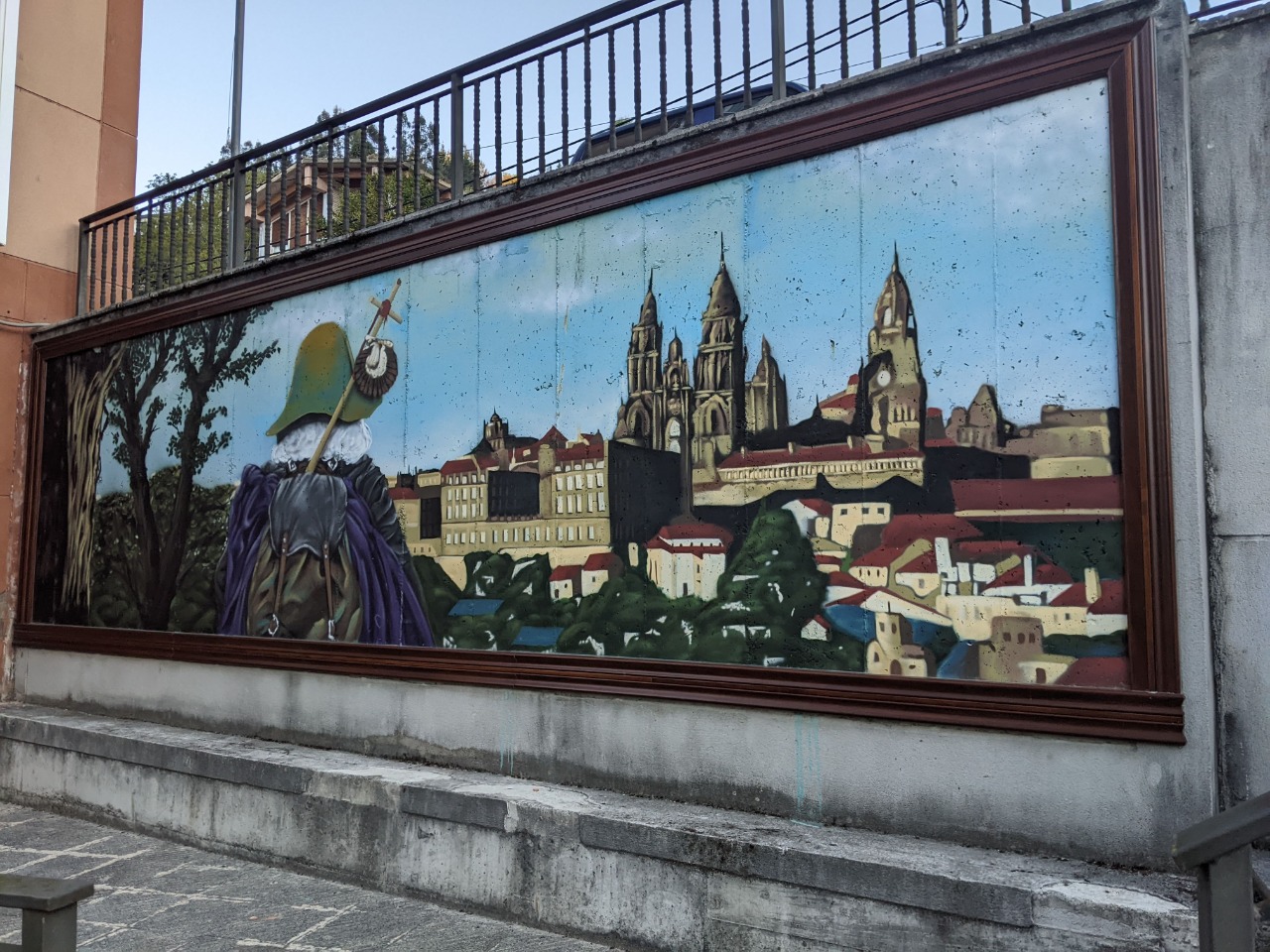
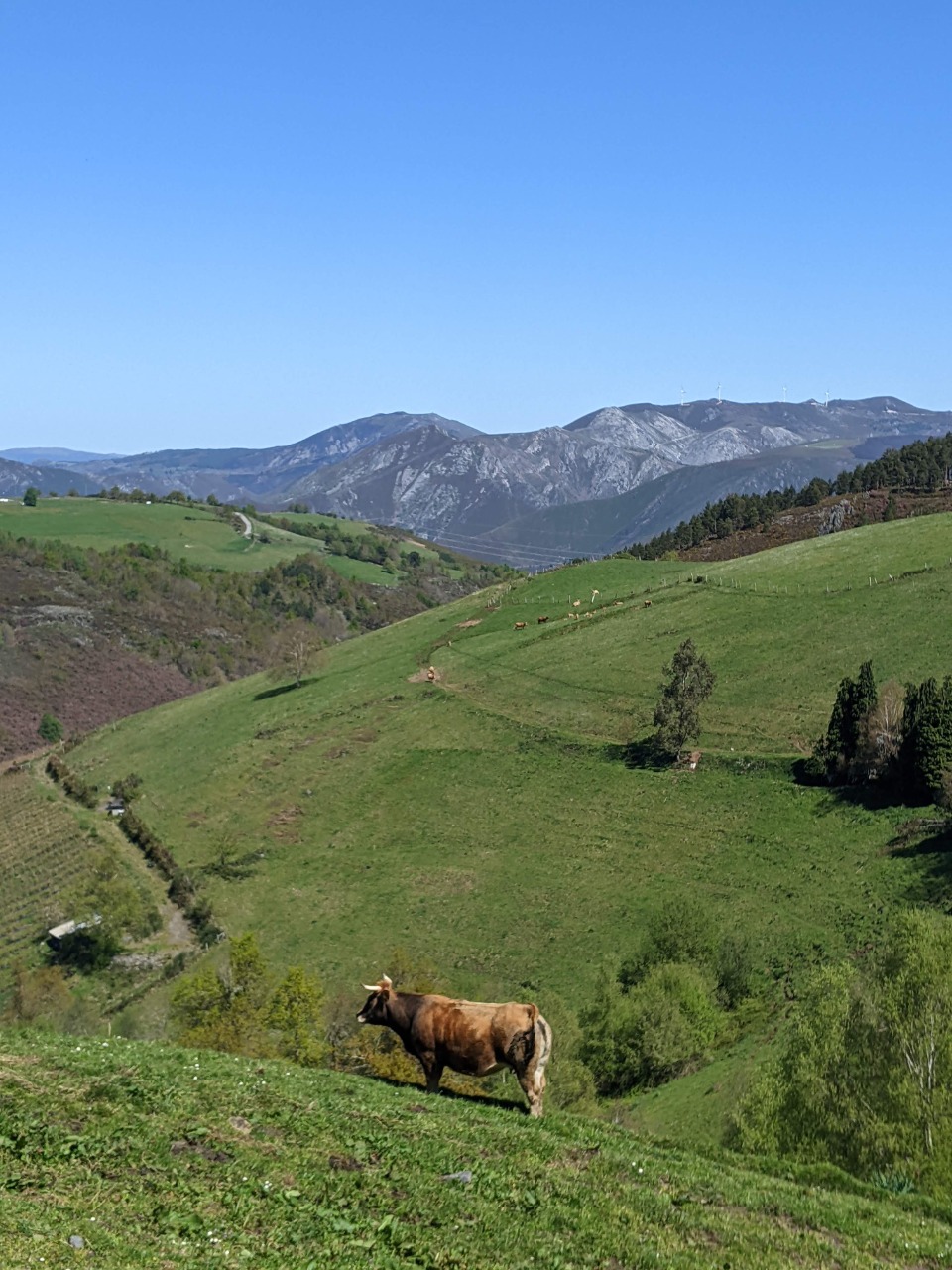
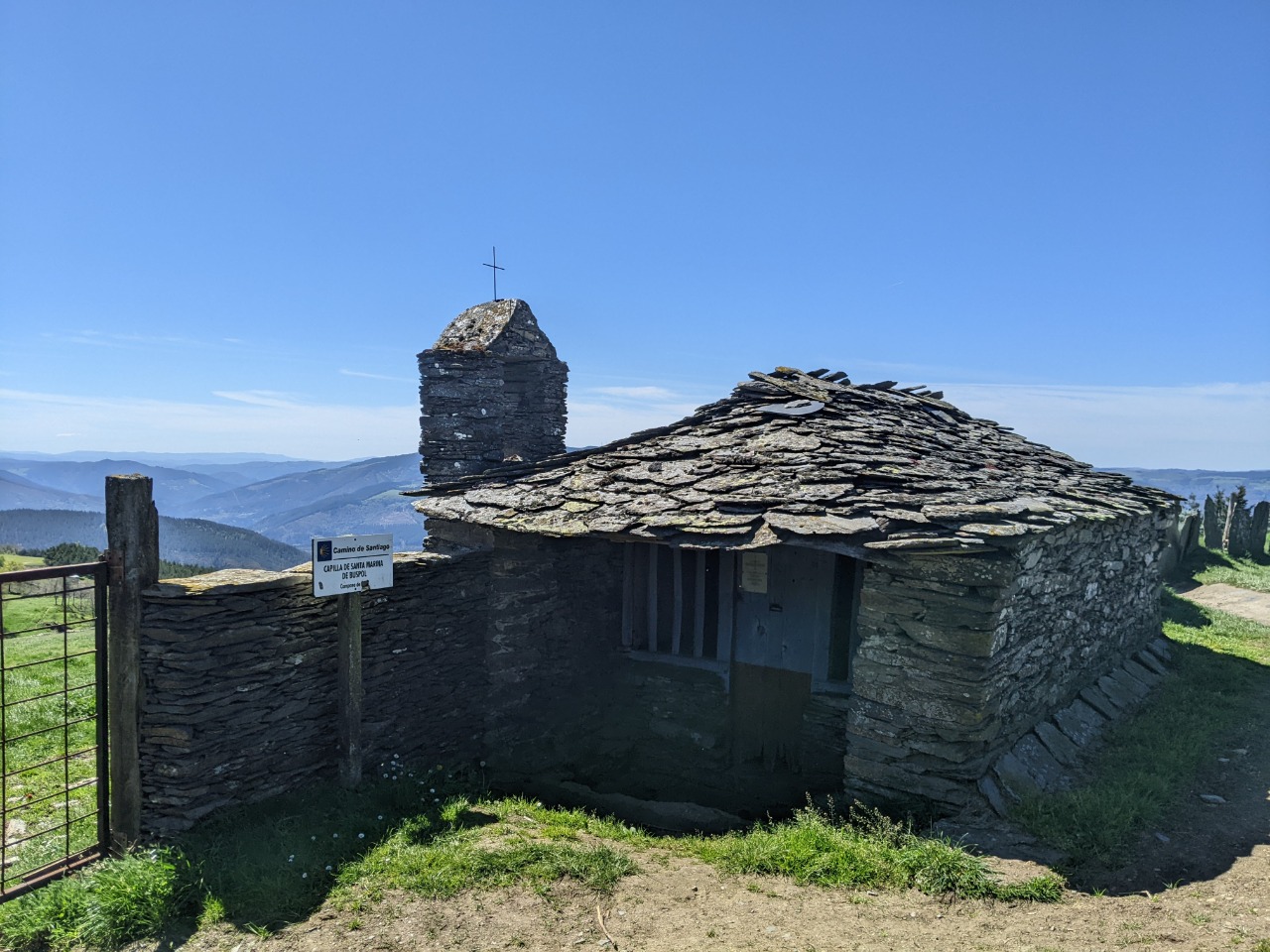
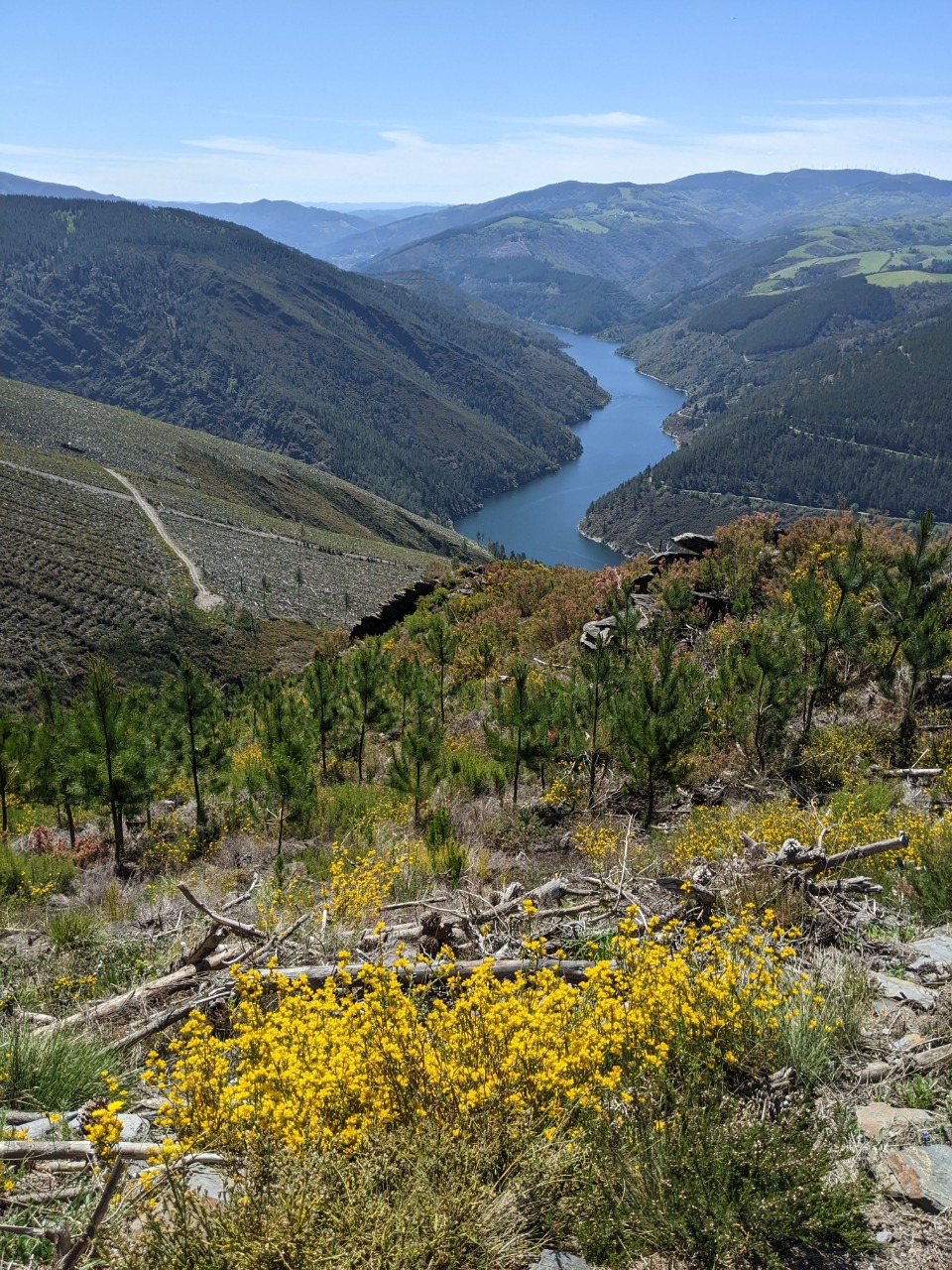
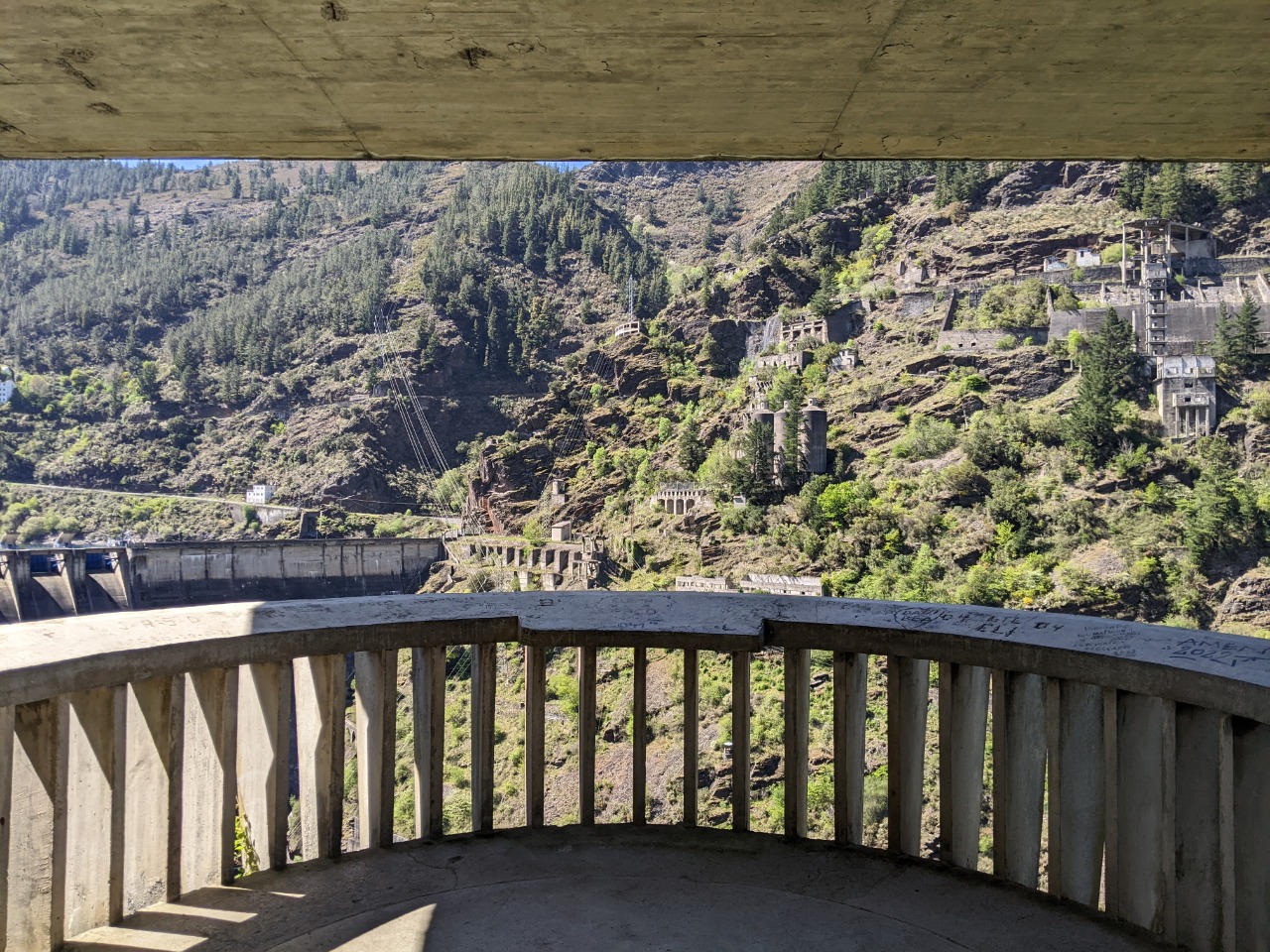
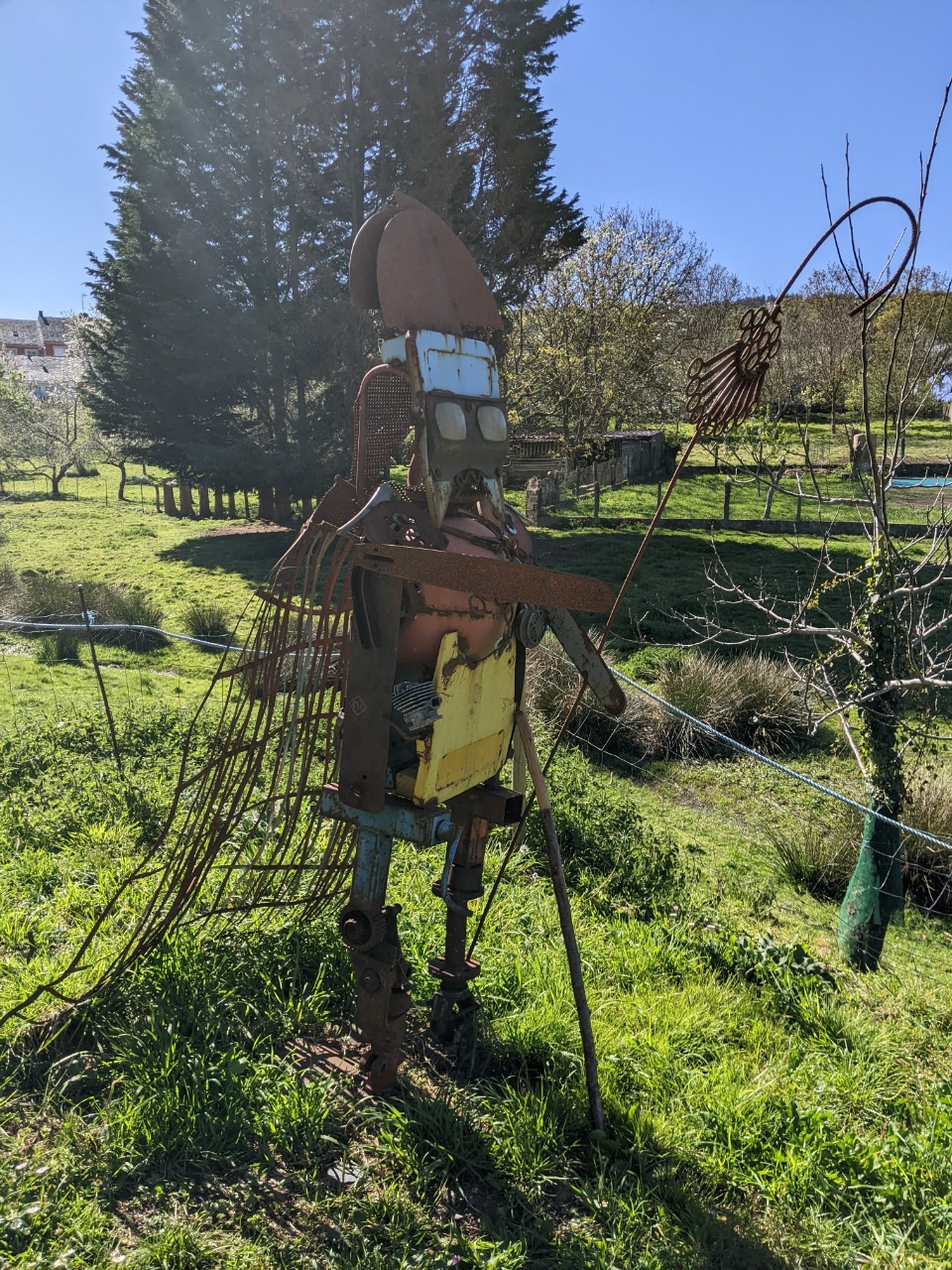
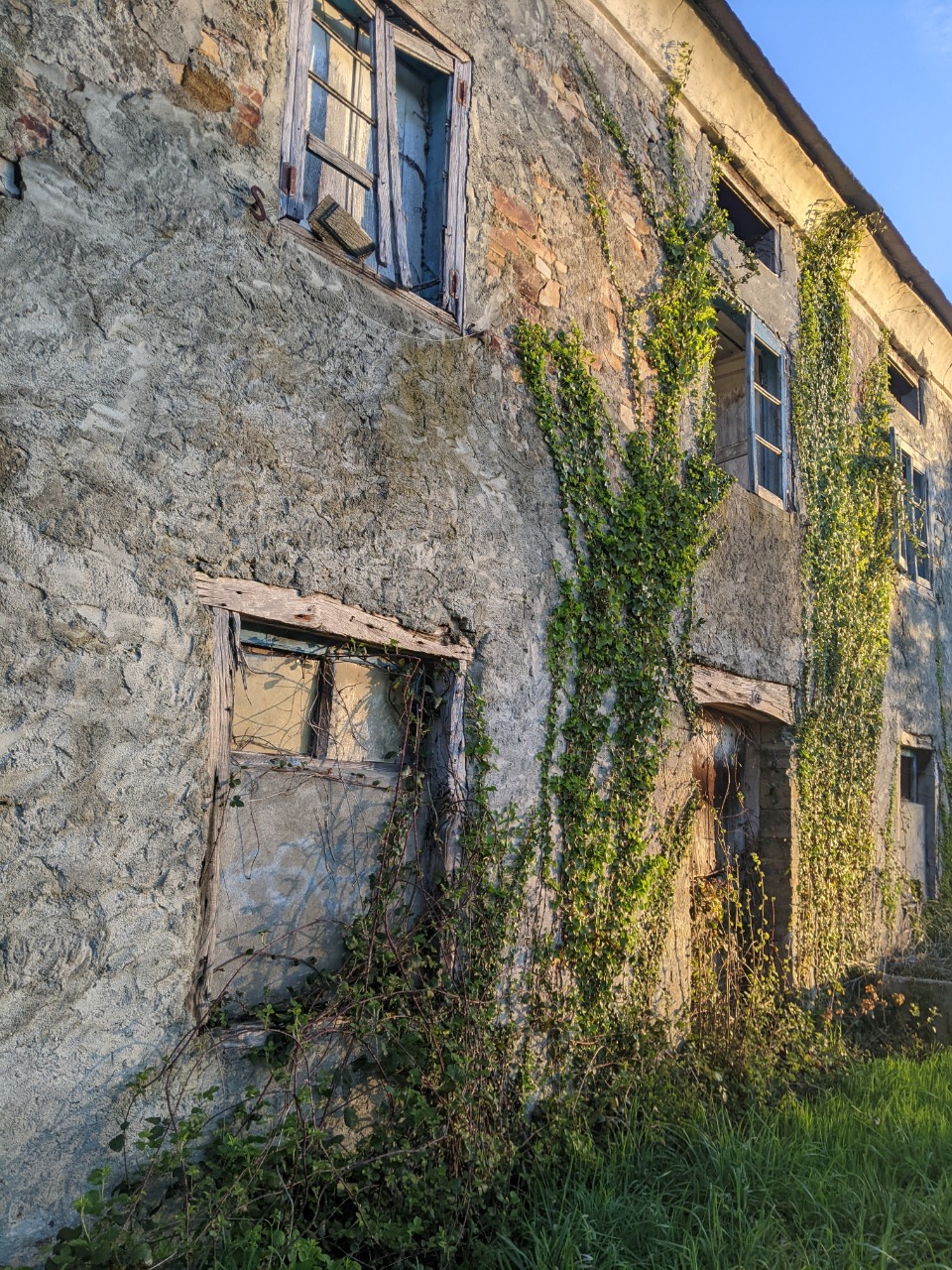
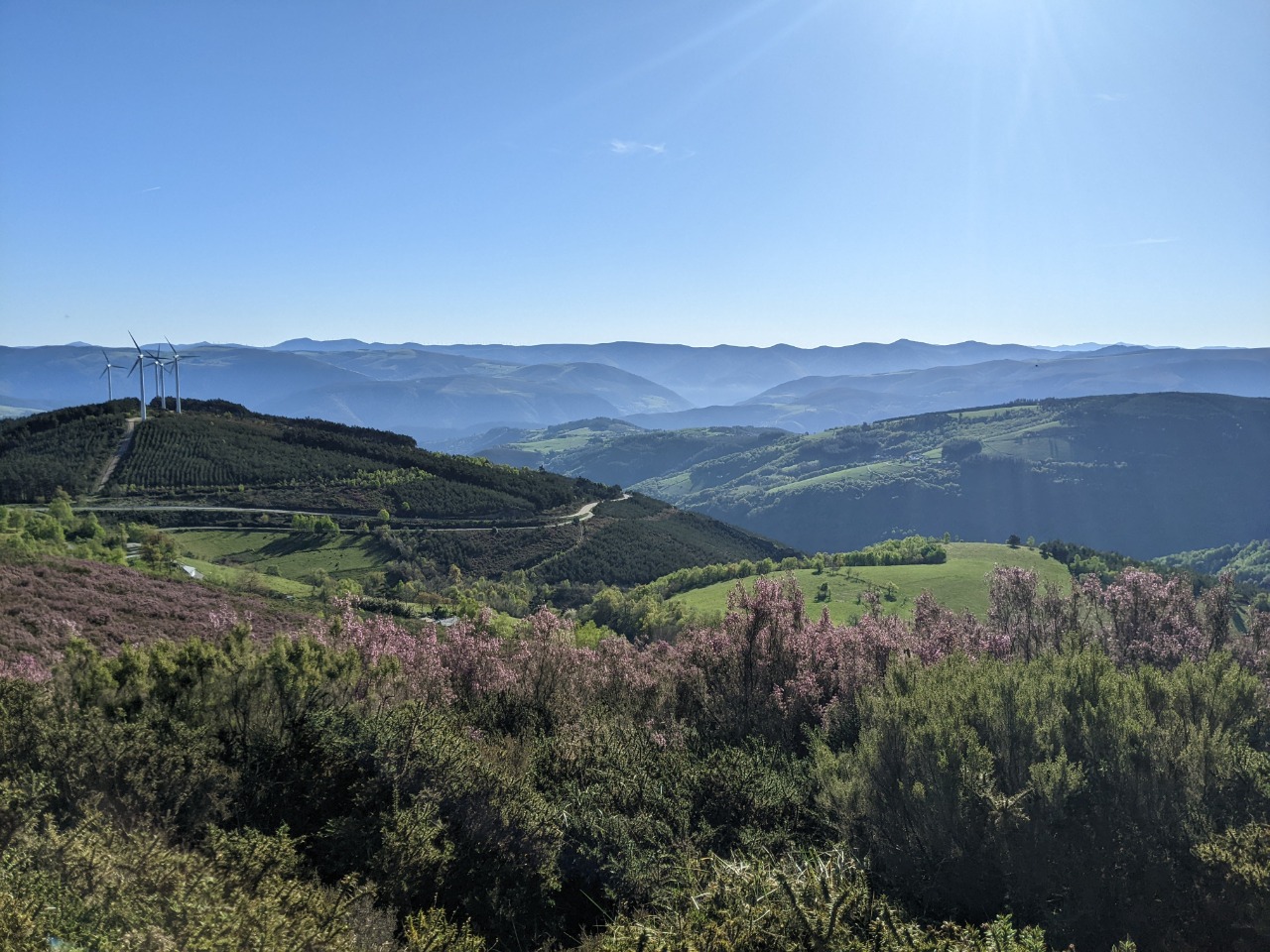
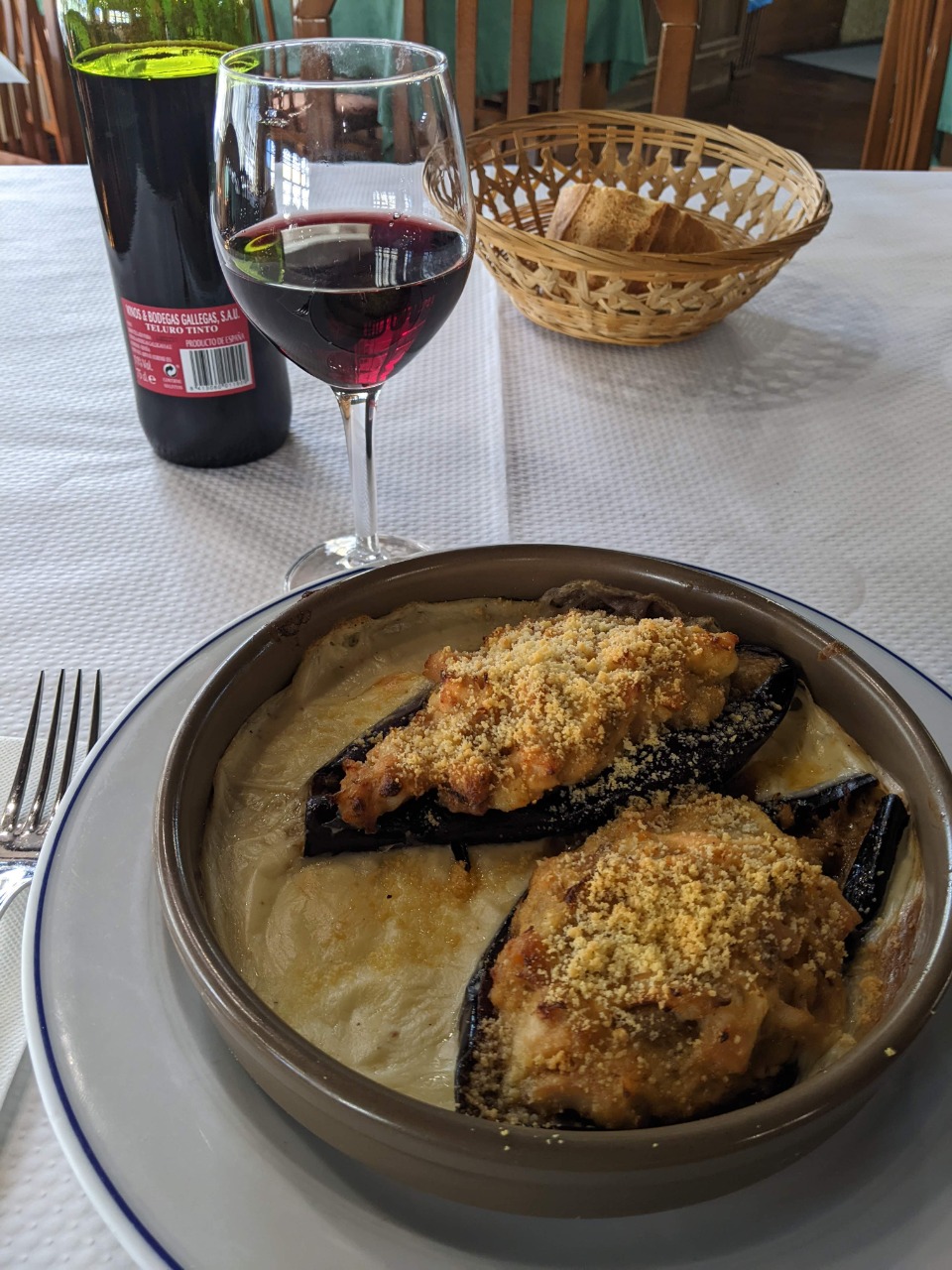
Eggplant, stuffed with fish, submerged in cream
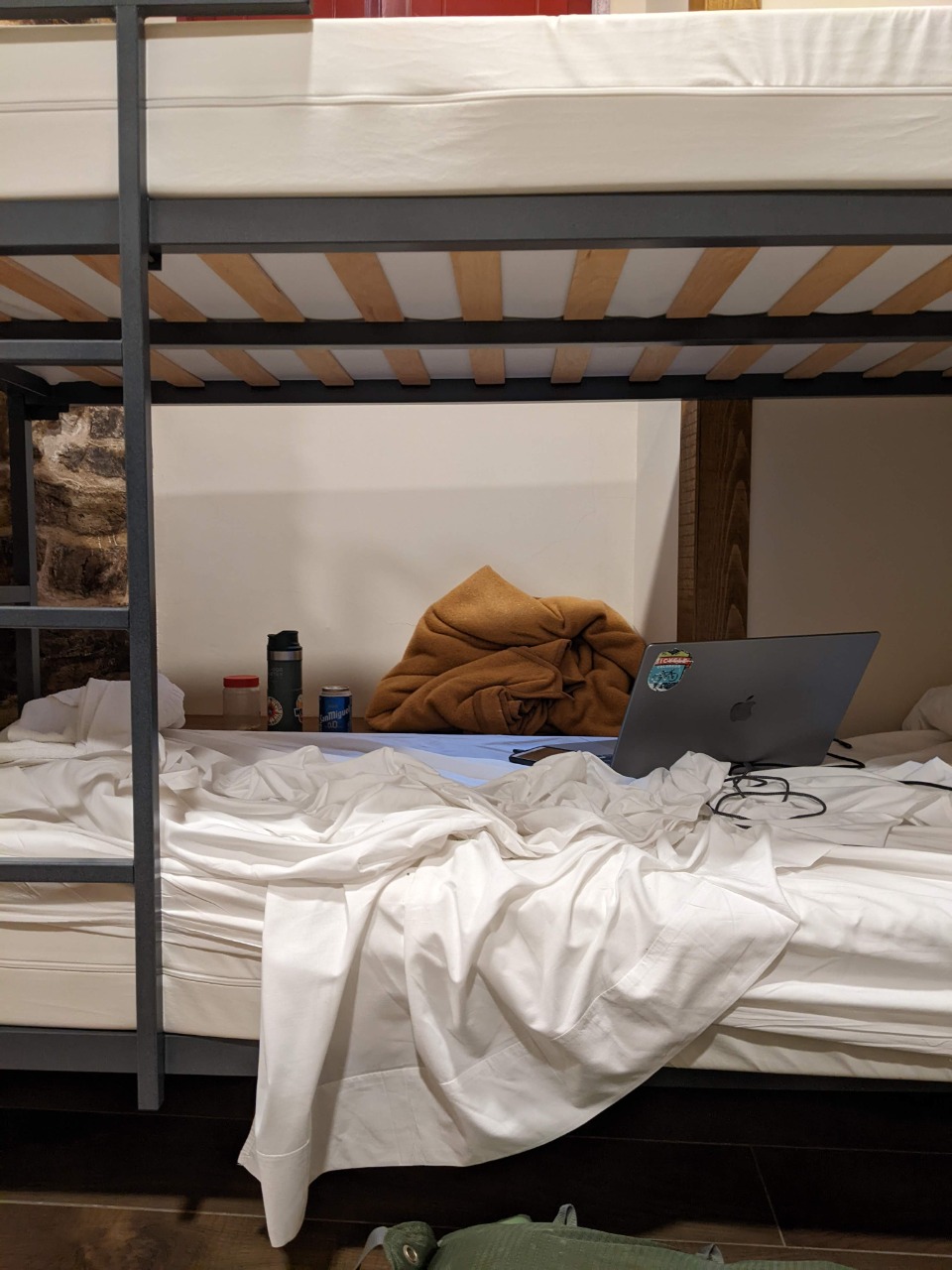
Since the bunk was too low, I had to work from the window well.
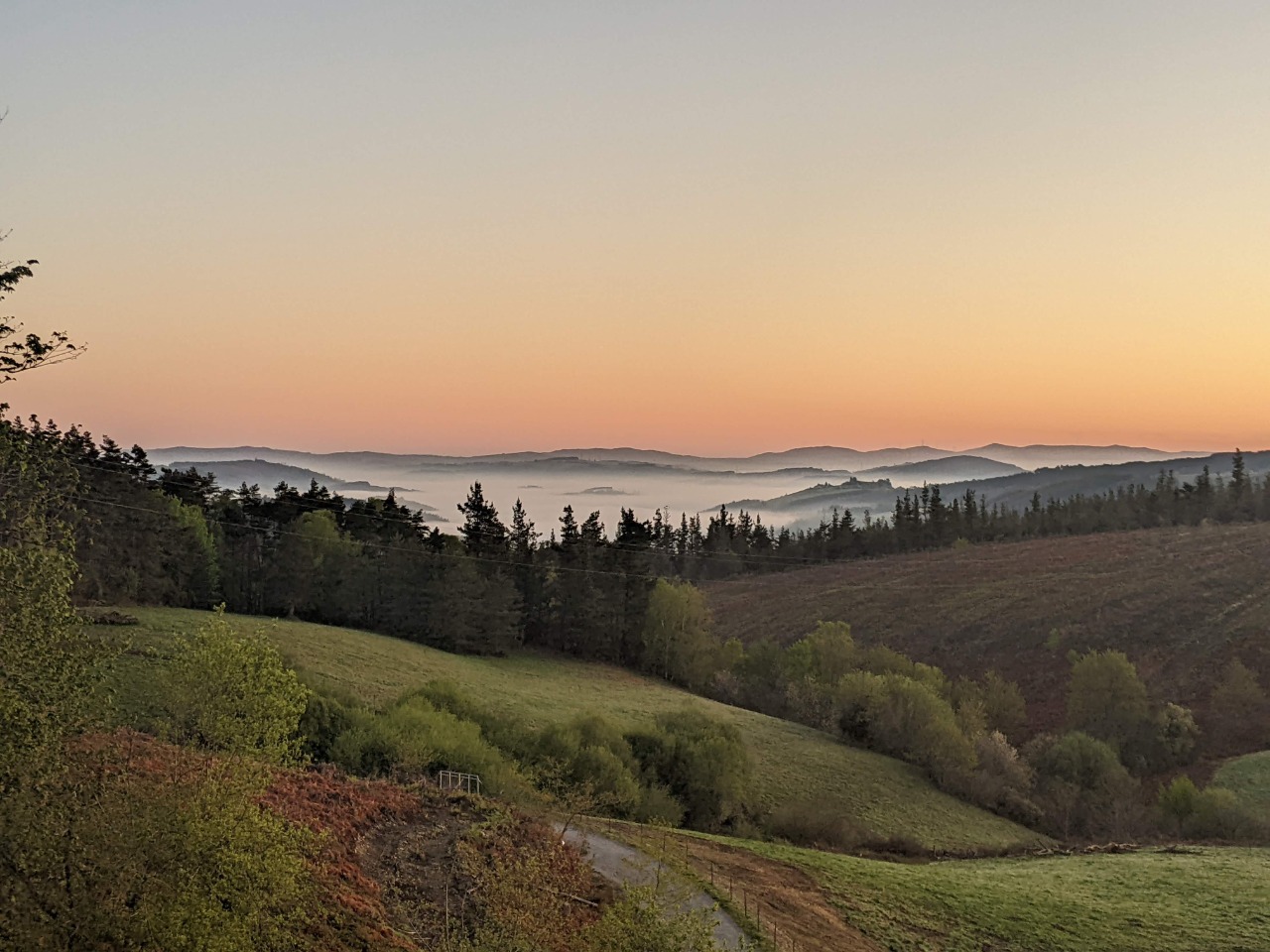
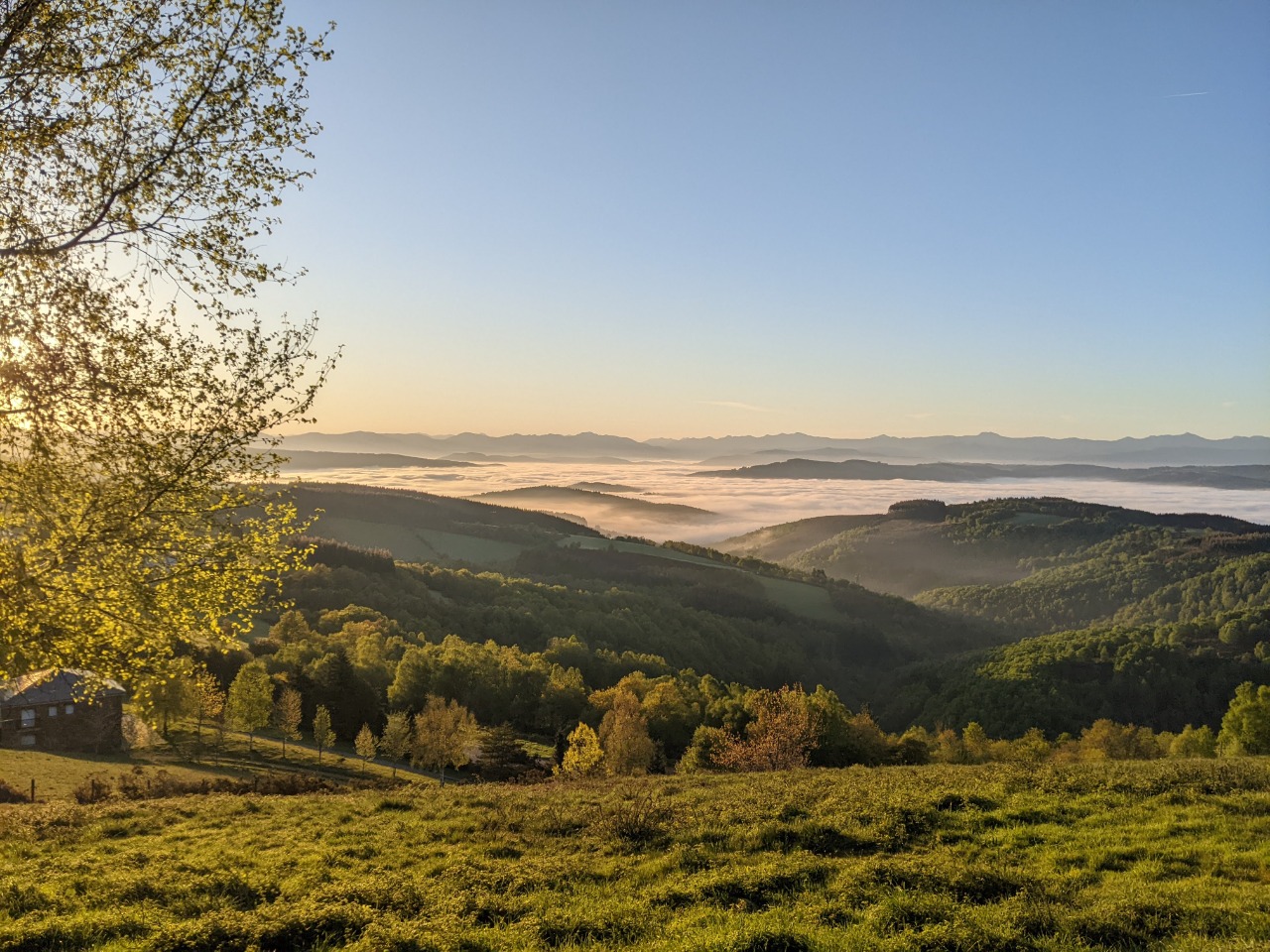
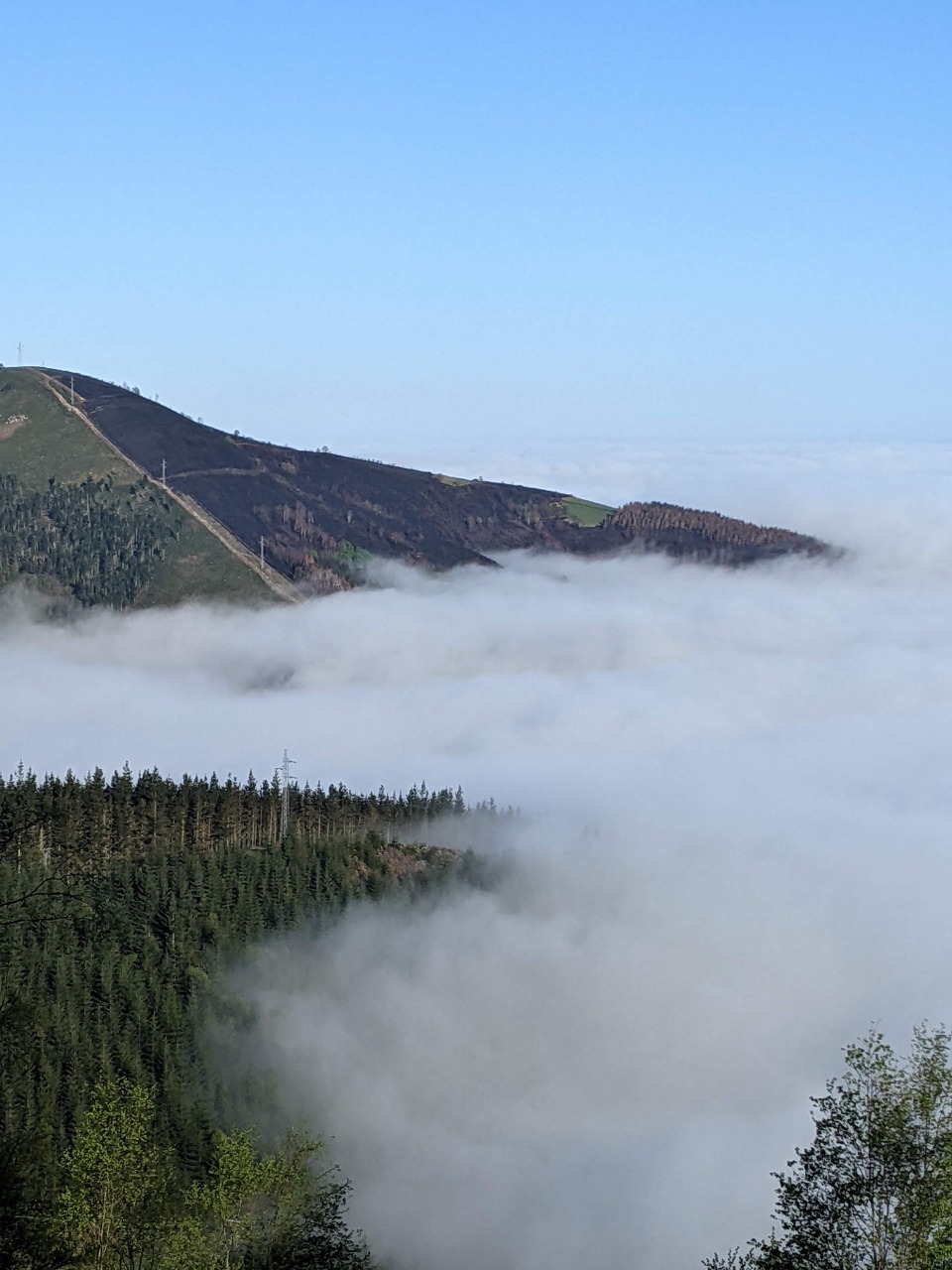
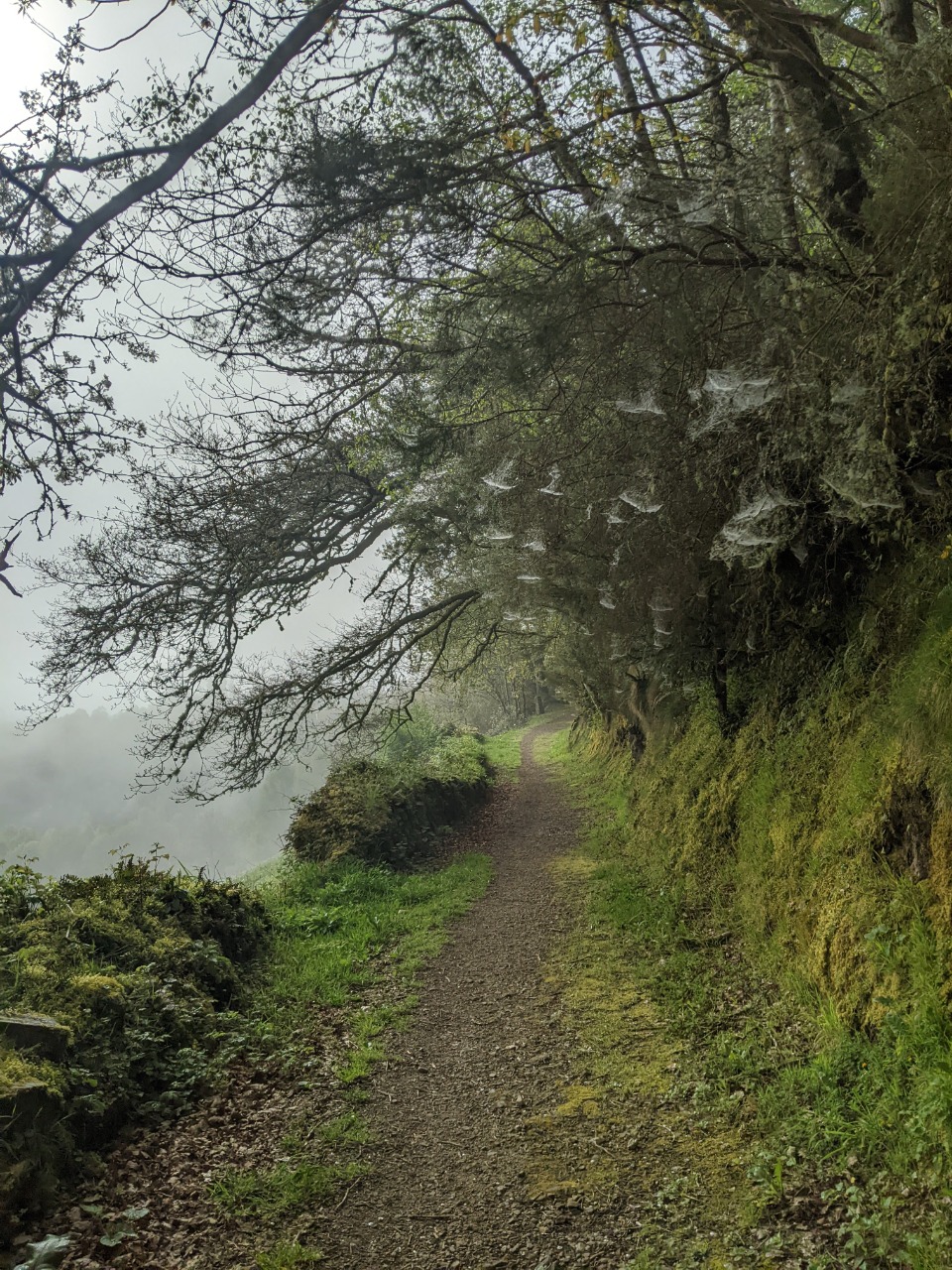
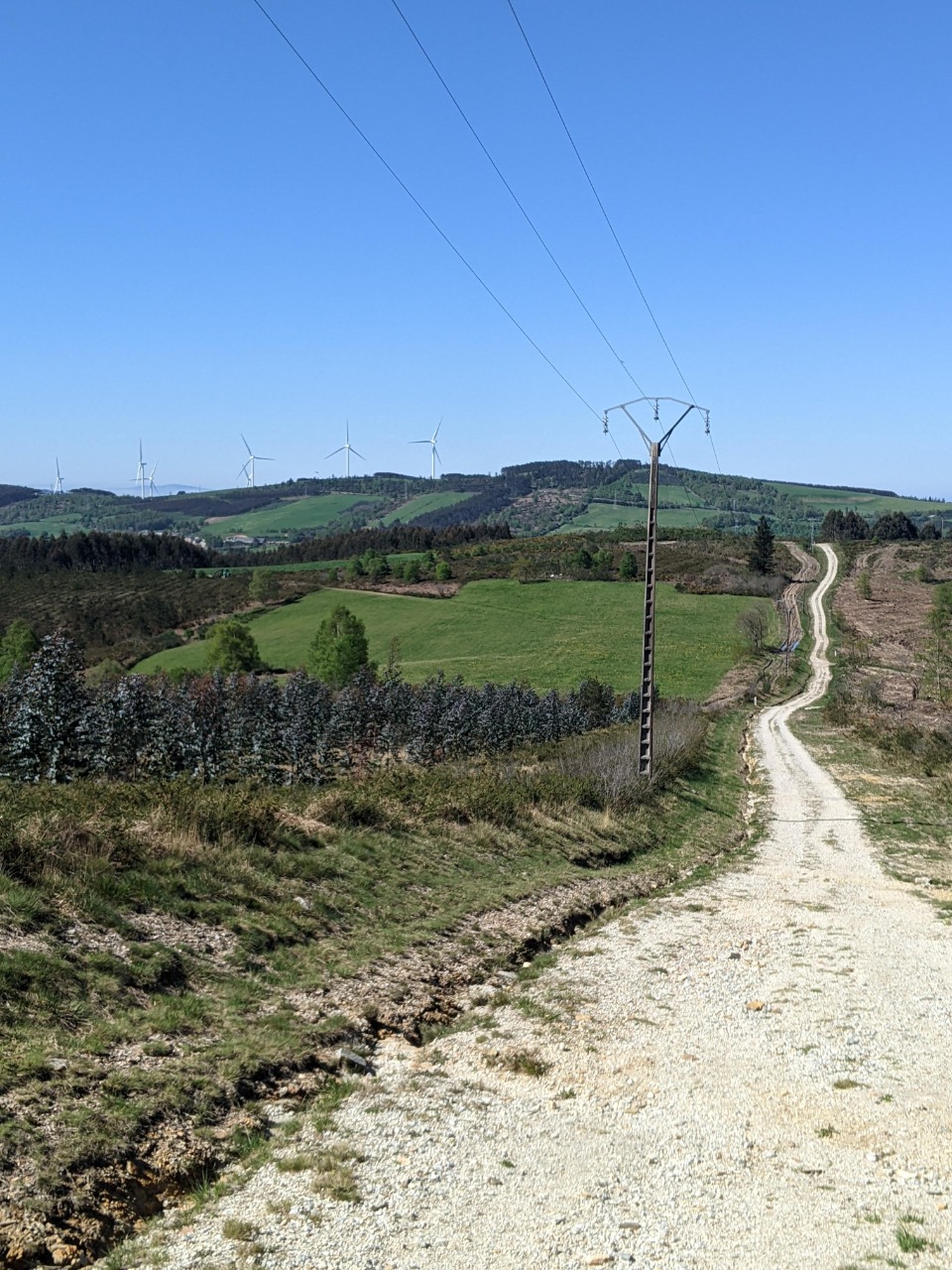
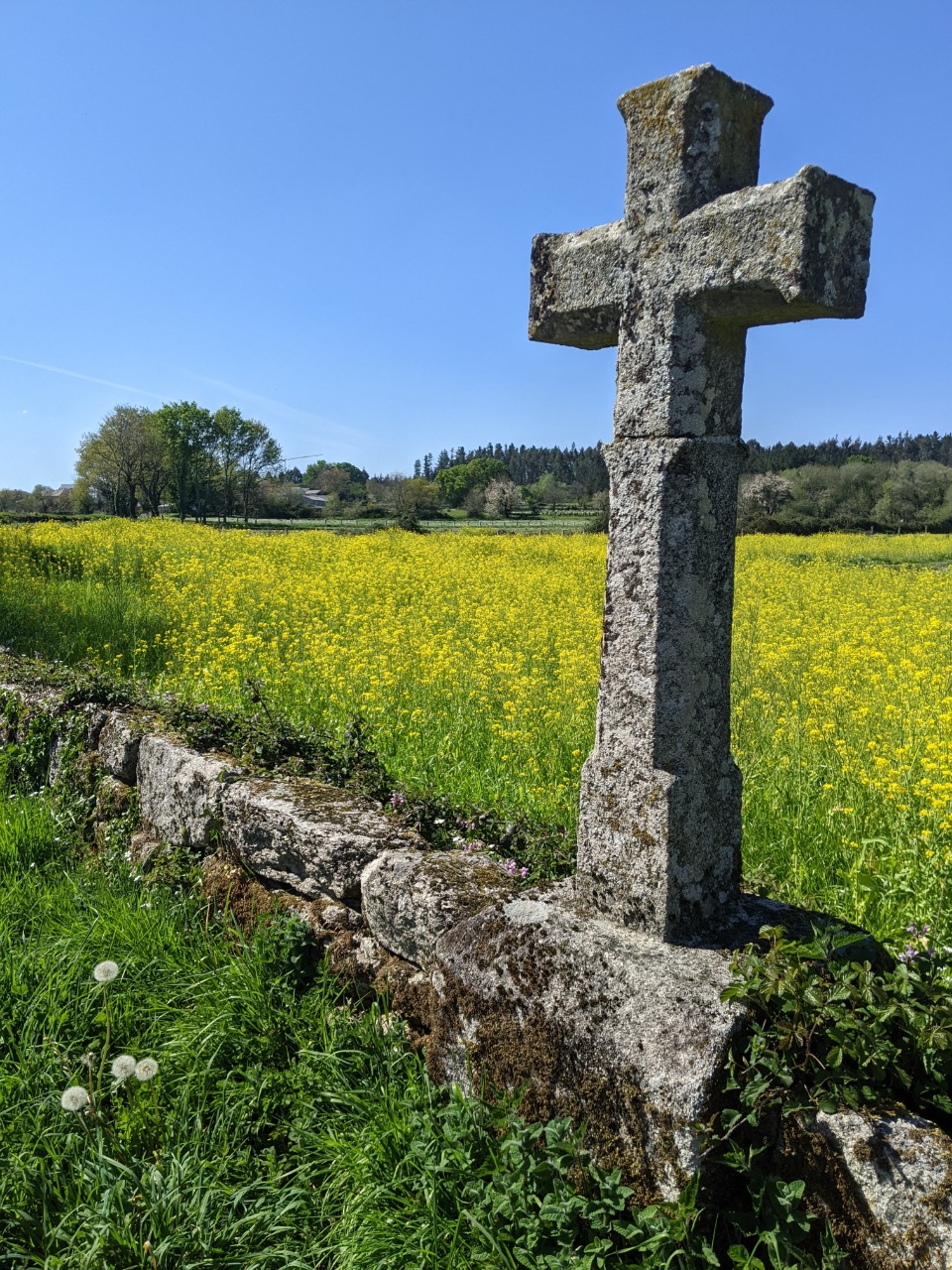
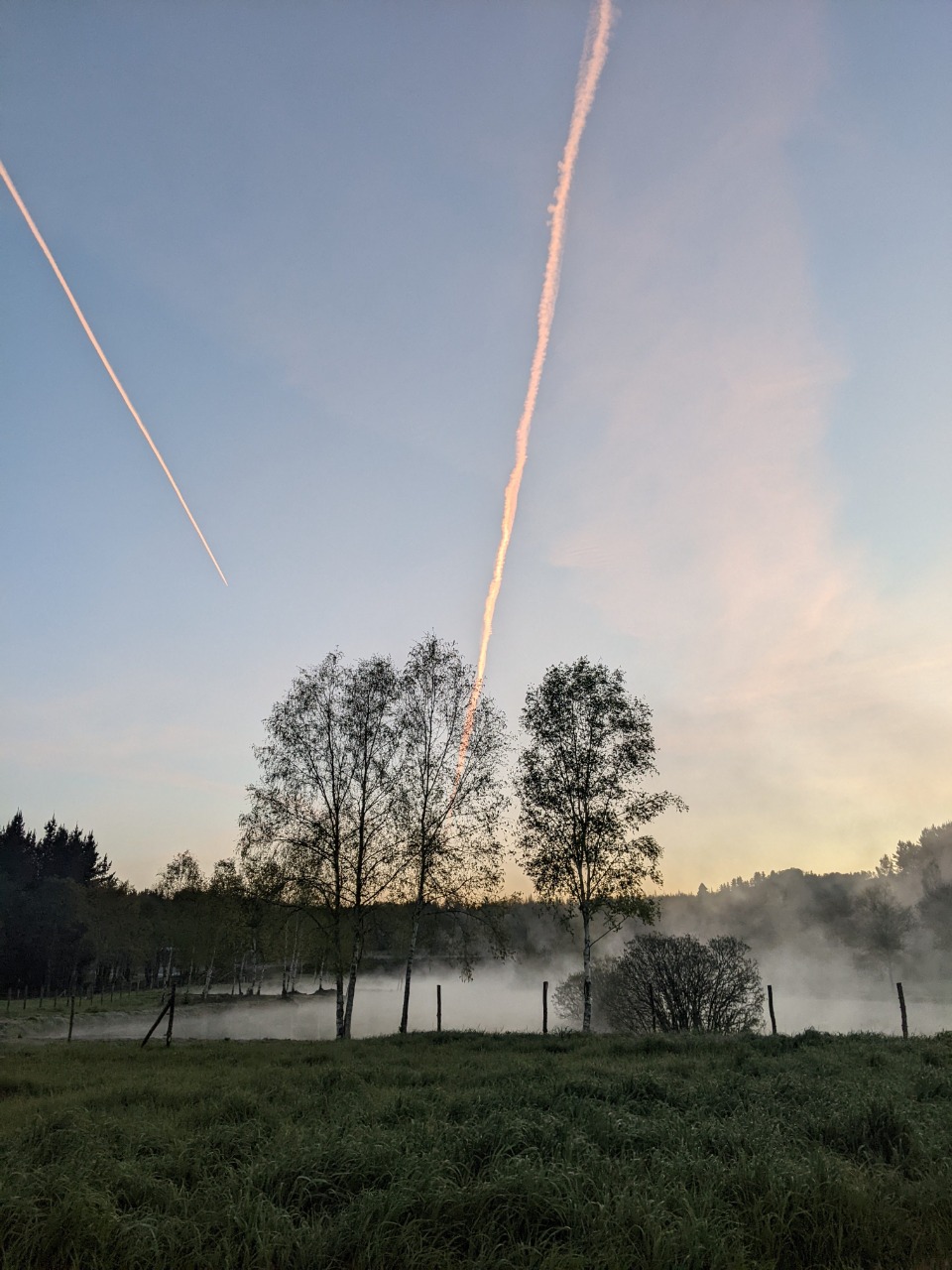
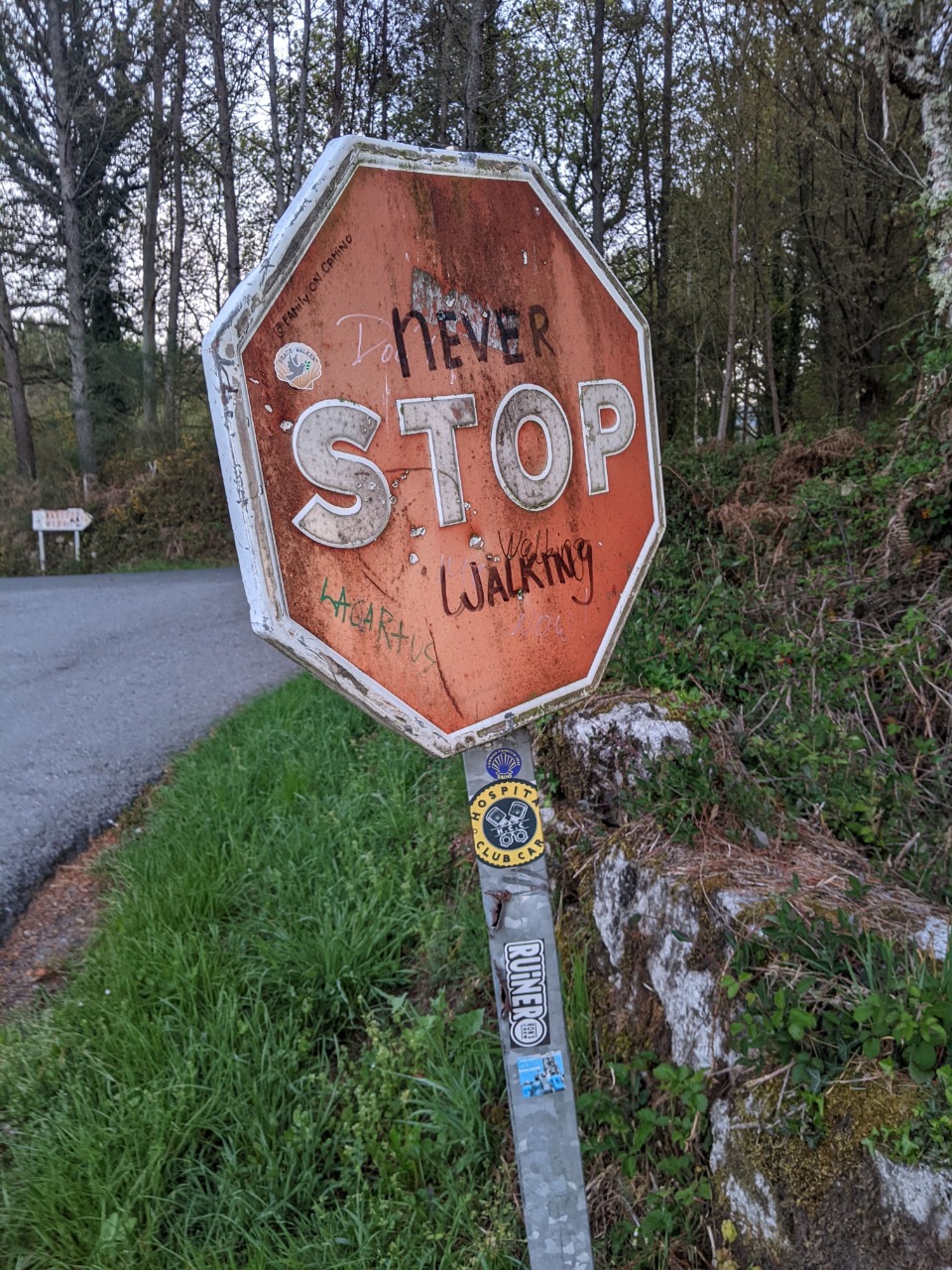
This basically sums it up.
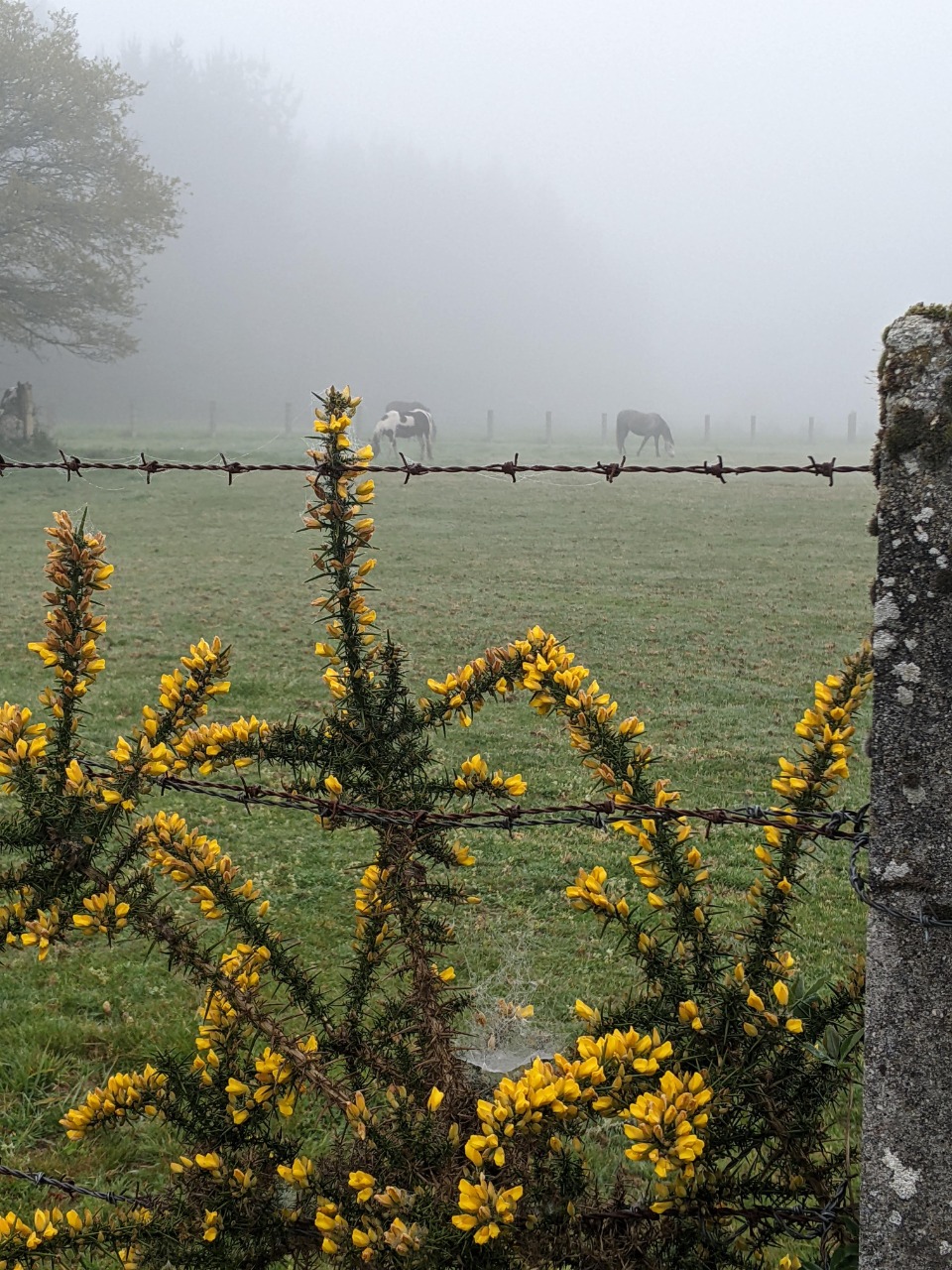
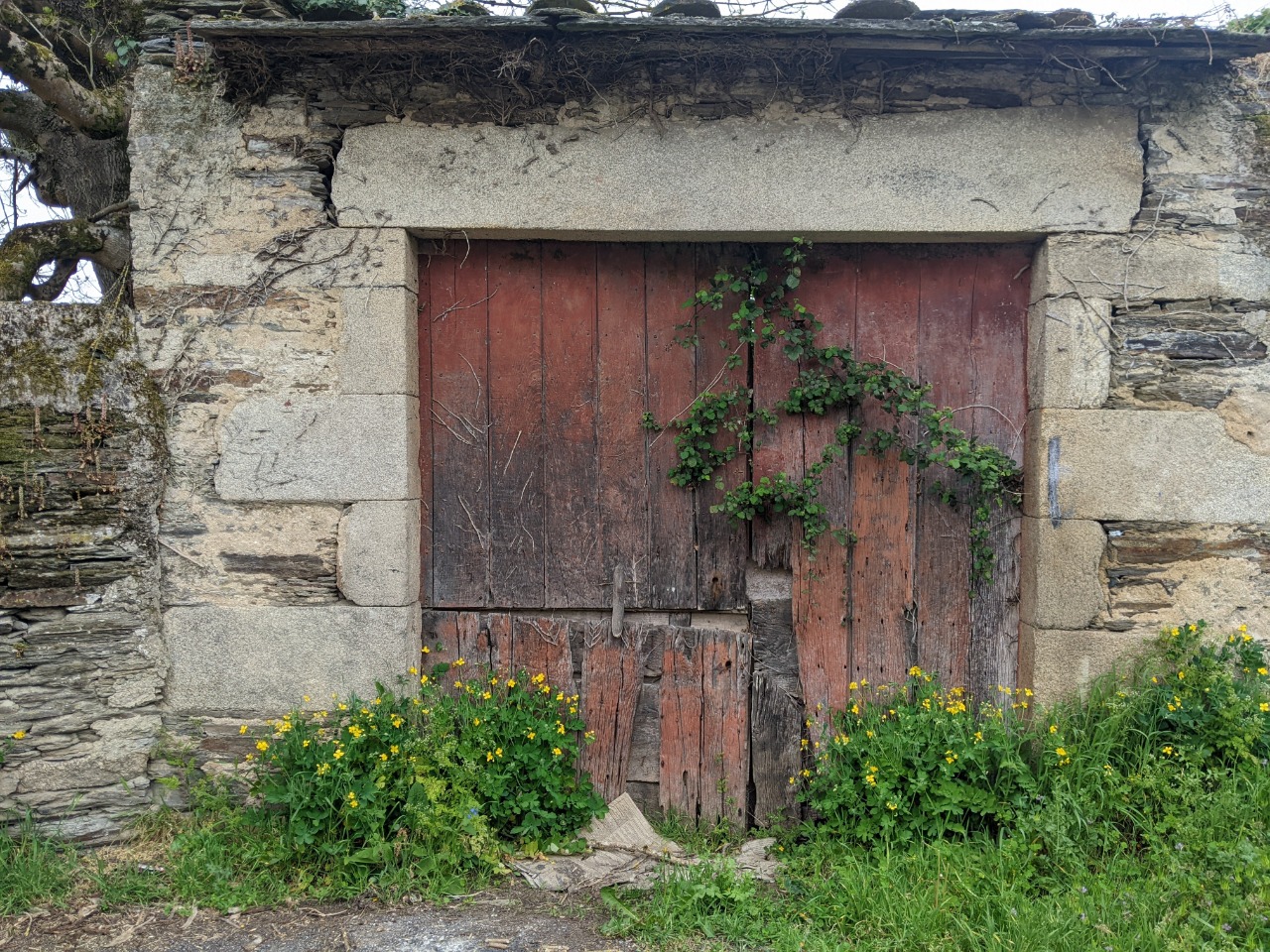
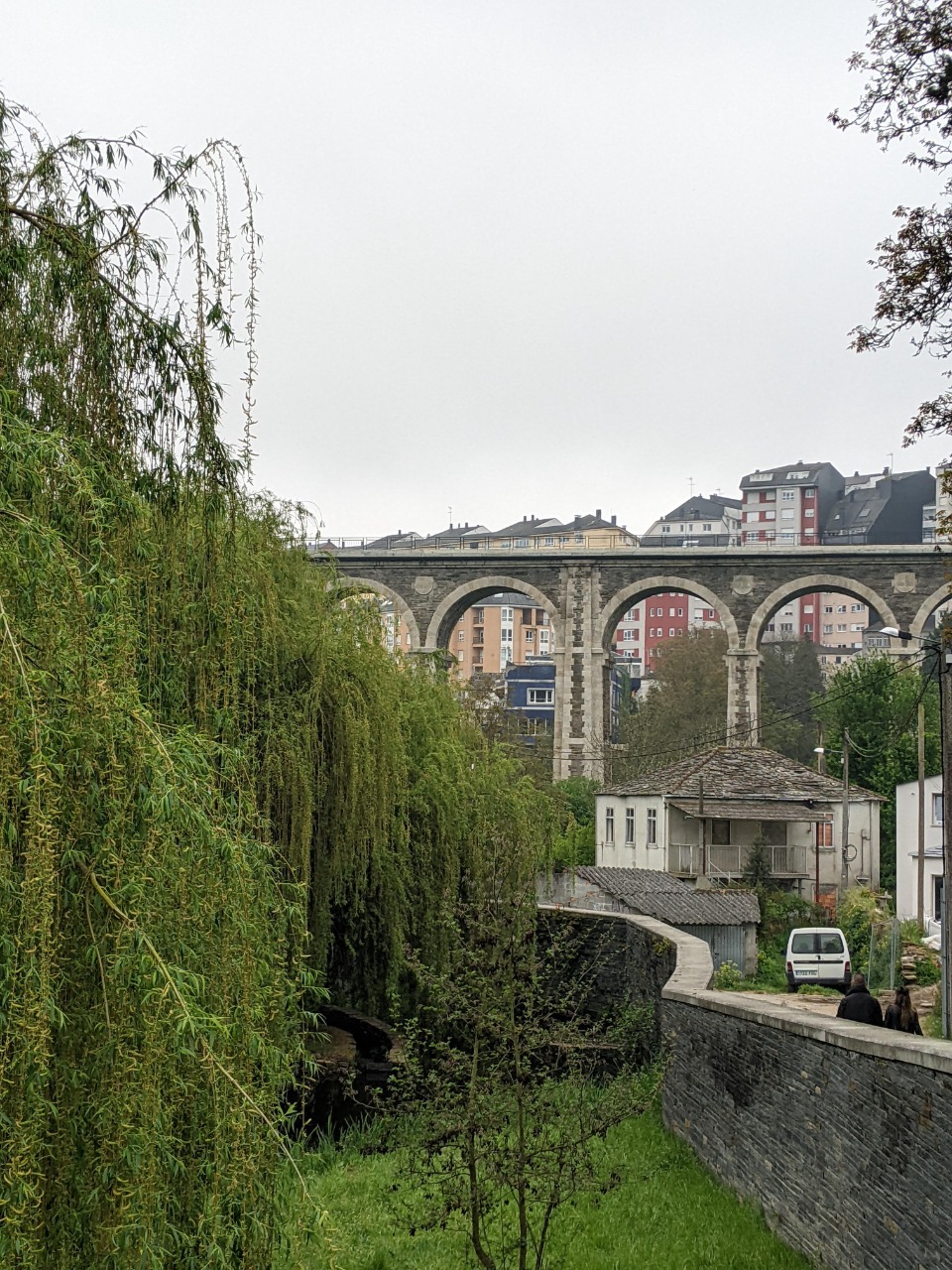
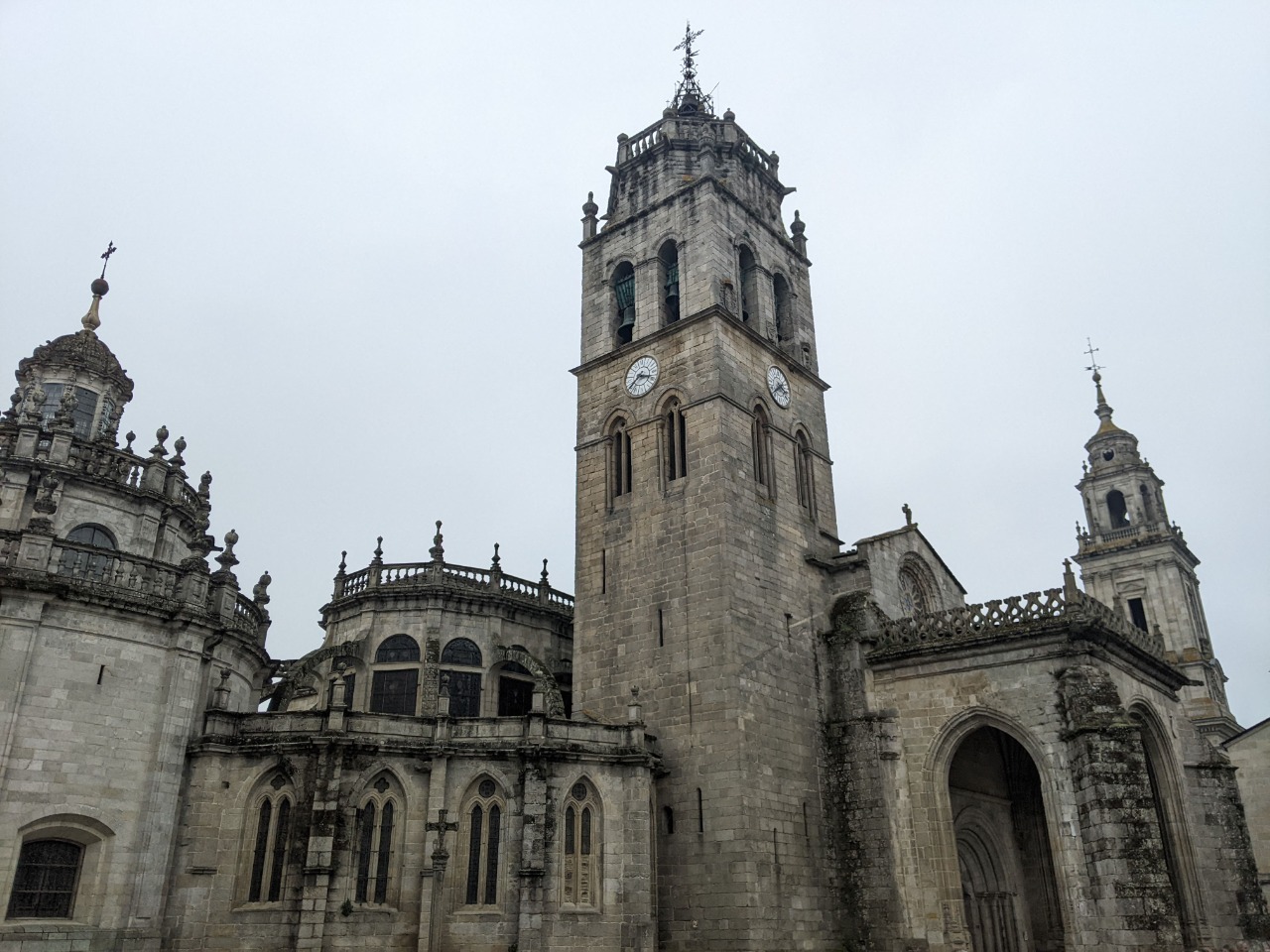
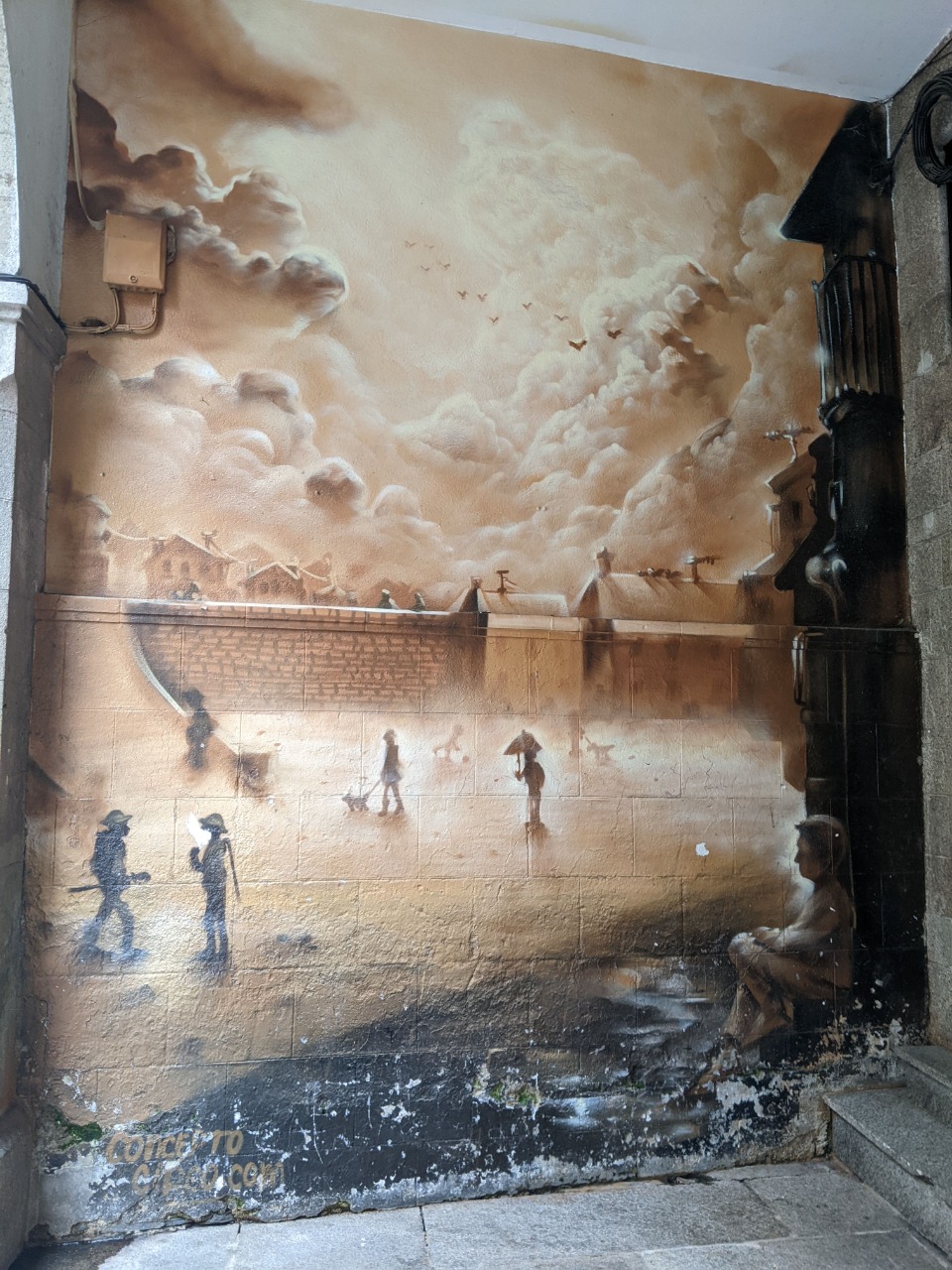
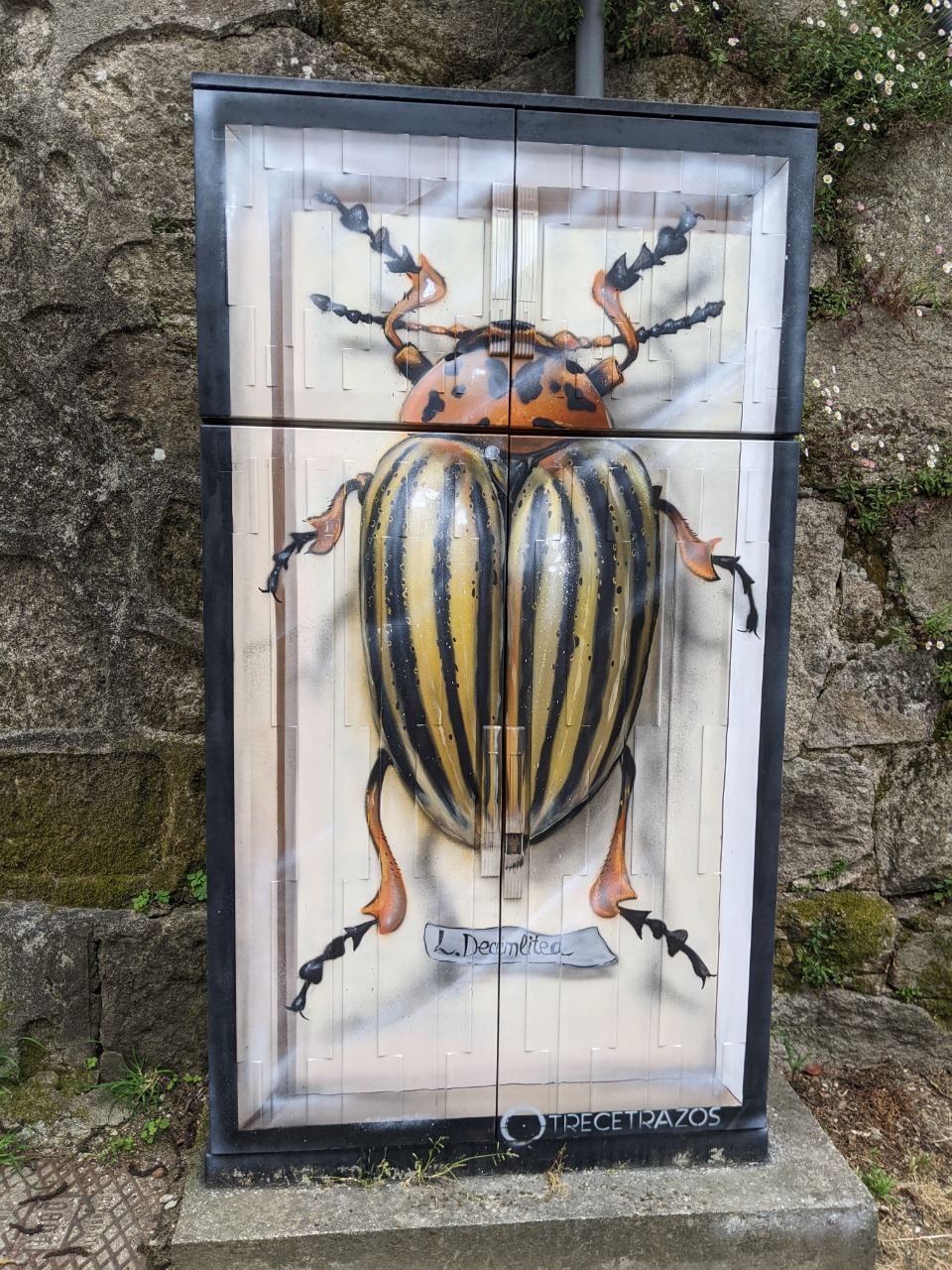
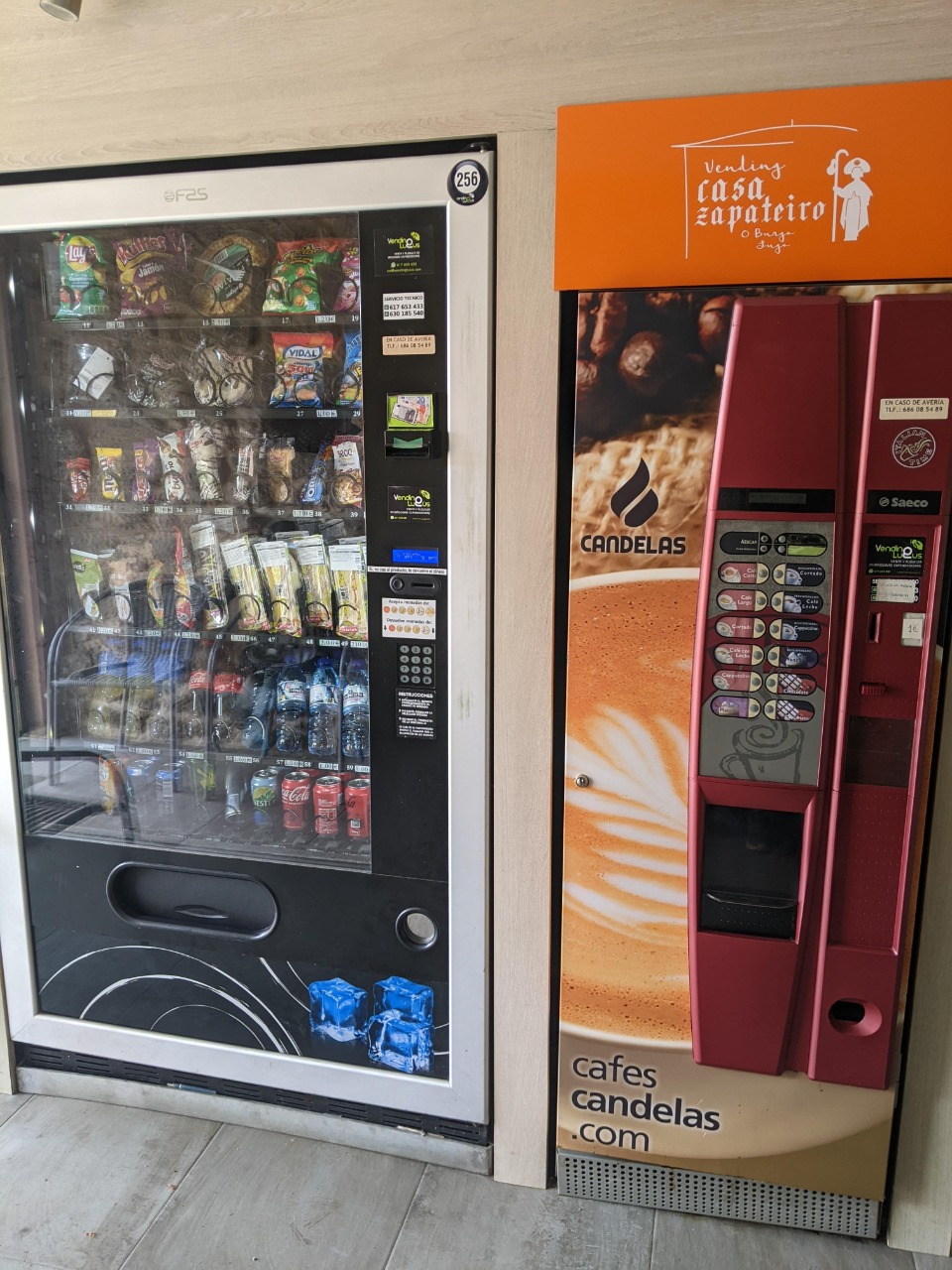
Some days, you happen upon an affordable 3-course menu right around lunchtime. Others, you subsist on a vending machine omelette and two cappuccinos.
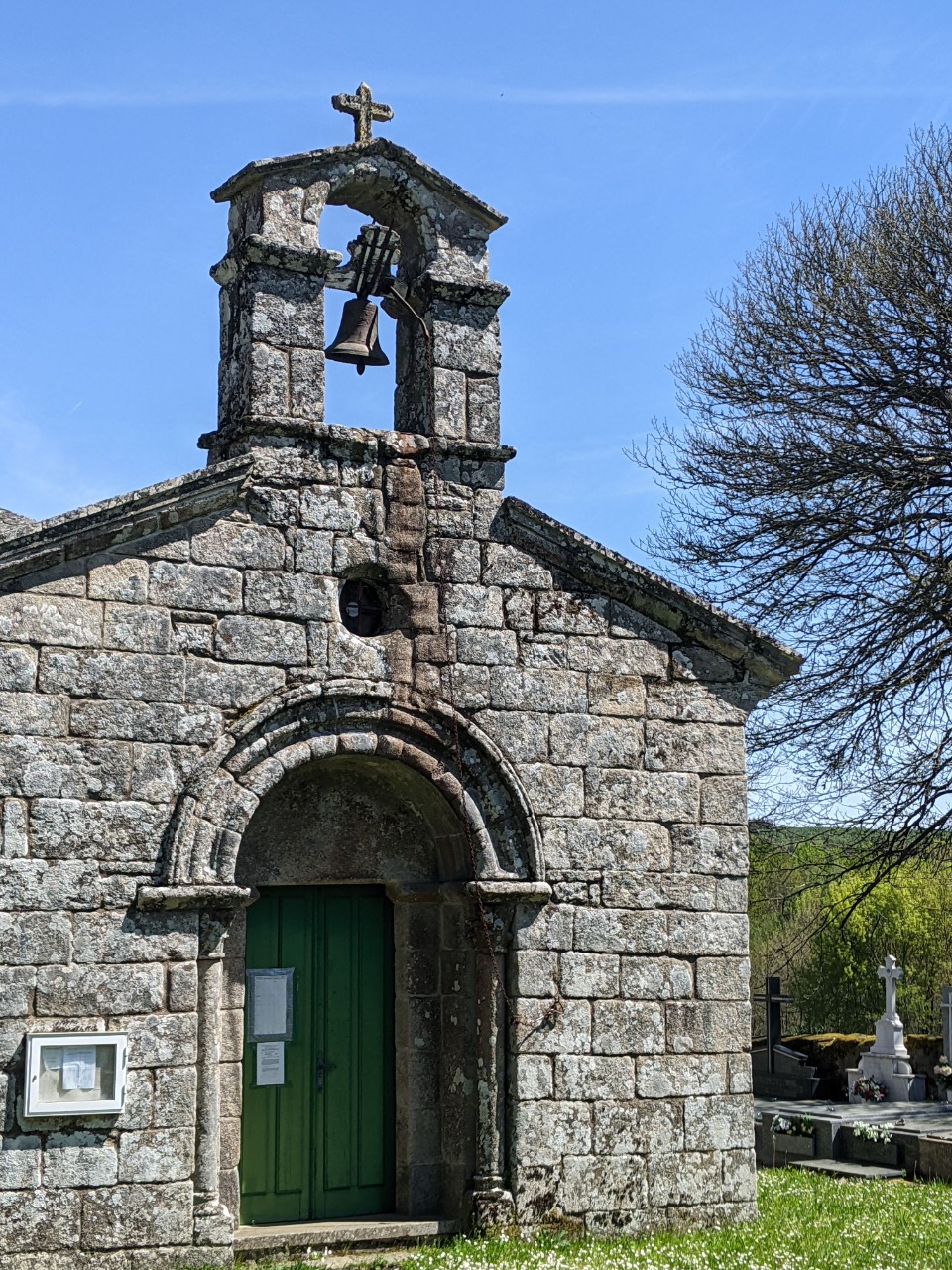
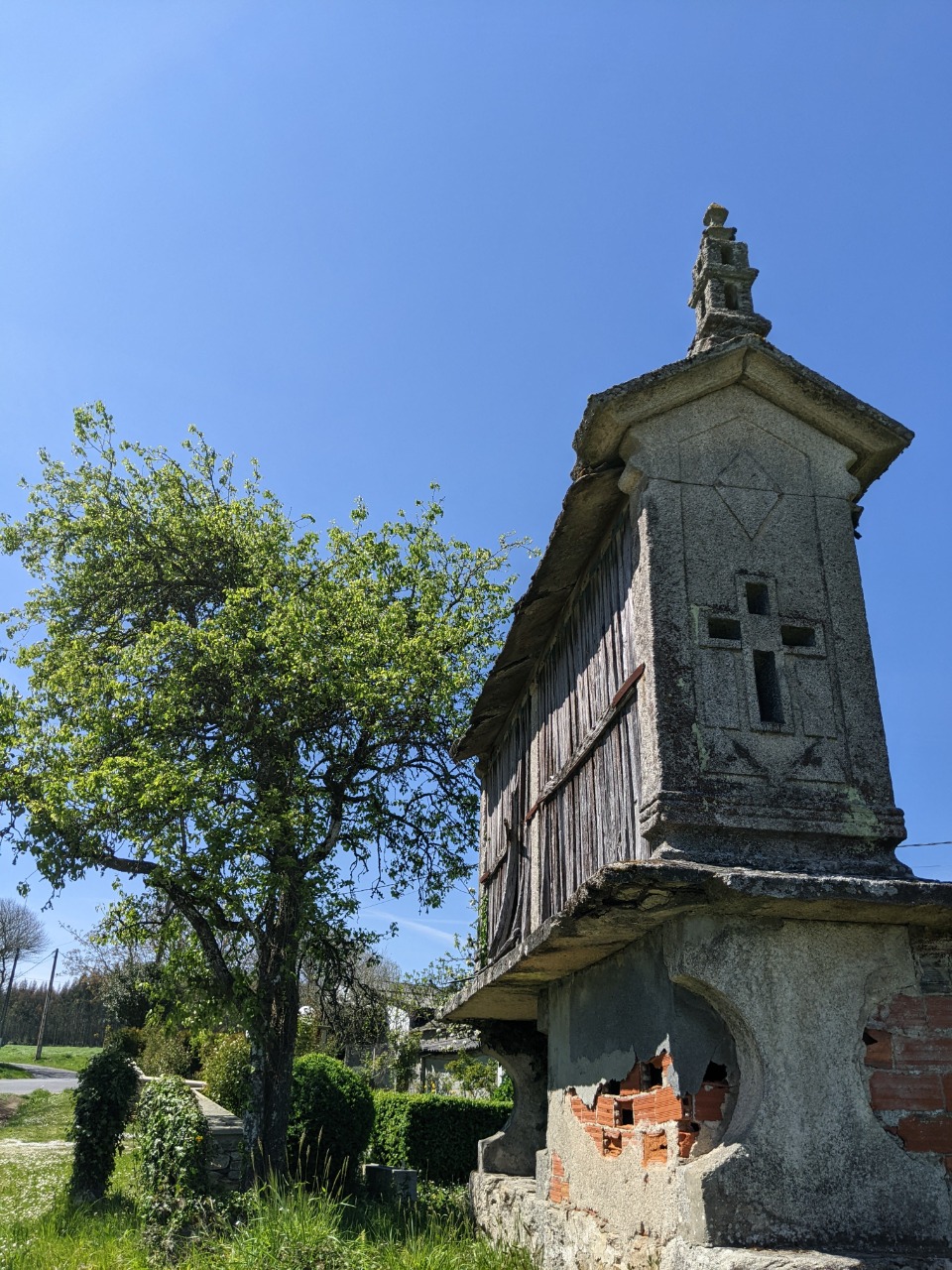
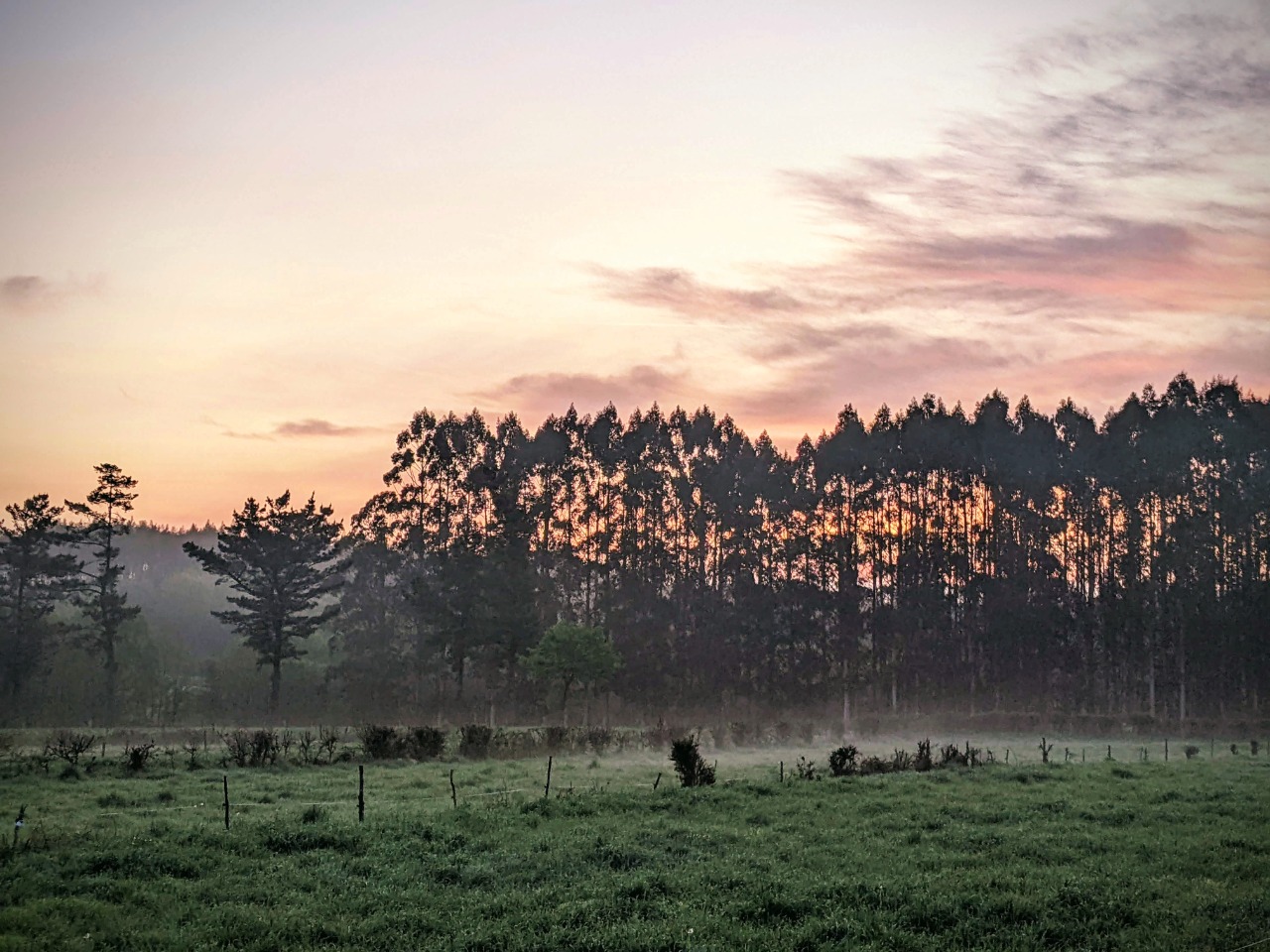
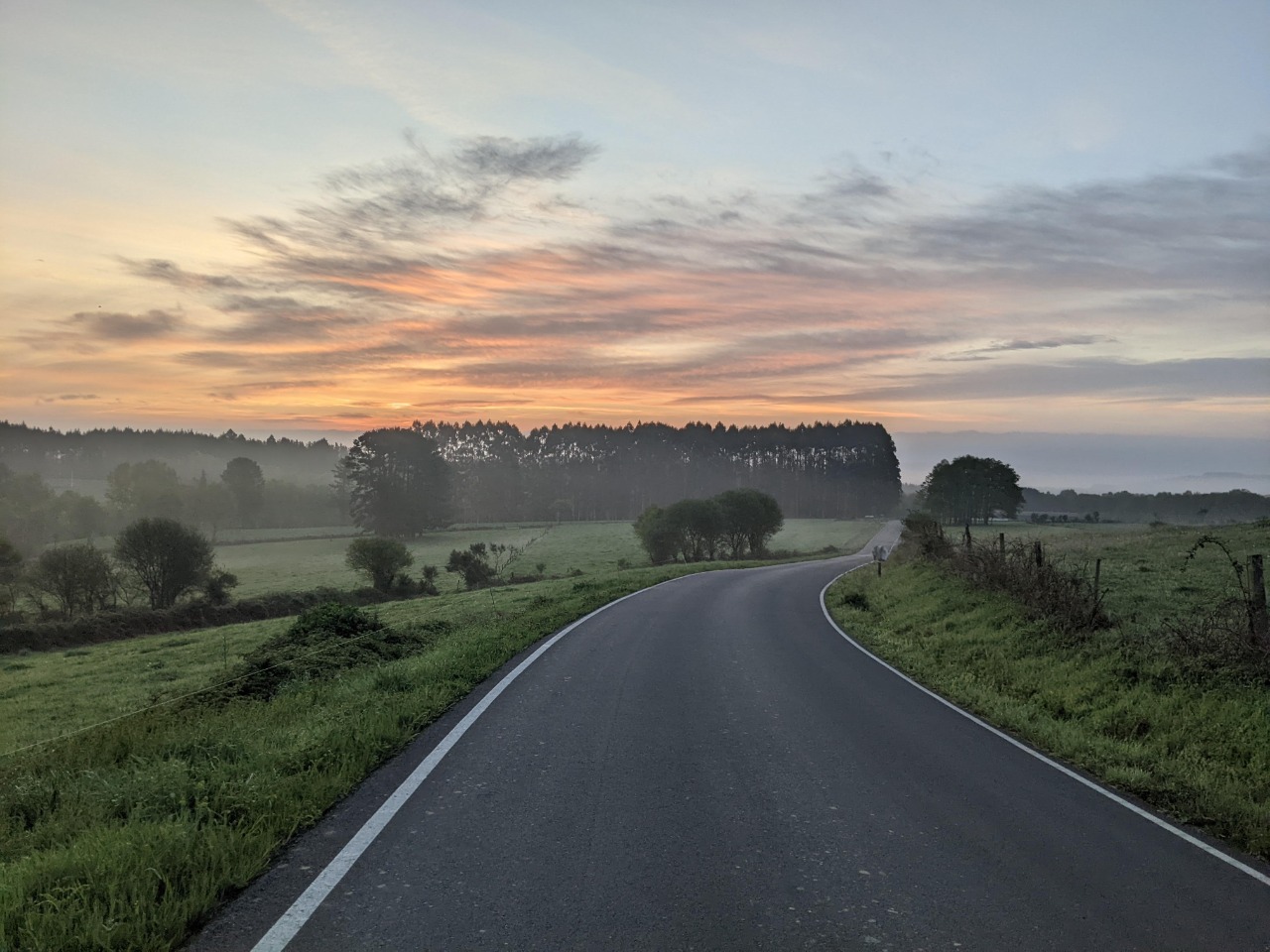
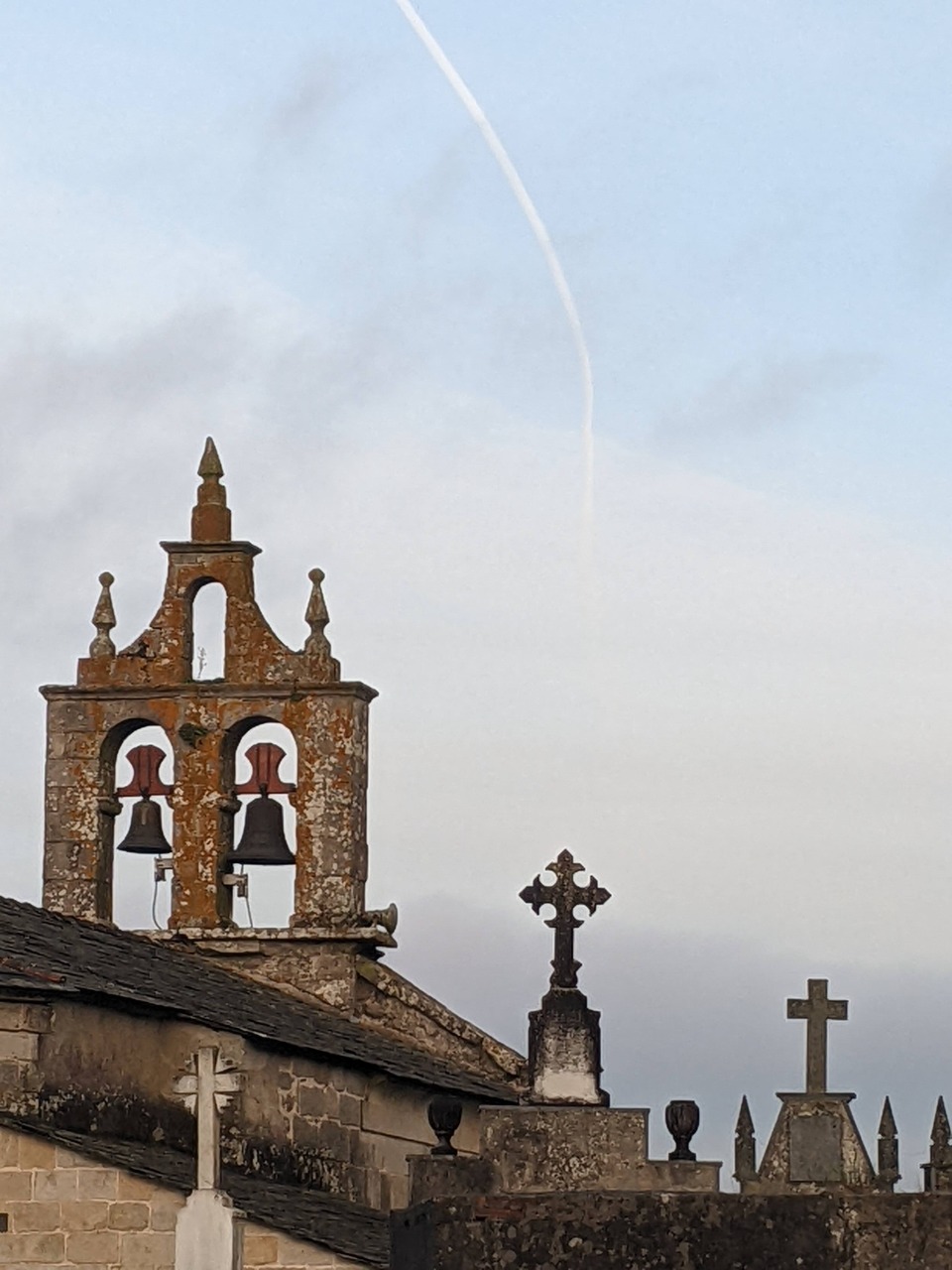
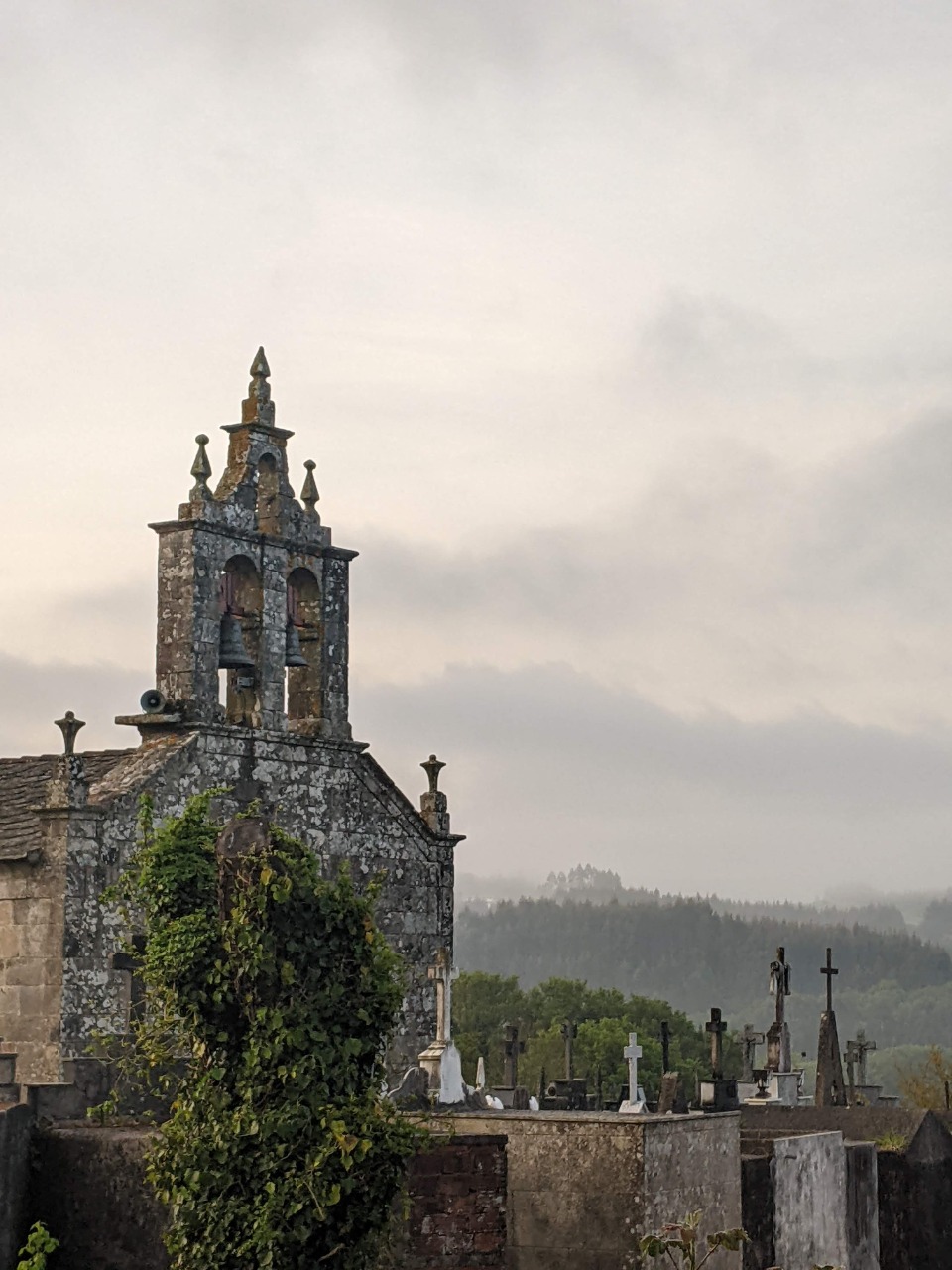
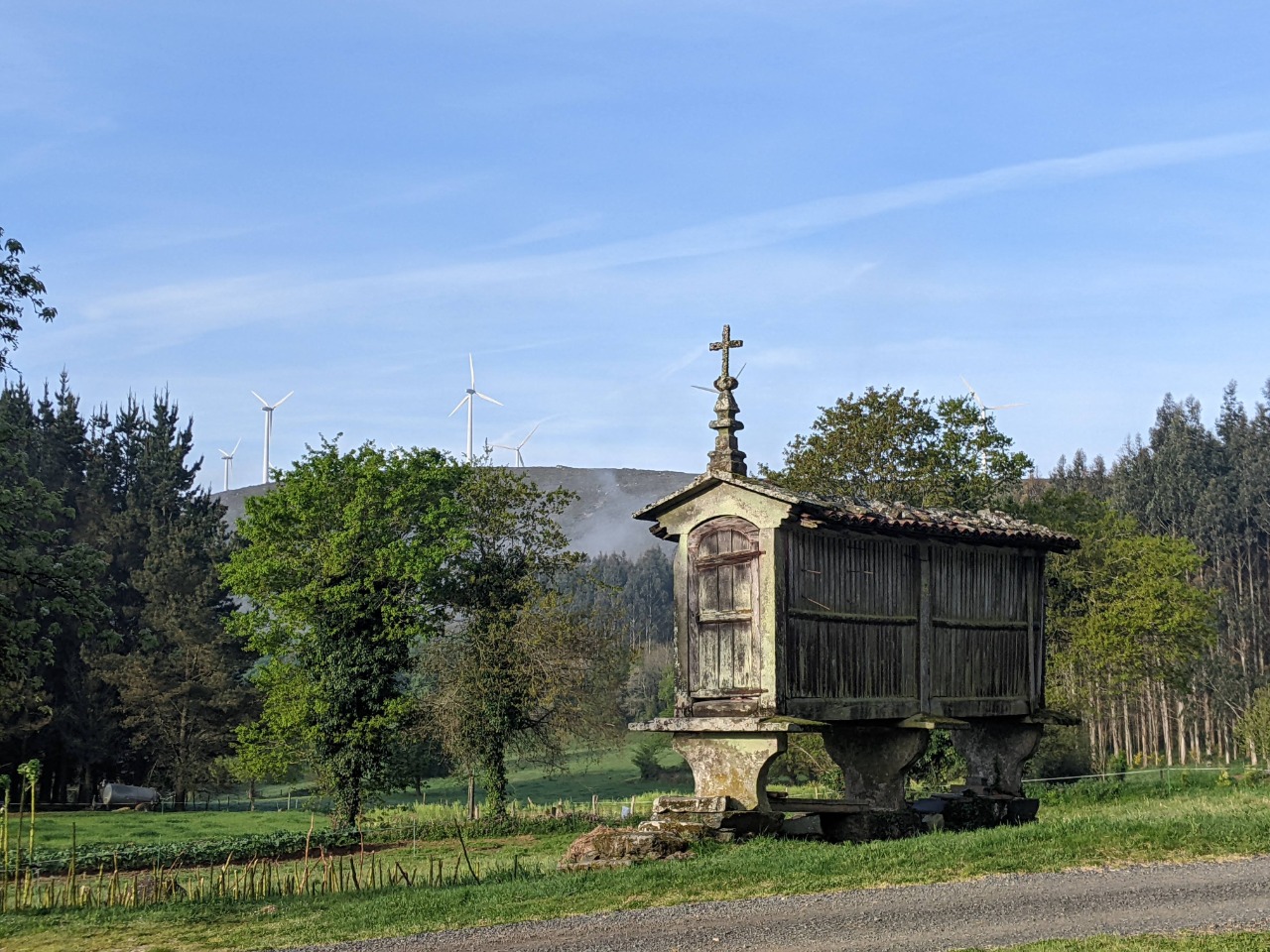
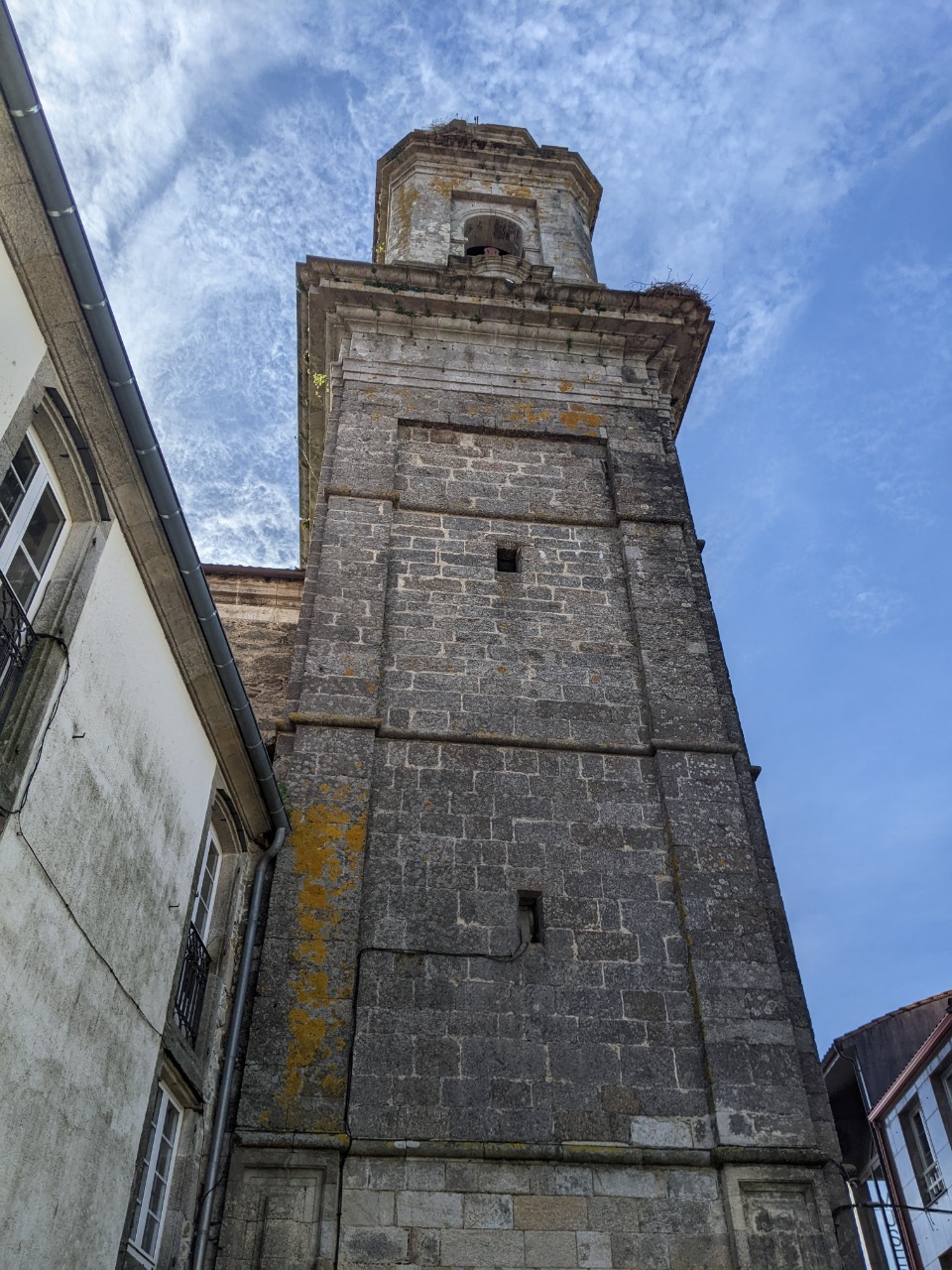
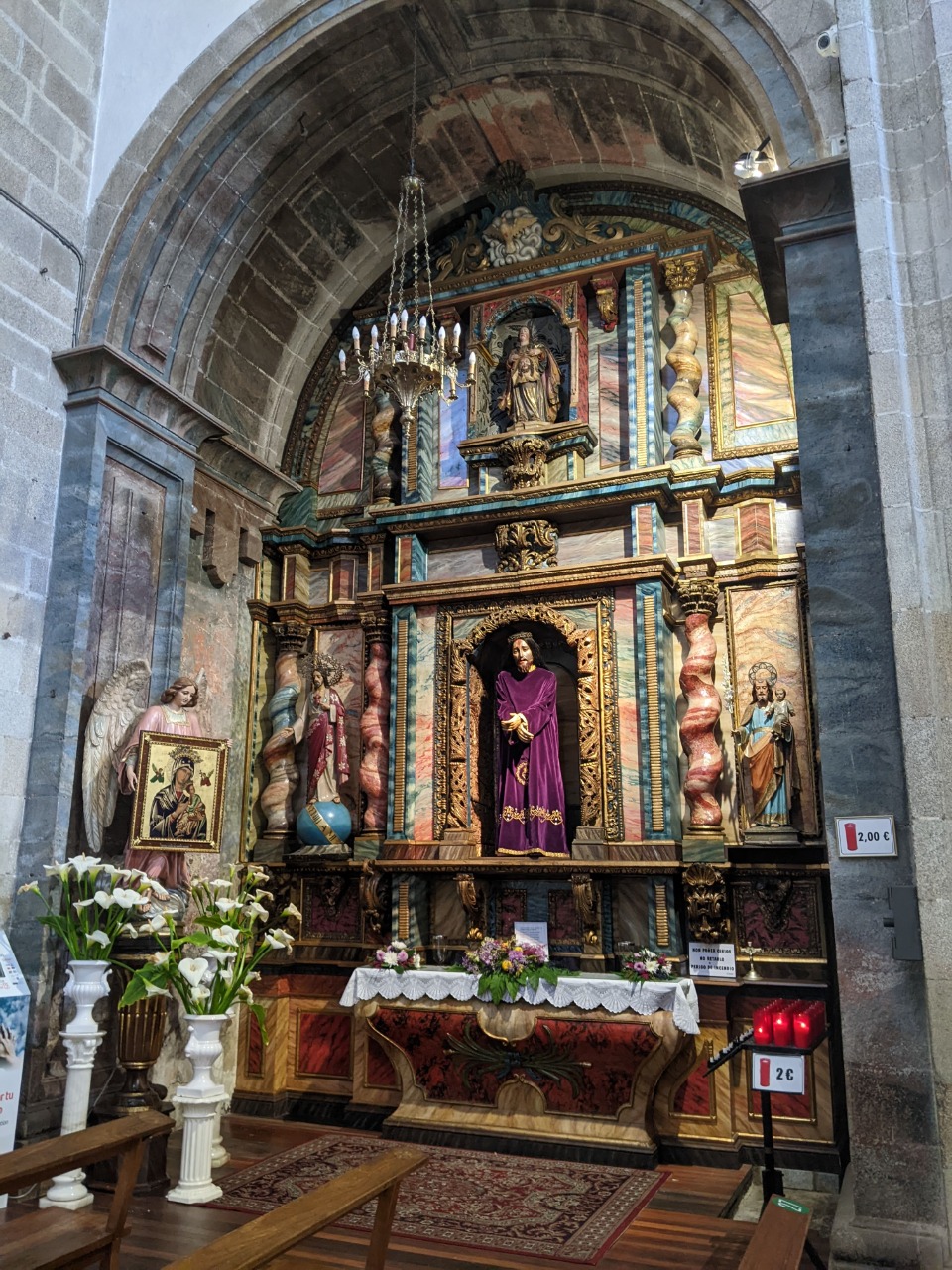
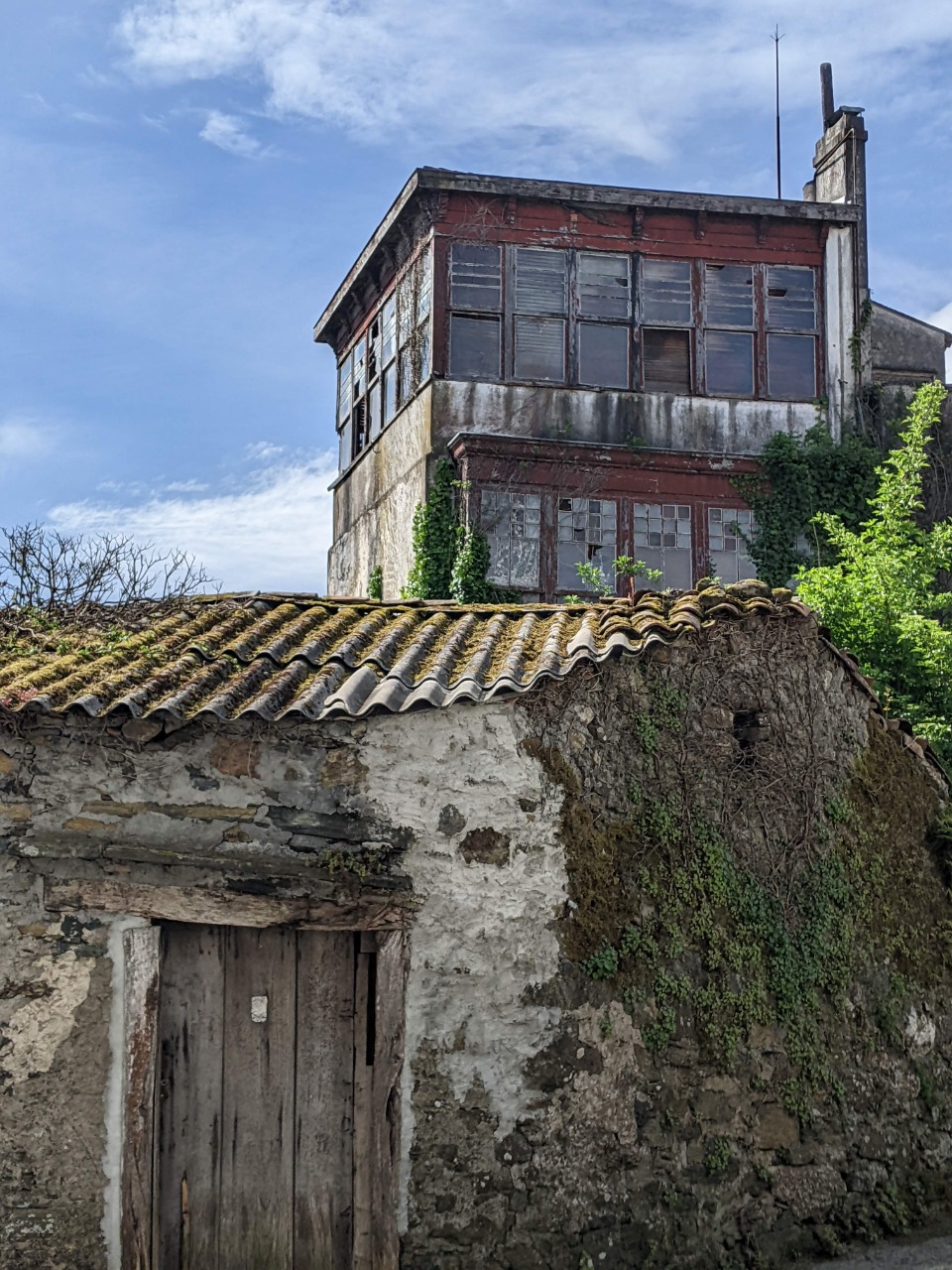
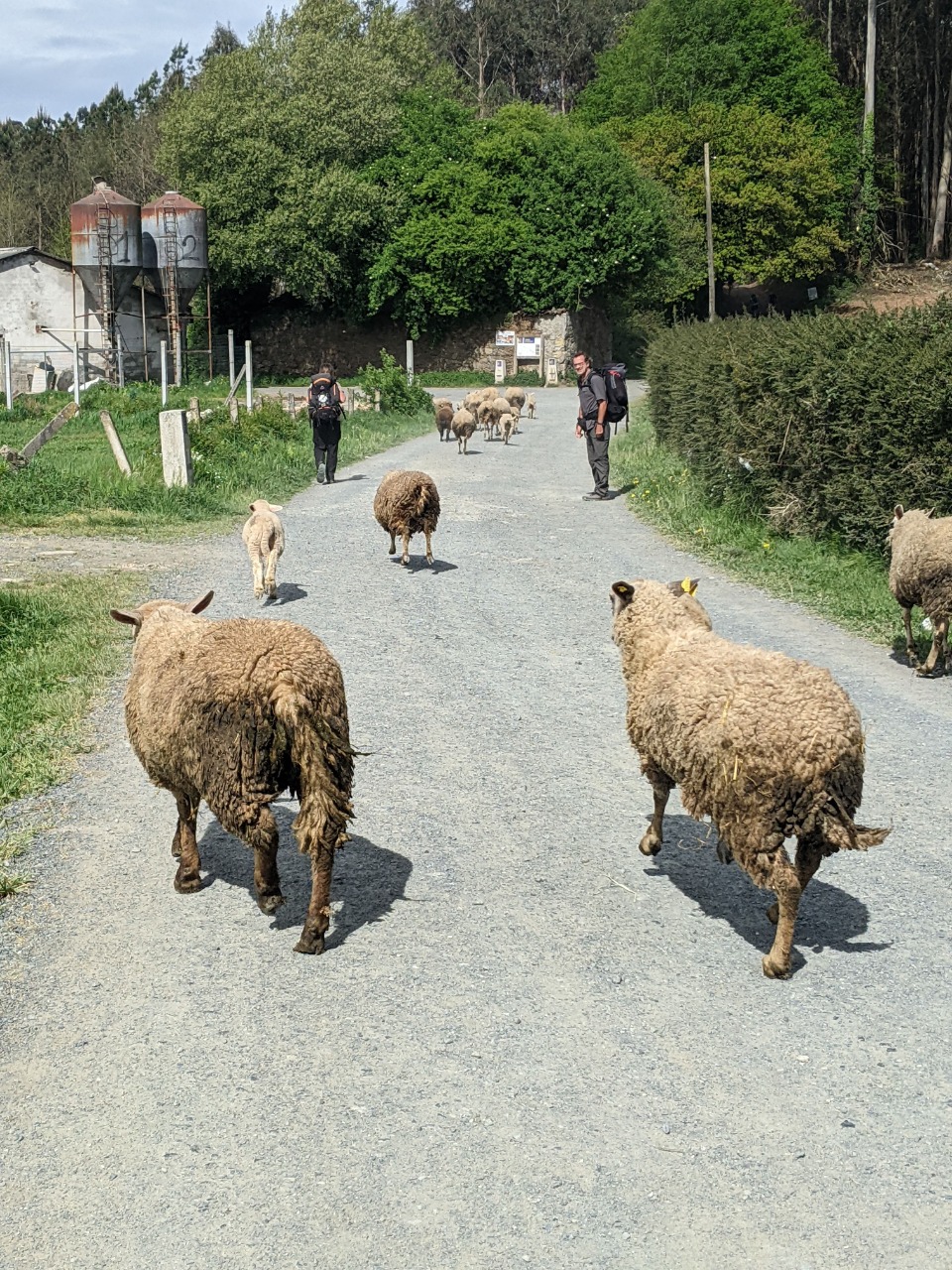
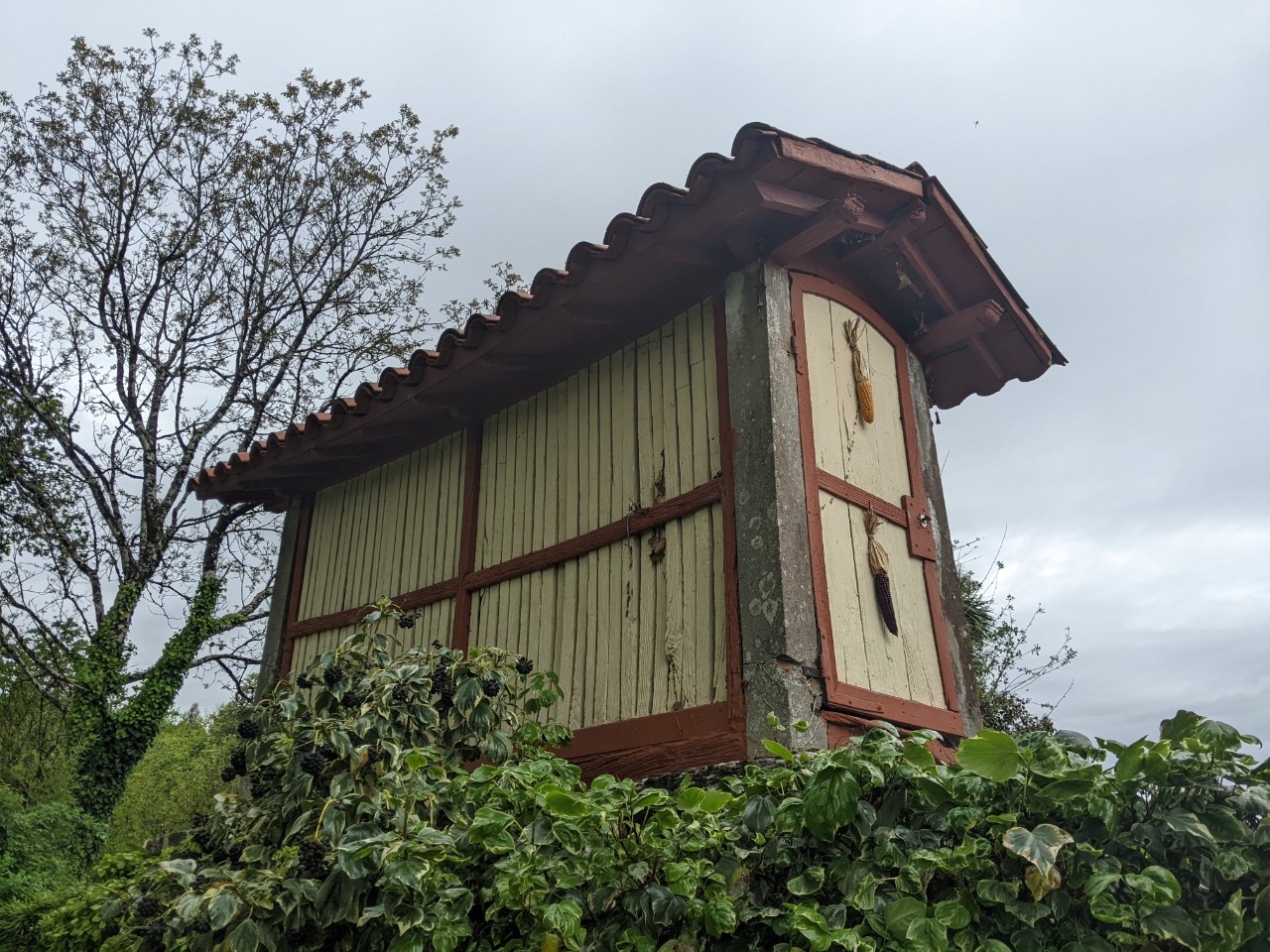
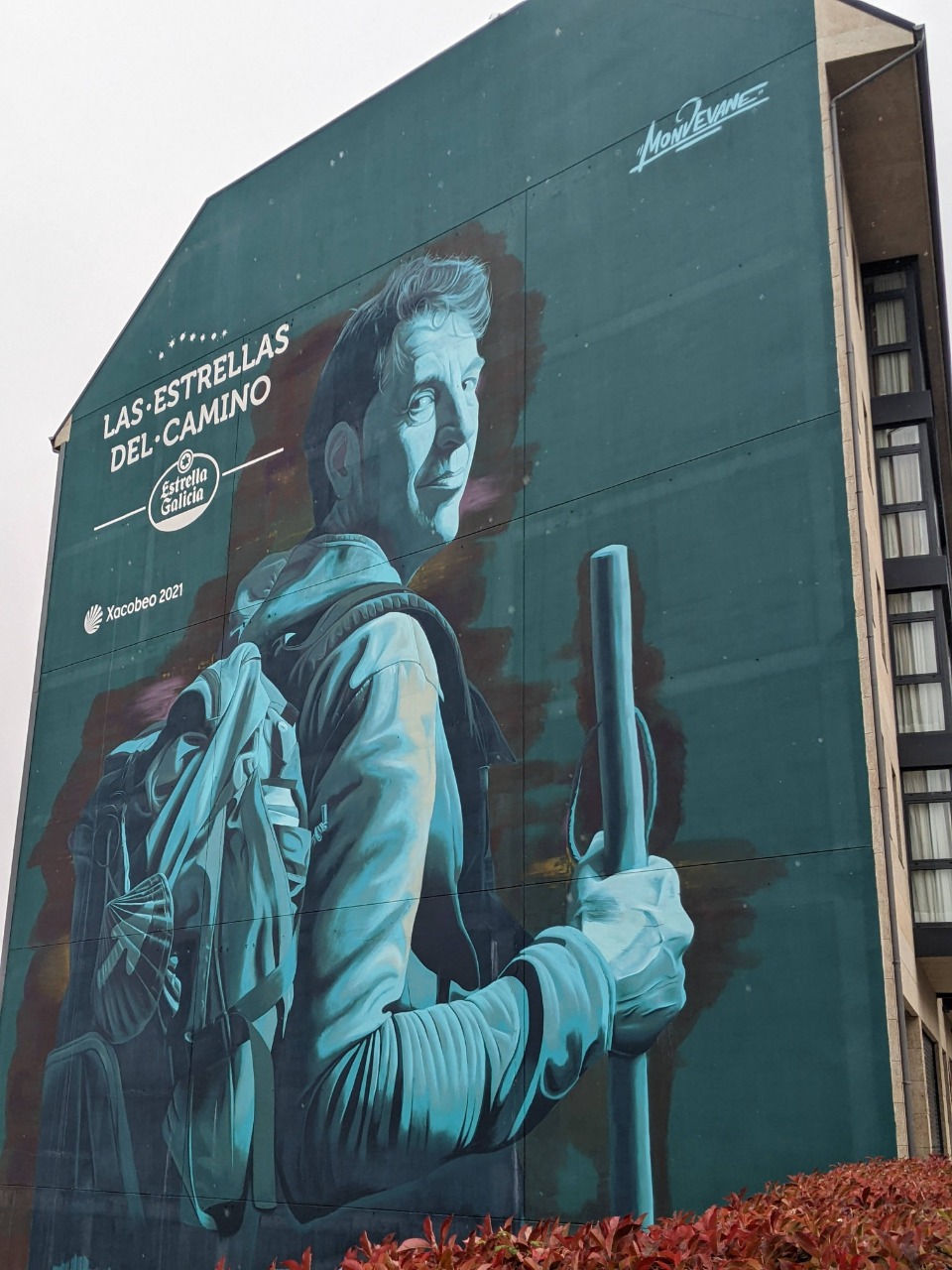
In Arzúa, even the beer ads are targeted at pilgrims.
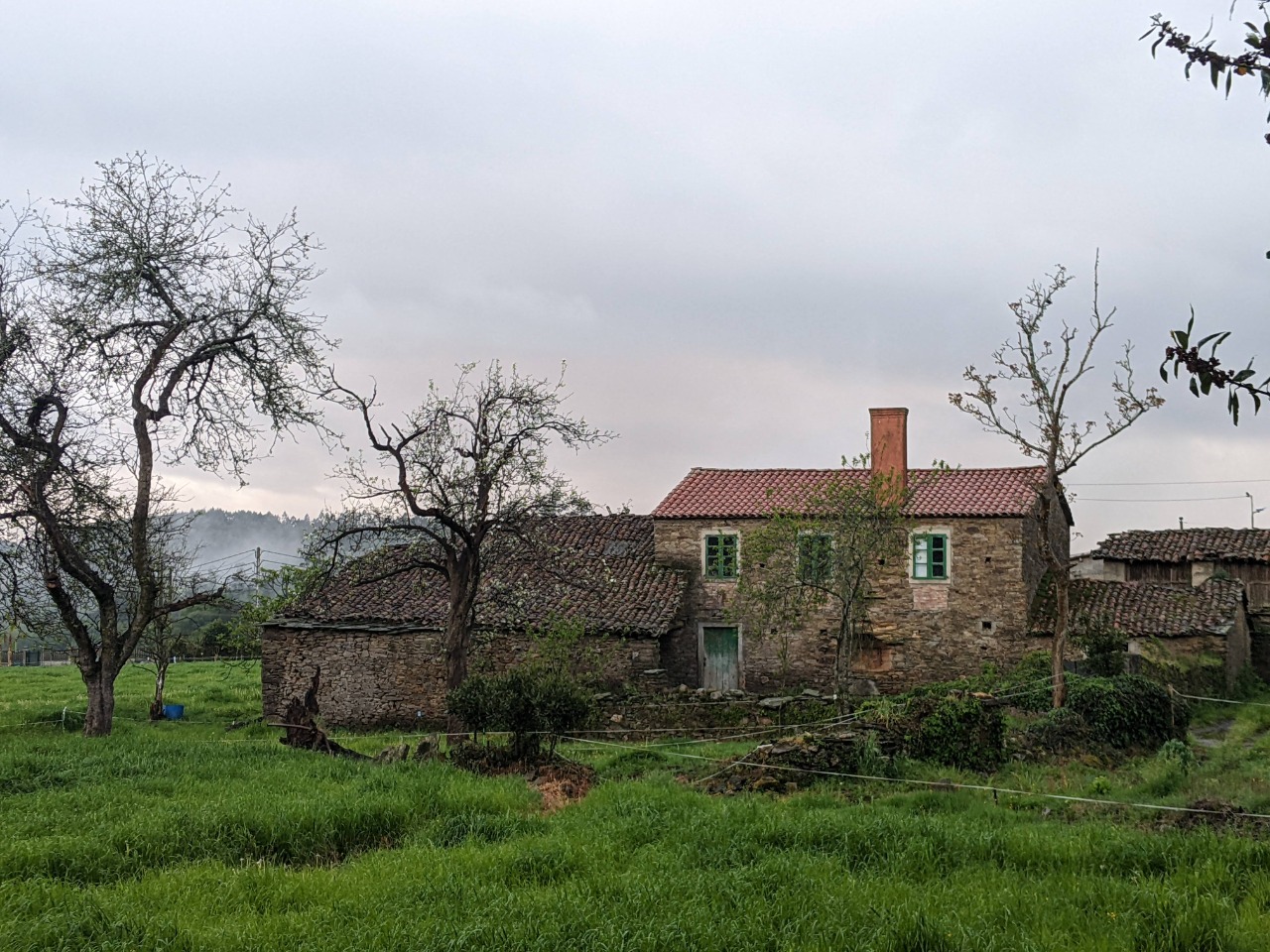
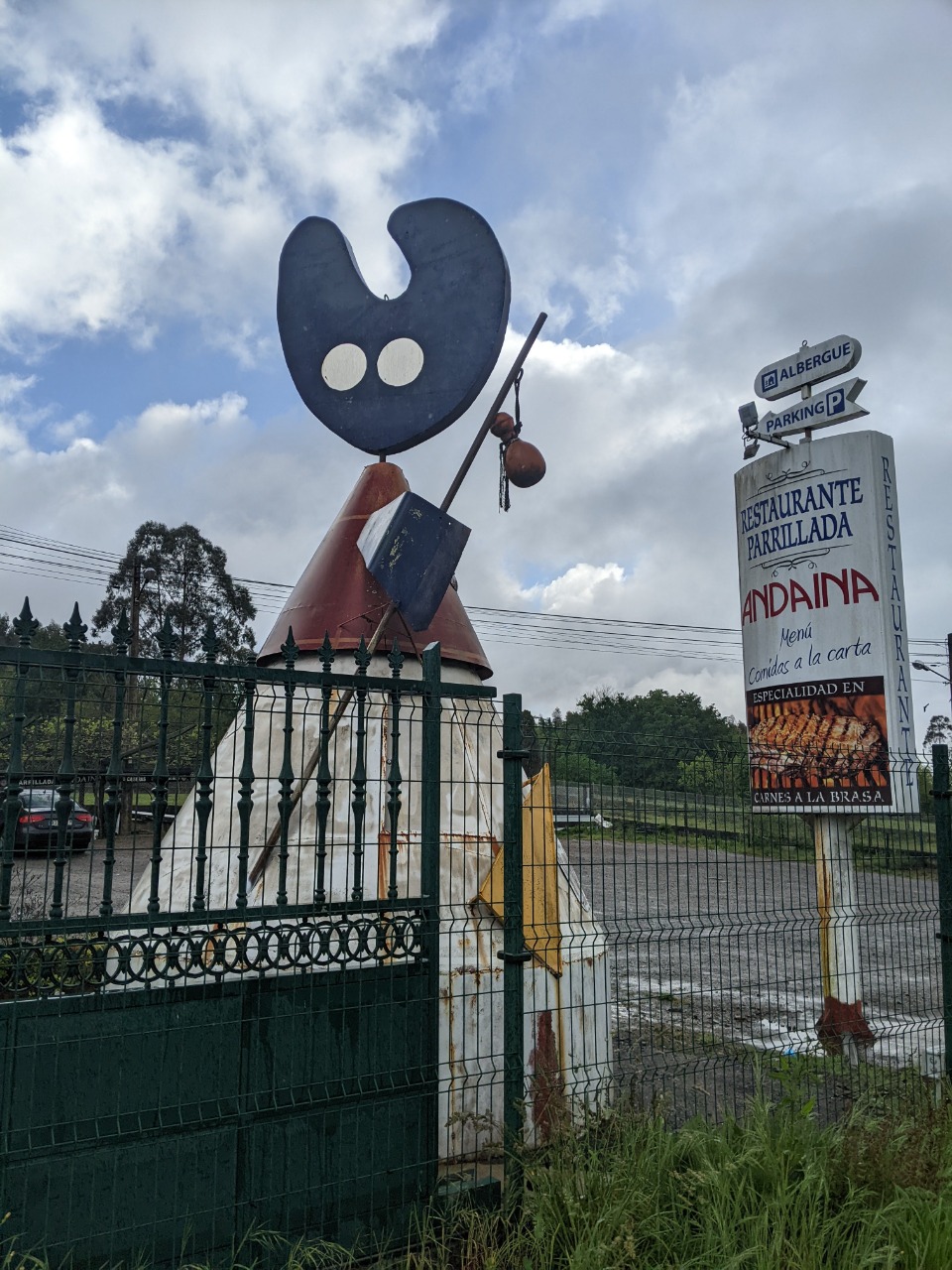
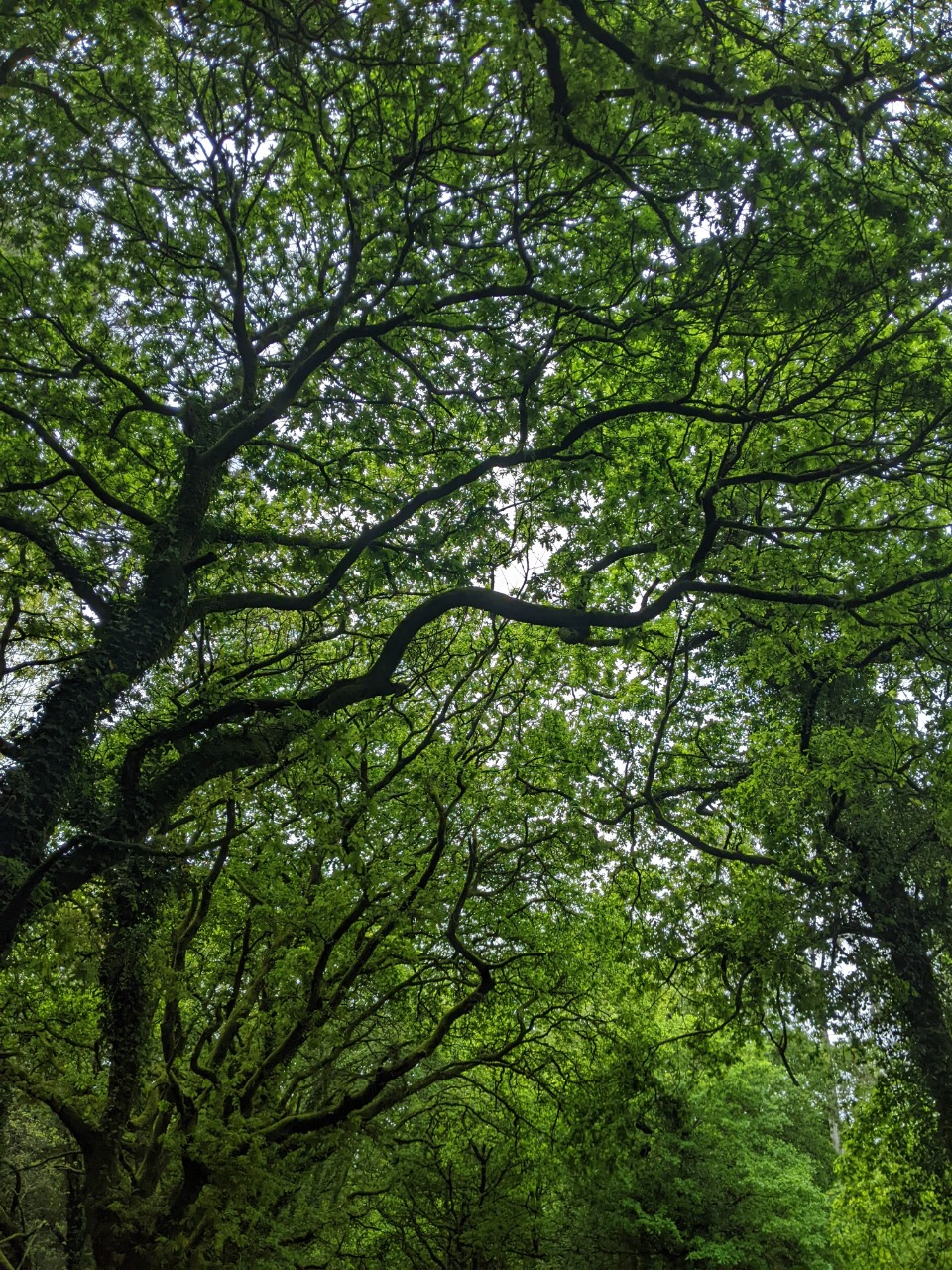
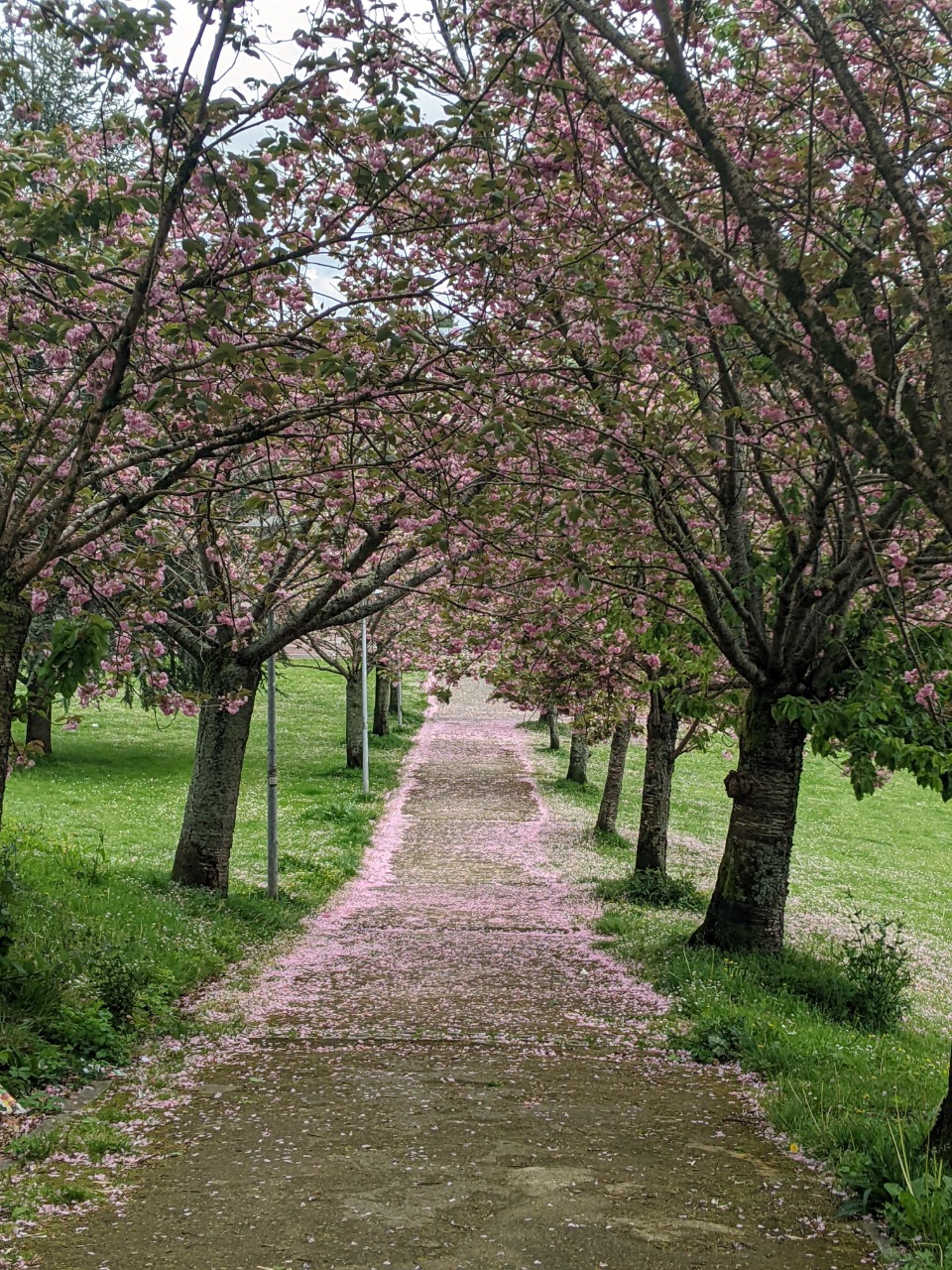

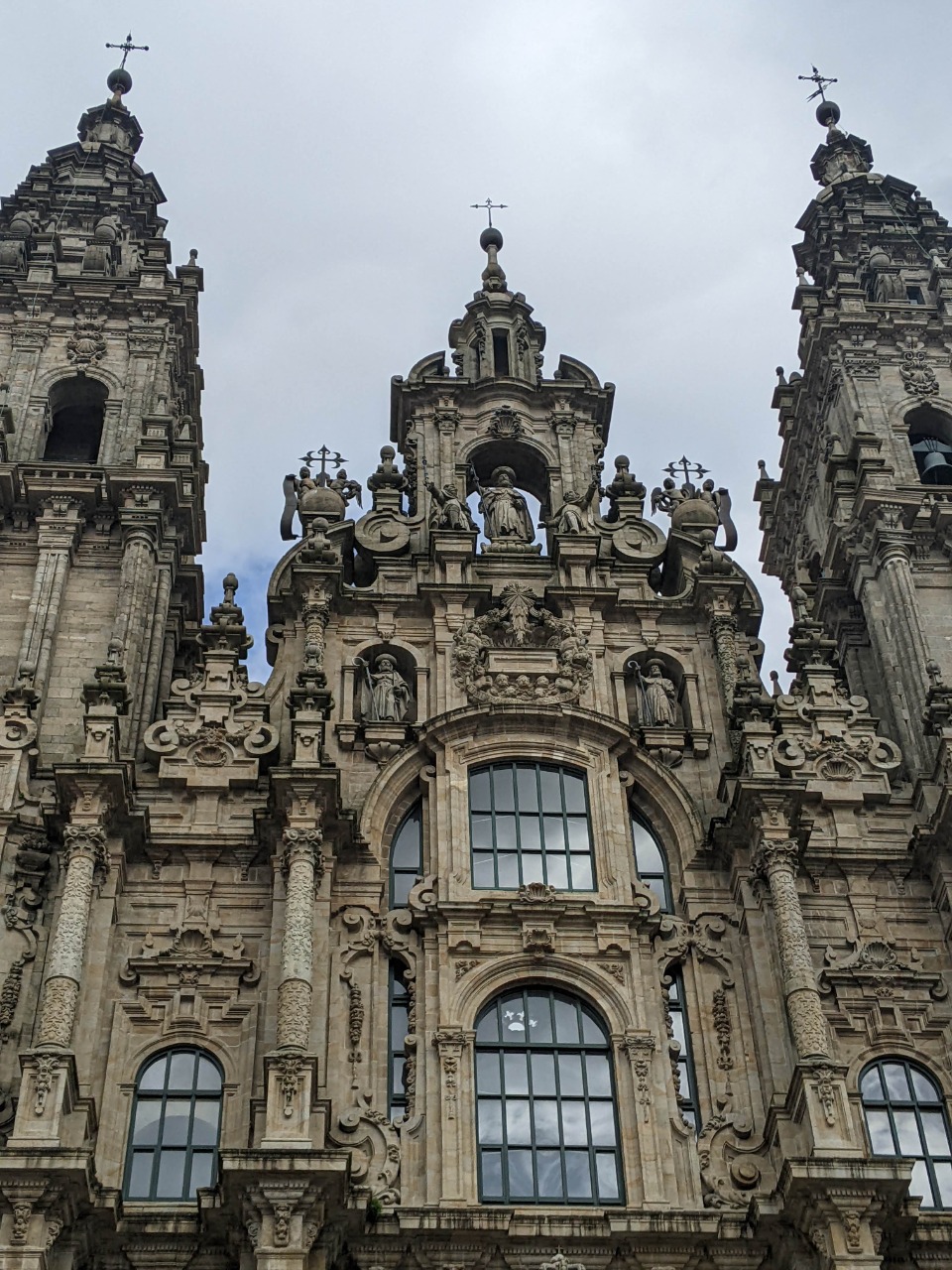
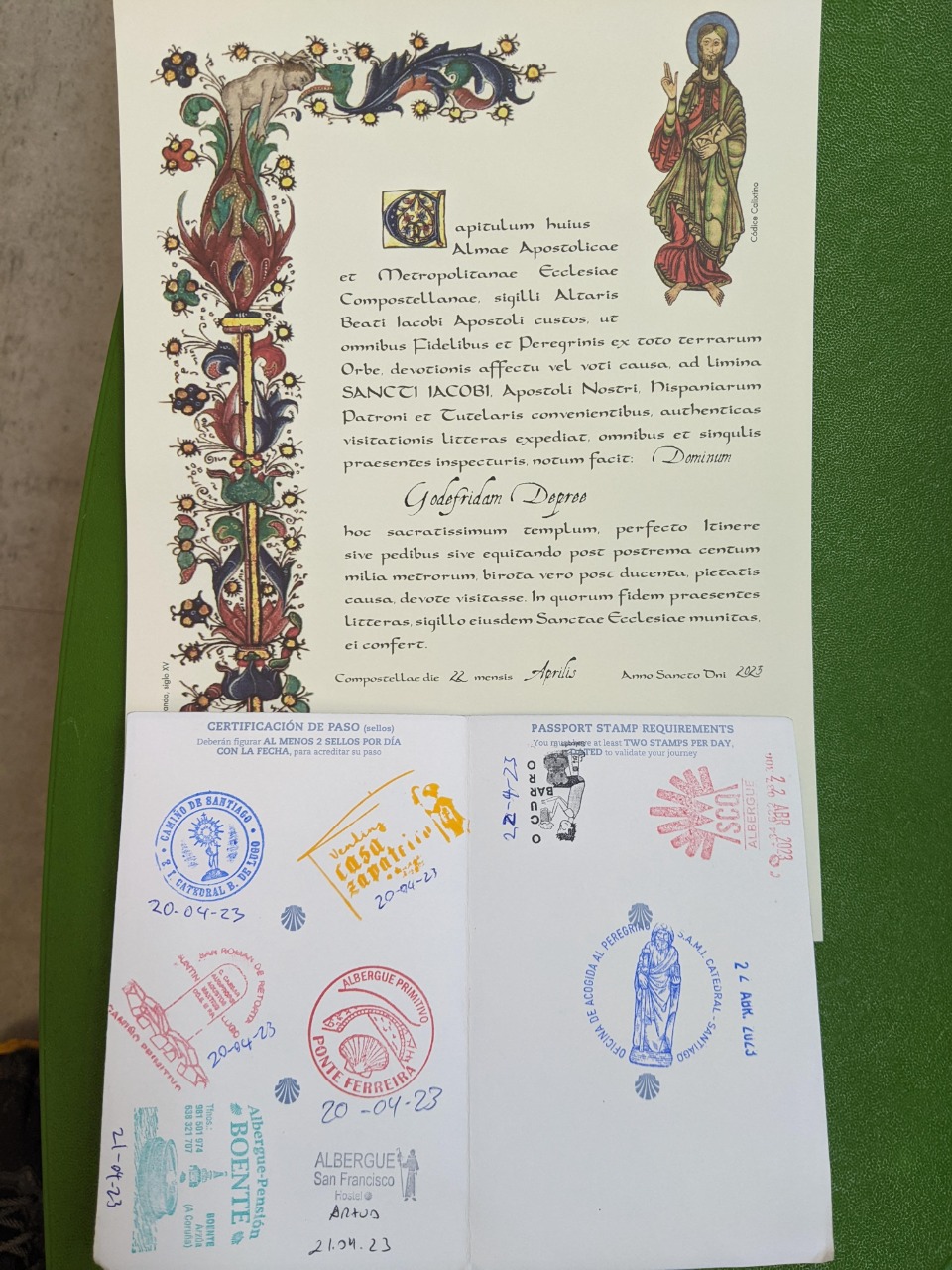
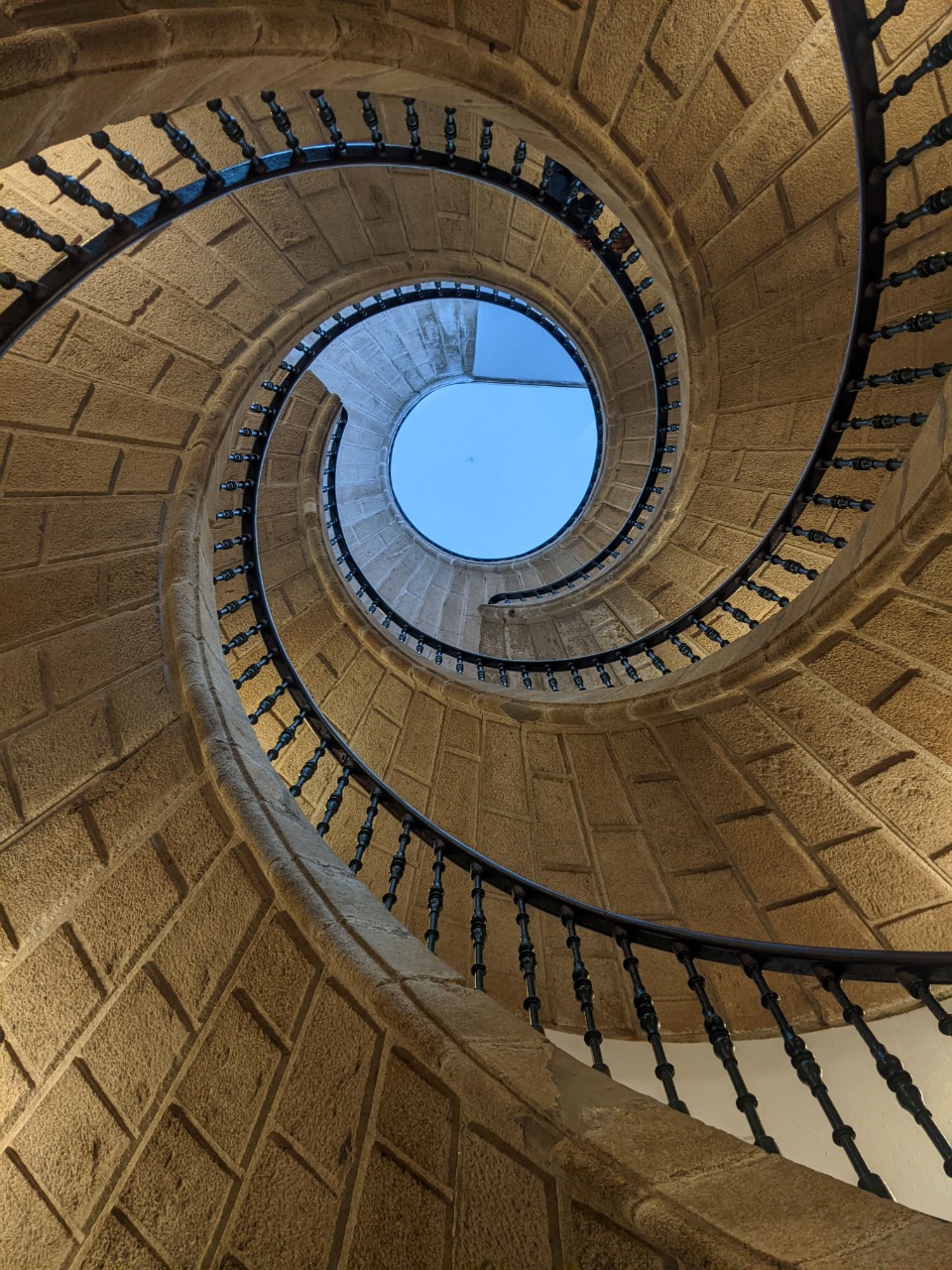
Museo del Pueblo Gallego was maybe the most navigationally confusing museum I've ever visited.
